Forums
- Forums
- Axis And Allies Forum
- General Discussion
- Aviation News
Aviation News
Post a reply
- Go to Previous topic
- Go to Next topic
- Go to Welcome
- Go to Introduce Yourself
- Go to General Discussion
- Go to Screenshots, Images and Videos
- Go to Off topic
- Go to Works in Progress
- Go to Skinning Tips / Tutorials
- Go to Skin Requests
- Go to IJAAF Library
- Go to Luftwaffe Library
- Go to RAF Library
- Go to USAAF / USN Library
- Go to Misc Library
- Go to The Ops Room
- Go to Made in Germany
- Go to Campaigns and Missions
- Go to Works in Progress
- Go to Juri's Air-Raid Shelter
- Go to Campaigns and Missions
- Go to Works in Progress
- Go to Skinpacks
- Go to External Projects Discussion
- Go to Books & Resources
-
 Main AdminADRIATIC SEA (Jan. 15, 2023) An F/A-18E Super Hornet aircraft, attached to Strike Fighter Squadron (VFA) 136, lands on the flight deck of the Nimitz-class aircraft carrier USS George H.W. Bush (CVN 77), Jan. 15, 2023. Carrier Air Wing (CVW) 7 is the offensive air and strike component of Carrier Strike Group (CSG) 10, George H.W. Bush CSG (GHWBCSG). The squadrons of CVW-7 are VFA-86, VFA-103, VFA-136, VFA-143, Electronic Attack Squadron (VAQ) 140, Carrier Airborne Early Warning Squadron (VAW) 121, Helicopter Sea Combat Squadron (HSC) 5, and Helicopter Maritime Strike Squadron (HSM) 46. The George H.W. Bush CSG is on a scheduled deployment in the U.S. Naval Forces Europe area of operations, employed by U.S. Sixth Fleet to defend U.S., allied, and partner interests. (U.S. Navy photo by Mass Communication Specialist 3rd Class Chandler Ludke)
Main AdminADRIATIC SEA (Jan. 15, 2023) An F/A-18E Super Hornet aircraft, attached to Strike Fighter Squadron (VFA) 136, lands on the flight deck of the Nimitz-class aircraft carrier USS George H.W. Bush (CVN 77), Jan. 15, 2023. Carrier Air Wing (CVW) 7 is the offensive air and strike component of Carrier Strike Group (CSG) 10, George H.W. Bush CSG (GHWBCSG). The squadrons of CVW-7 are VFA-86, VFA-103, VFA-136, VFA-143, Electronic Attack Squadron (VAQ) 140, Carrier Airborne Early Warning Squadron (VAW) 121, Helicopter Sea Combat Squadron (HSC) 5, and Helicopter Maritime Strike Squadron (HSM) 46. The George H.W. Bush CSG is on a scheduled deployment in the U.S. Naval Forces Europe area of operations, employed by U.S. Sixth Fleet to defend U.S., allied, and partner interests. (U.S. Navy photo by Mass Communication Specialist 3rd Class Chandler Ludke)
ADRIATIC SEA (Jan. 15, 2023) An F/A-18F Super Hornet aircraft, attached to Strike Fighter Squadron (VFA) 103, lands on the flight deck of the Nimitz-class aircraft carrier USS George H.W. Bush (CVN 77) during a change of command ceremony, Jan. 15, 2023. During the ceremony, Cmdr. Jeffrey Creighan will relieve Cmdr. Jason Papadopoulos as commanding officer of VFA-103. Carrier Air Wing (CVW) 7 is the offensive air and strike component of Carrier Strike Group (CSG) 10, George H.W. Bush CSG. The squadrons of CVW-7 are VFA-86, VFA-103, VFA-136, VFA-143, Electronic Attack Squadron (VAQ) 140, Carrier Airborne Early Warning Squadron (VAW) 121, Helicopter Sea Combat Squadron (HSC) 5, and Helicopter Maritime Strike Squadron (HSM) 46. The George H.W. Bush CSG is on a scheduled deployment in the U.S. Naval Forces Europe area of operations, employed by U.S. Sixth Fleet to defend U.S., allied, and partner interests. (U.S. Navy photo by Mass Communication Specialist 3rd Class Chandler Ludke)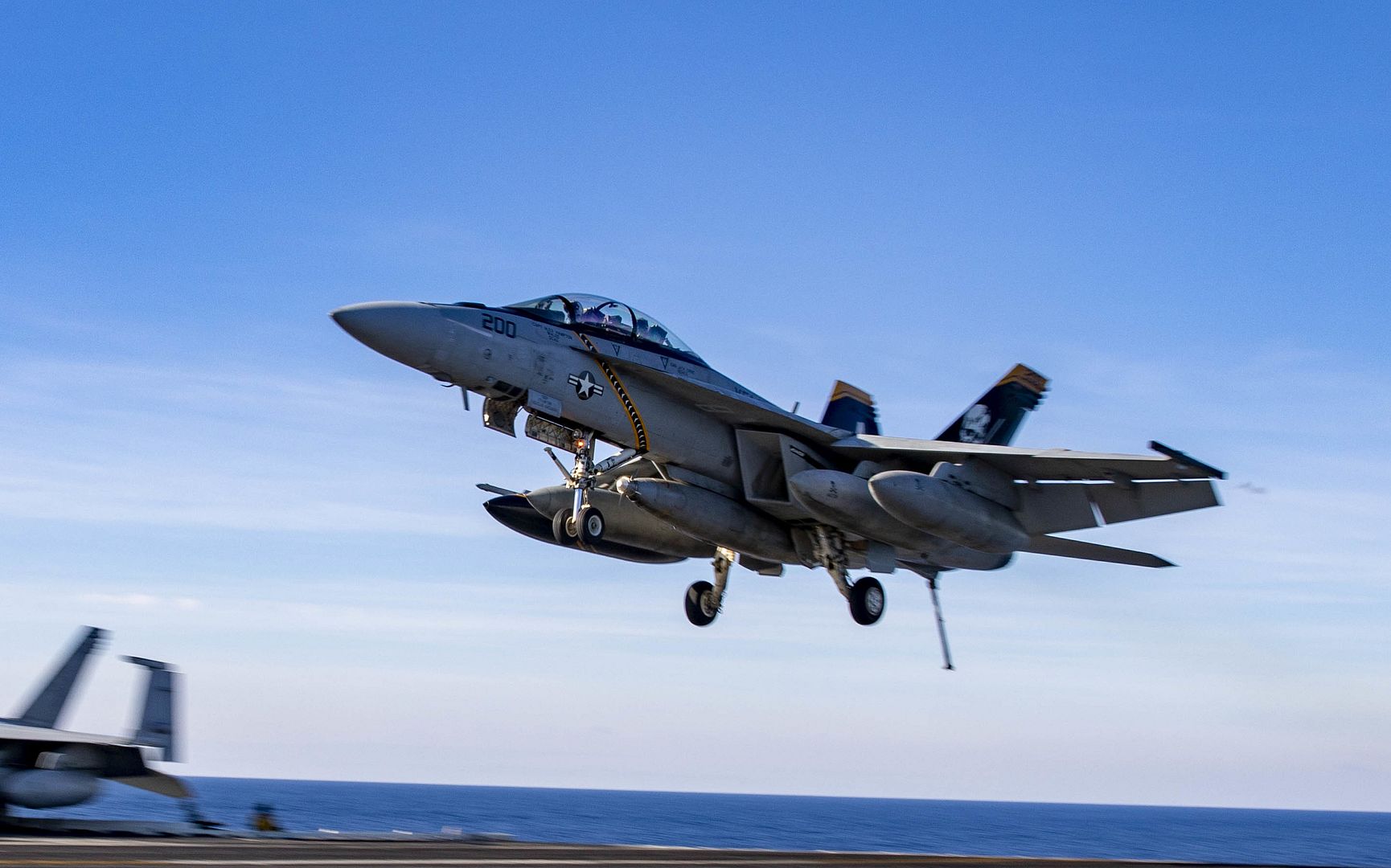
ADRIATIC SEA (Jan. 15, 2023) An F/A-18F Super Hornet aircraft, attached to Strike Fighter Squadron (VFA) 103, launches off the flight deck of the Nimitz-class aircraft carrier USS George H.W. Bush (CVN 77) for a change of command ceremony, Jan. 15, 2023. During the ceremony, Cmdr. Jeffrey Creighan relieved Cmdr. Jason Papadopoulos as commanding officer of VFA-103. Carrier Air Wing (CVW) 7 is the offensive air and strike component of Carrier Strike Group (CSG) 10, George H.W. Bush CSG. The squadrons of
CVW-7 are VFA-86, VFA-103, VFA-136, VFA-143, Electronic Attack Squadron (VAQ) 140, Carrier Airborne Early Warning Squadron (VAW) 121, Helicopter Sea Combat Squadron (HSC) 5, and Helicopter Maritime Strike Squadron (HSM) 46. The George H.W. Bush CSG is on a scheduled deployment in the U.S. Naval Forces Europe area of operations, employed by U.S. Sixth Fleet to defend U.S., allied, and partner interests. (U.S. Navy photo by Mass Communication Specialist 3rd Class Nicholas Avis)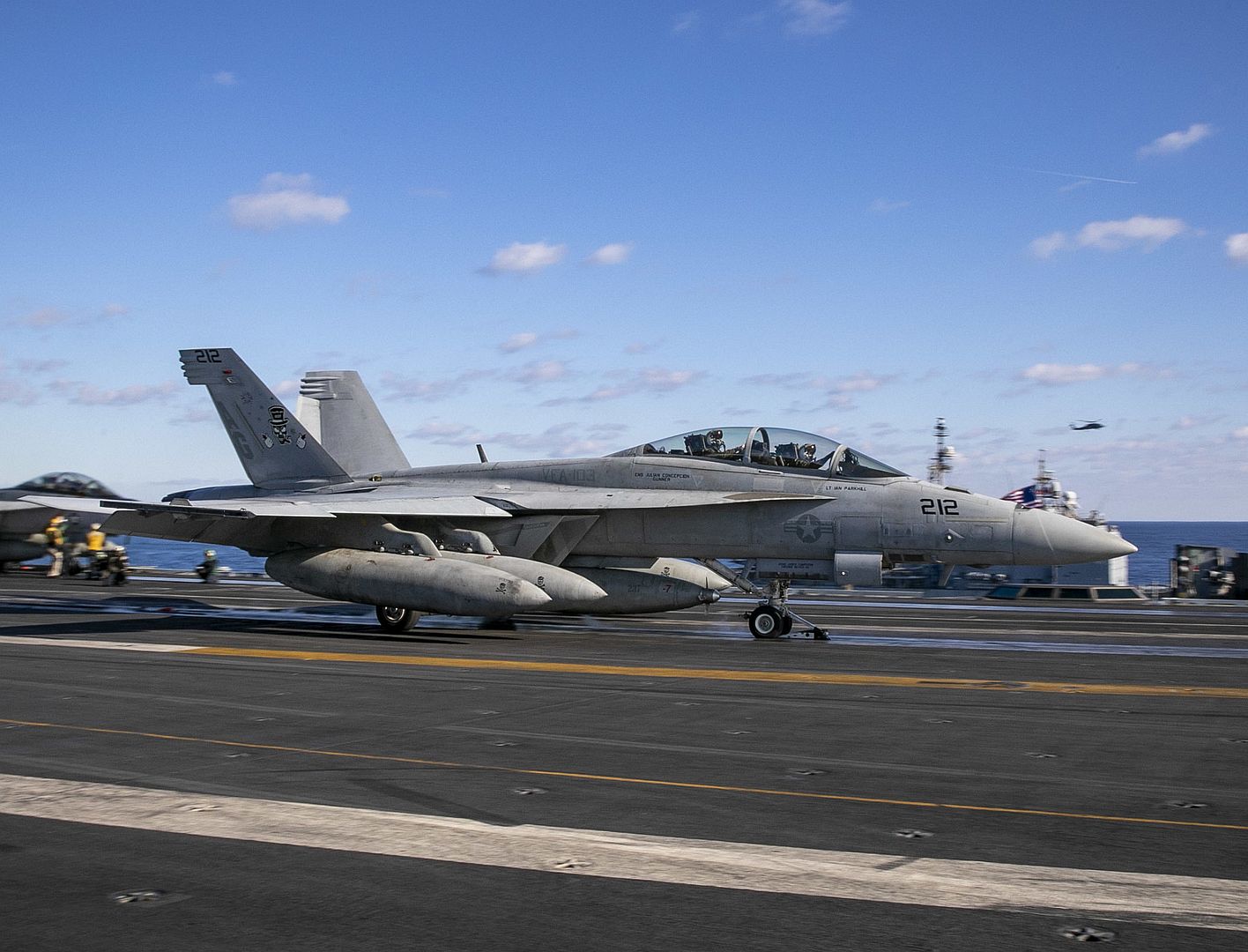
SOUTH CHINA SEA (Jan. 17, 2023) An E/A-18G Growler from the “Cougars” of Electronic Attack Squadron (VAQ) 139 launches from the aircraft carrier USS Nimitz (CVN 68). Nimitz is in U.S. 7th Fleet conducting routine operations. 7th Fleet is the U.S. Navy's largest forward-deployed numbered fleet, and routinely interacts and operates with Allies and partners in preserving a free and open Indo-Pacific region. (U.S. Navy photo by Mass Communication Specialist 2nd Class Justin McTaggart)
-
 Main AdminSOUTH CHINA SEA (Jan. 18, 2023) An F/A-18E Super Hornet from the “Blue Diamonds” of Strike Fighter Squadron (VFA) 146 launches from the flight deck of the aircraft carrier USS Nimitz (CVN 68). Nimitz is in U.S. 7th Fleet conducting routine operations. 7th Fleet is the U.S. Navy's largest forward-deployed numbered fleet, and routinely interacts and operates with Allies and partners in preserving a free and open Indo-Pacific region. (U.S. Navy photo by Mass Communication Specialist 3rd Class Joseph Calabrese)
Main AdminSOUTH CHINA SEA (Jan. 18, 2023) An F/A-18E Super Hornet from the “Blue Diamonds” of Strike Fighter Squadron (VFA) 146 launches from the flight deck of the aircraft carrier USS Nimitz (CVN 68). Nimitz is in U.S. 7th Fleet conducting routine operations. 7th Fleet is the U.S. Navy's largest forward-deployed numbered fleet, and routinely interacts and operates with Allies and partners in preserving a free and open Indo-Pacific region. (U.S. Navy photo by Mass Communication Specialist 3rd Class Joseph Calabrese)
A U.S. Air Force F-16 Fighting Falcon aircraft currently assigned to the 77th Expeditionary Fighter Squadron arrives at King Fahad Air Base, Kingdom of Saudi Arabia, for an off-station agile combat employment training exercise, Jan. 9, 2023. Airmen assigned to the 378th Air Expeditionary Wing and Royal Saudi Air Force counterparts conducted combined operations further cultivating strong partnerships to deter regional aggressors. (U.S. Air Force photo by Staff Sgt. Shannon Bowman)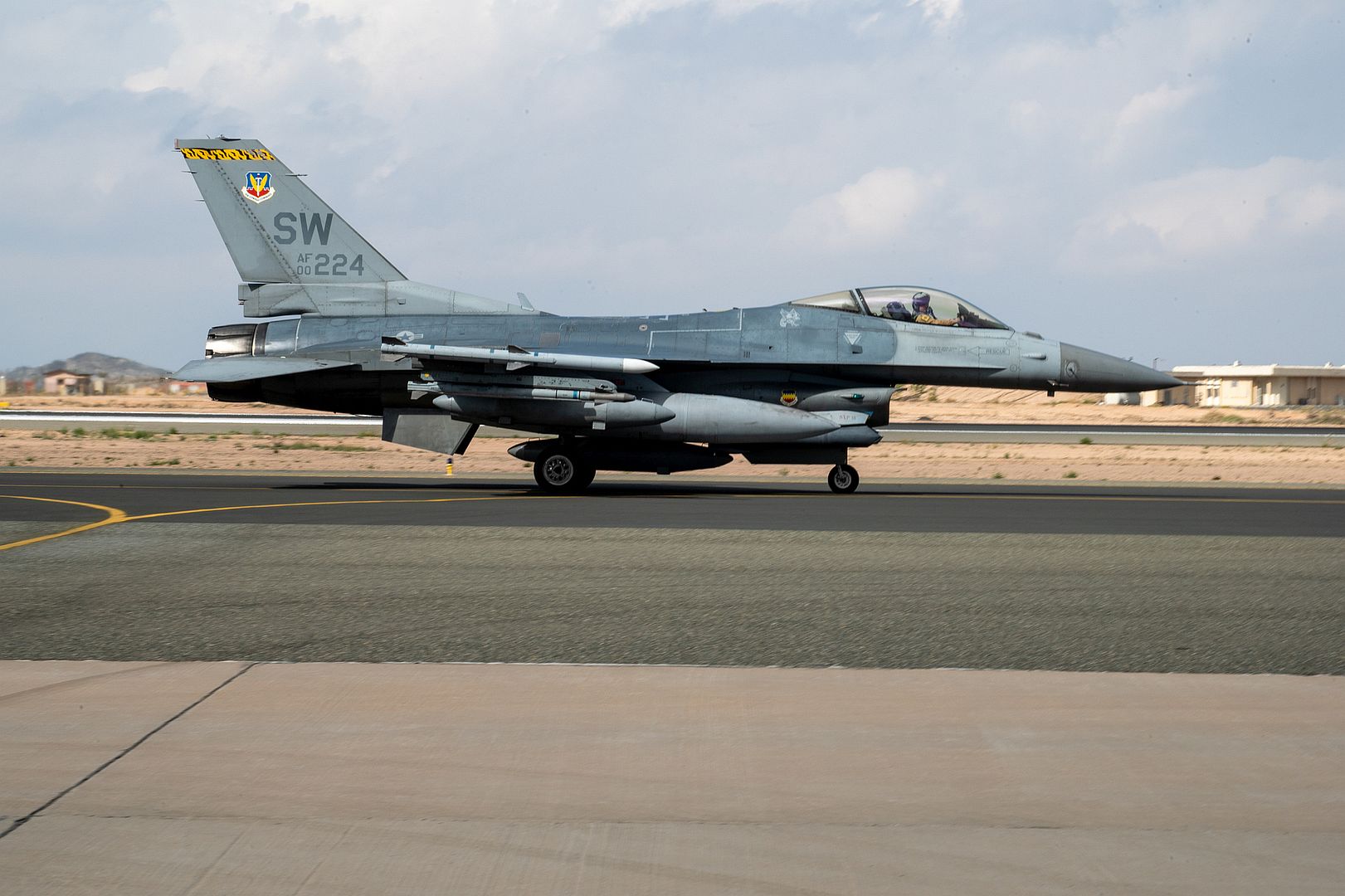
A U.S. Air Force F-16CM Fighting Falcon aircraft, assigned to the 480th Fighter Squadron, taxis on the flight line at Spangdahlem Air Base, Germany, Jan. 11, 2023. Airmen and assets are deploying to Kadena Air Base, Japan, as the base’s strategic position makes it a vital staging location for forces to deter regional adversaries and project U.S. airpower throughout the Indo-Pacific. (U.S. Air Force photo by Tech. Sgt Anthony Plyler)
U.S. Airmen assigned to the 52nd Aircraft Maintenance Squadron prepare to launch an F-16CM Fighting Falcon aircraft at Spangdahlem Air Base, Germany, Jan. 11, 2023. The F-16CM can locate targets in all weather conditions, which allows it to accurately deliver ordnance during non-visual bombing conditions. (U.S. Air Force photo by Tech. Sgt Anthony Plyler)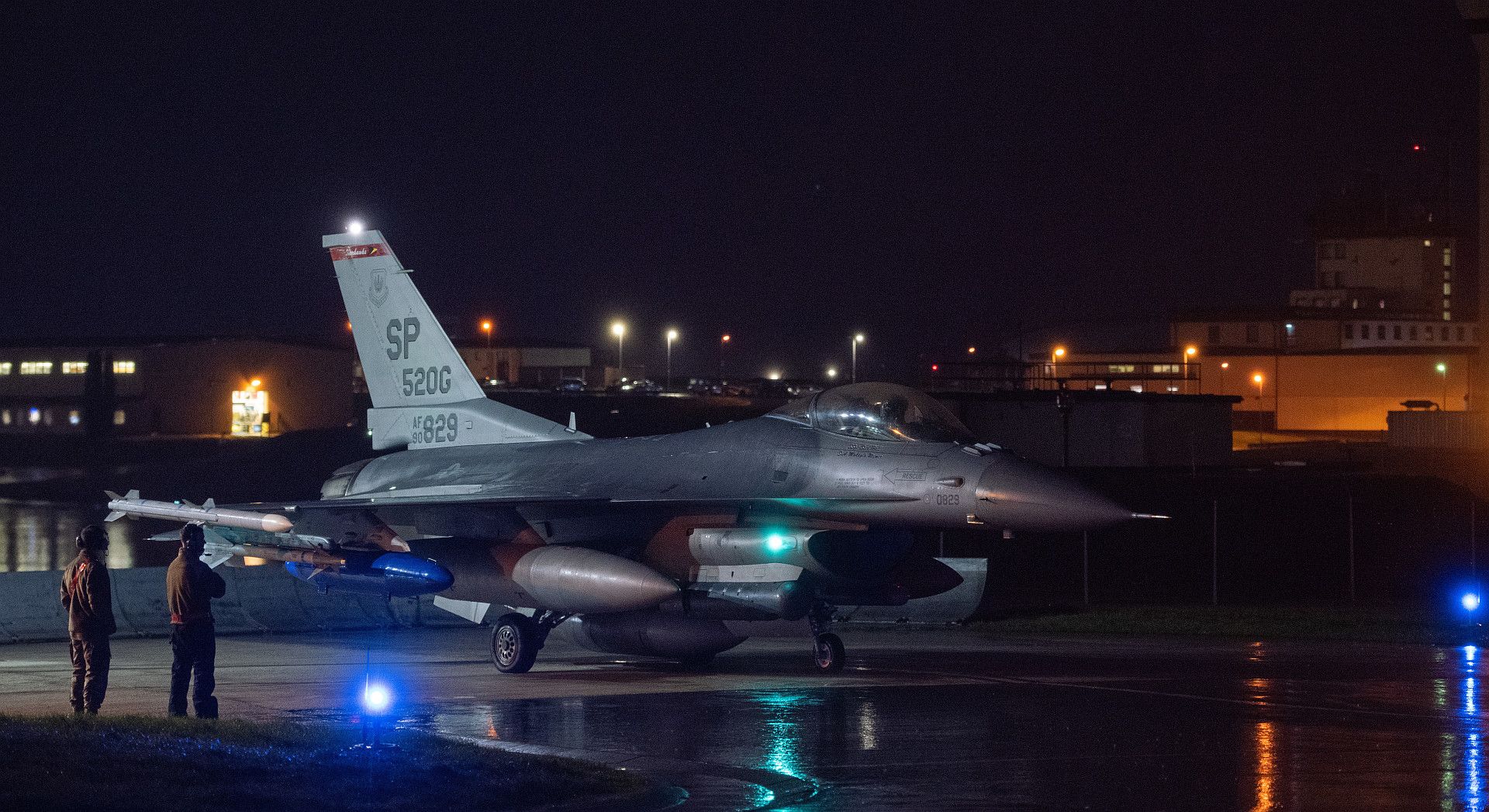
ARLINGTON, Va., Jan. 18, 2023 /PRNewswire/ -- NASA has selected Boeing [NYSE: BA] and its industry team to lead the development and flight testing of a full-scale Transonic Truss-Braced Wing (TTBW) demonstrator airplane.
The technologies demonstrated and tested as part of the Sustainable Flight Demonstrator (SFD) program will inform future designs and could lead to breakthrough aerodynamics and fuel efficiency gains.
When combined with expected advancements in propulsion systems, materials and systems architecture, a single-aisle airplane with a TTBW configuration could reduce fuel consumption and emissions up to 30% relative to today's most efficient single-aisle airplanes, depending on the mission. The SFD program aims to advance the civil aviation industry's commitment to reaching net zero carbon emissions by 2050, as well as the goals set forth in the White House's U.S. Aviation Climate Action Plan.
"The SFD program has the potential to make a major contribution toward a sustainable future," said Greg Hyslop, Boeing chief engineer and executive vice president of Engineering, Test & Technology. "It represents an opportunity to design, build and fly a full-scale experimental plane, while solving novel technical problems."
Ultrathin wings braced by struts with larger spans and higher-aspect ratios could eventually accommodate advanced propulsion systems that are limited by a lack of underwing space in today's low-wing airplane configurations. For the demonstrator vehicle, Boeing will use elements from existing vehicles and integrate them with all-new components.
NASA's funding through the SFD Space Act Agreement totals $425 million. The SFD program will also leverage up to $725 million in funding by Boeing and its industry partners to shape the demonstrator program and meet the resource needs required. Separately, Boeing's previous internal investments for recent phases of sustainable aviation research total $110 million.
The TTBW airframe concept is the result of more than a decade of development supported by NASA, Boeing and industry investments. Under previous NASA programs including the agency's Subsonic Ultra Green Aircraft Research program, Boeing conducted extensive wind tunnel testing and digital modeling to advance the design of the TTBW. Early conceptual studies started under NASA's Environmentally Responsible Aviation program.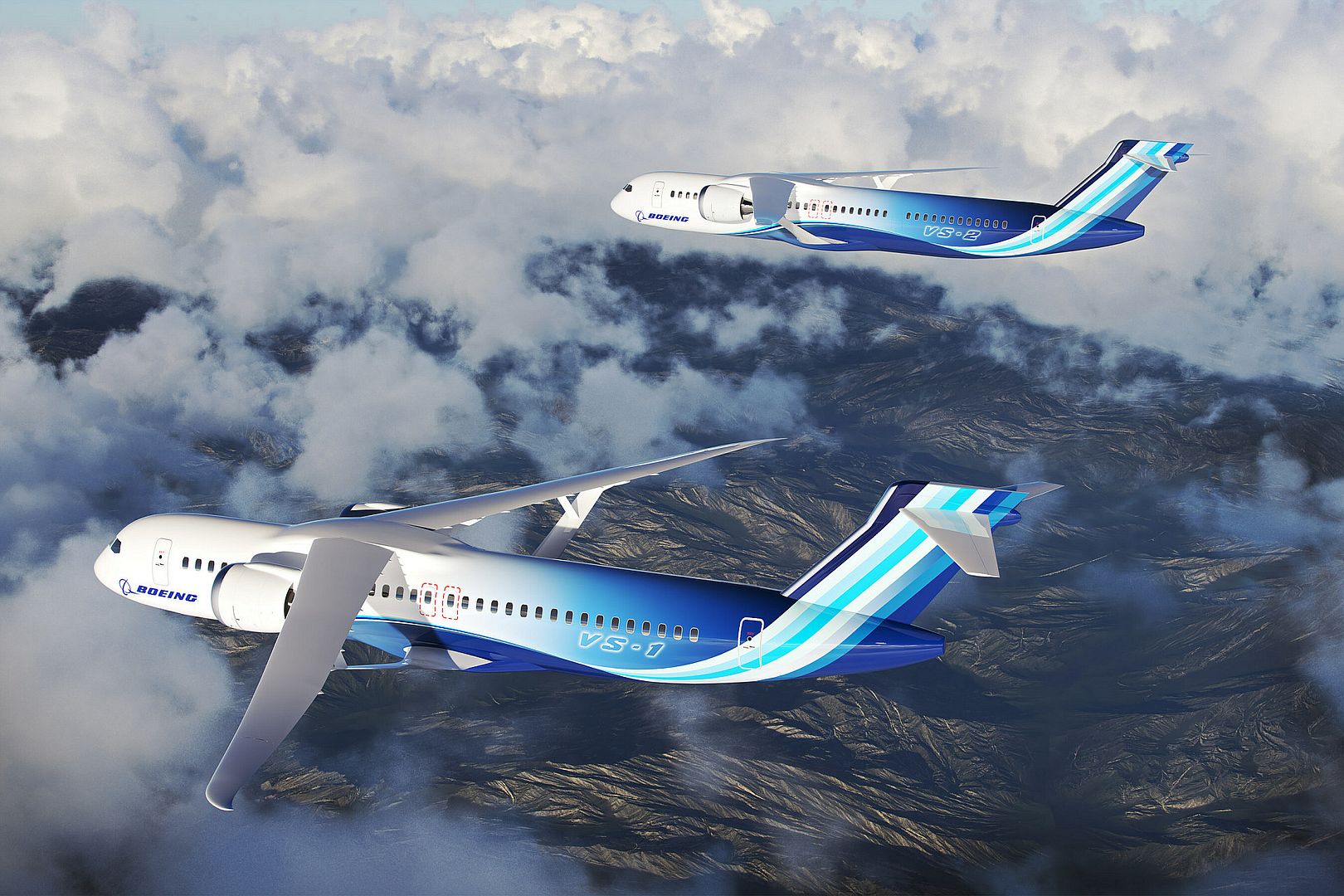
Herndon, USA / Mirabel, Canada - 18 January 2023 – Delta Air Lines has firmed up an order for a dozen more A220-300 aircraft, bringing the airline’s total firm order for A220s to 119 aircraft - 45 A220-100s and 74 A220-300s. Throughout the years, Delta has reordered the A220 four times and is today the largest A220 customer and operator.
"These 12 additional A220 aircraft will help power our increasingly streamlined fleet while also providing our customers with the elevated in-flight experience they’ve come to expect from Delta,” said Kristen Bojko, Vice President of Fleet, Delta Air Lines.
“Delta Air Lines was the U.S. launch customer for the A220 and this fourth reorder in just four years by a leading carrier as Delta is a most gratifying endorsement,” said Christian Scherer, Airbus Chief Commercial Officer and Head of International. “The aircraft is currently connecting Delta passengers on more than 100 routes at 25 percent* less fuel and CO2 emissions. If you want to connect today and tomorrow, you can’t do any better!”
Delta took delivery of its first Airbus A220 in October 2018, and was the first U.S. carrier to operate the aircraft type. Delta currently owns a fleet of 415 Airbus aircraft, including 59 A220 aircraft, 266 A320 Family aircraft, 62 A330s and 28 A350-900 aircraft.
The A220 is the only aircraft purpose-built for the 100-150 seat market, bringing together state-of-the-art aerodynamics, advanced materials and Pratt & Whitney’s latest-generation GTF™ engines. The A220 brings customers a 50 percent reduced noise footprint as well as around 50 percent lower NOx emissions than industry standards.
With 246 A220s delivered to 16 airlines operating on four continents, the A220 is the optimal aircraft to offer operational flexibility for both regional as well as long-distance routes. To date, more than 70 million passengers have enjoyed the A220. The fleet is currently flying on over 825 routes and 325 destinations worldwide. As of the end of December 2022, nearly 30 customers have ordered close to 800 A220 aircraft - confirming its leading position in the small single-aisle market.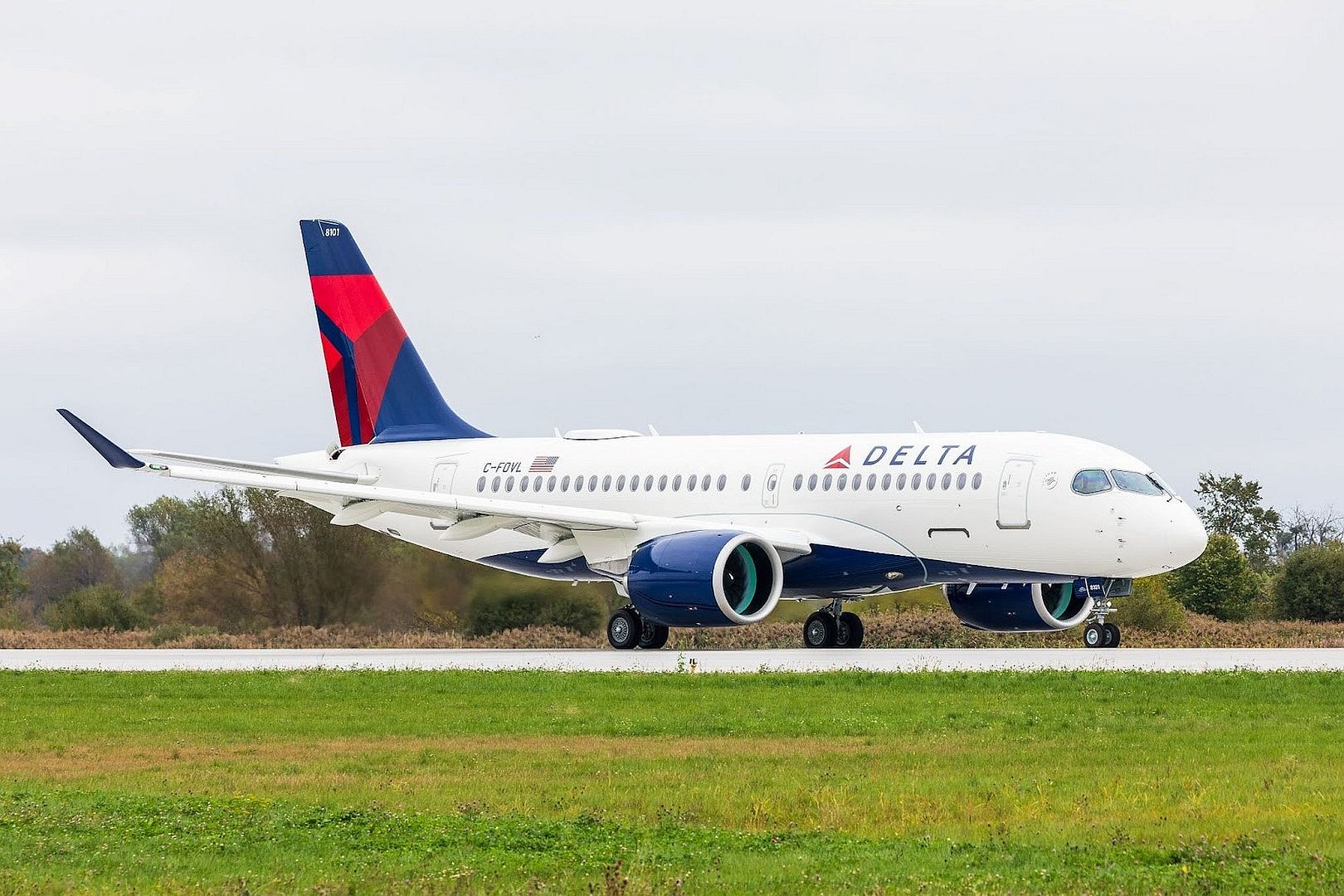
The Korean-made KF-21 supersonic fighter jet successfully broke through the sound barrier for the first time ever on Tuesday. Although the jet has had its altitude and speed confirmed through 80 or so test flights since the first successful flight last year, all have been below the speed of sound.
Korea’s Defense Acquisition Program Administration (DAPA) put out a statement on Tuesday in which they explained that the KF-21 prototype No. 1 “achieved supersonic flight for the first time while flying at an altitude of around 40,000 feet in the airspace above Namhae after taking off from the Air Force 3rd Flight Training Wing in Sacheon, South Gyeongsang Province.”
According to DAPA, the significance of breaking the sound barrier lies in confirming the structural integrity of the KF-21’s fuselage in the sonic zone. When an aircraft breaks through Mach 1 — around 1,224 km/hr — air resistance causes a sonic boom on the body and wings, and the resulting instability in the surrounding airflow can have a major impact on the structural integrity of the aircraft.
“The fact that the KF-21 was able to overcome the shock wave and remain in normal flight while breaking the sound barrier demonstrates that the fuselage was able to maintain structurally sound,” read the statement from the agency.
It is also meaningful that this is the first time an independently developed aircraft designed with Korean technology has engaged in supersonic flight. Although the Korean-made supersonic advanced trainer T-50 (Golden Eagle) breached the sound barrier in 2003, this model is not a pure Korean aircraft as it was developed through technical cooperation with the US.
“With the KF-21 breaking the sound barrier, Korea now possesses a supersonic aircraft developed purely from Korean technology,” DAPA added.
“The fact that we now possess the first-ever supersonic aircraft developed with Korean technology is a historic achievement that was made possible by the dedication and diligence of countless people,” said Minister of Defense Lee Jong-sup, who went on to express sincere gratitude to those who contributed to the effort, including officials from the Air Force and DAPA, the research team at Korea Aerospace Industries, and the test pilots.
DAPA also stated that moving forward, it plans to push the KF-21’s altitude and speed to new limits during test flights. “In this process, we will examine and verify flight stability at supersonic speeds and continue to incorporate the results into system development so that the KF-21 can become a true supersonic fighter jet.”
By Kwon Hyuk-chul.
-
 Main AdminMaintainers assigned to the 480th Expeditionary Fighter Squadron remove a travel pod from a U.S. Air Force F-16CM Fighting Falcon assigned to the 52nd Fighter Wing, Spangdahlem Air Base, Germany, after arriving at Kadena Air Base, Japan, Jan. 16, 2023. While deployed here, the highly maneuverable multi-role F-16s will work in conjunction with Kadena-based assets and F-22A Raptors deployed from the 3rd Wing, Joint Base Elmendorf Richardson, Alaska, to ensure continued steady-state fighter capabilities. (U.S. Air Force photo by Airman 1st Class Tylir Meyer)
Main AdminMaintainers assigned to the 480th Expeditionary Fighter Squadron remove a travel pod from a U.S. Air Force F-16CM Fighting Falcon assigned to the 52nd Fighter Wing, Spangdahlem Air Base, Germany, after arriving at Kadena Air Base, Japan, Jan. 16, 2023. While deployed here, the highly maneuverable multi-role F-16s will work in conjunction with Kadena-based assets and F-22A Raptors deployed from the 3rd Wing, Joint Base Elmendorf Richardson, Alaska, to ensure continued steady-state fighter capabilities. (U.S. Air Force photo by Airman 1st Class Tylir Meyer)
A U.S. Air Force F-16CM Fighting Falcon assigned to the 52nd Fighter Wing, Spangdahlem Air Base, Germany, arrives at Kadena Air Base, Japan, Jan. 19, 2023. The Fighting Falcon is renowned for its fly-by-wire system, and exceptionally flexible design enabling it to excel worldwide in a range of both air-to-air and air-to-ground roles. (U.S. Air Force photo by Airman 1st Class Sebastian Romawac)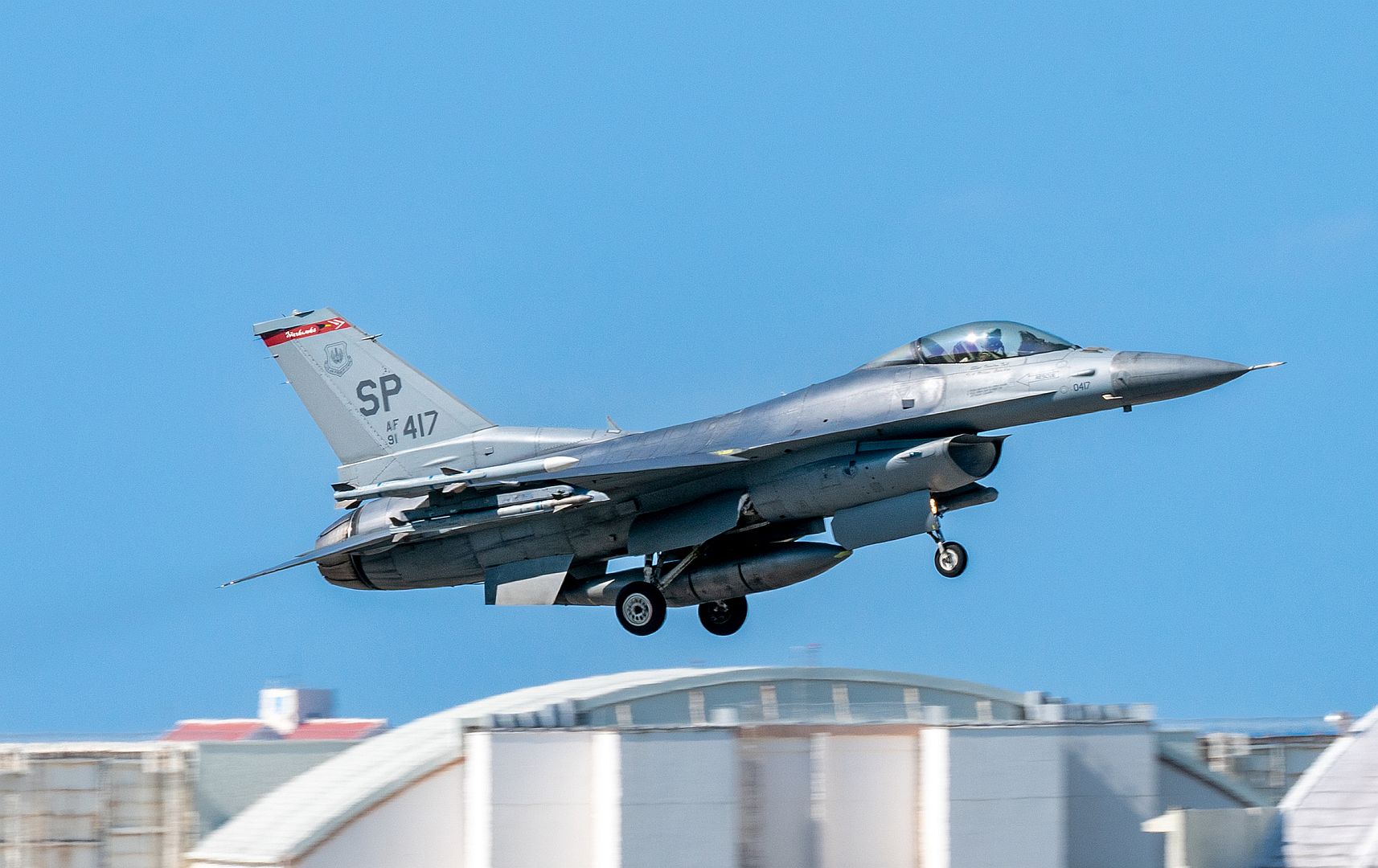
SOUTH CHINA SEA (Jan. 19, 2023) An F/A-18E Super Hornet from the “Blue Diamonds” of Strike Fighter Squadron (VFA) 146 prepares to launch from the aircraft carrier USS Nimitz (CVN 68). Nimitz is in U.S. 7th Fleet conducting routine operations. 7th Fleet is the U.S. Navy's largest forward-deployed numbered fleet, and routinely interacts and operates with Allies and partners in preserving a free and open Indo-Pacific region. (U.S. Navy photo by Mass Communication Specialist 2nd Class Justin McTaggart)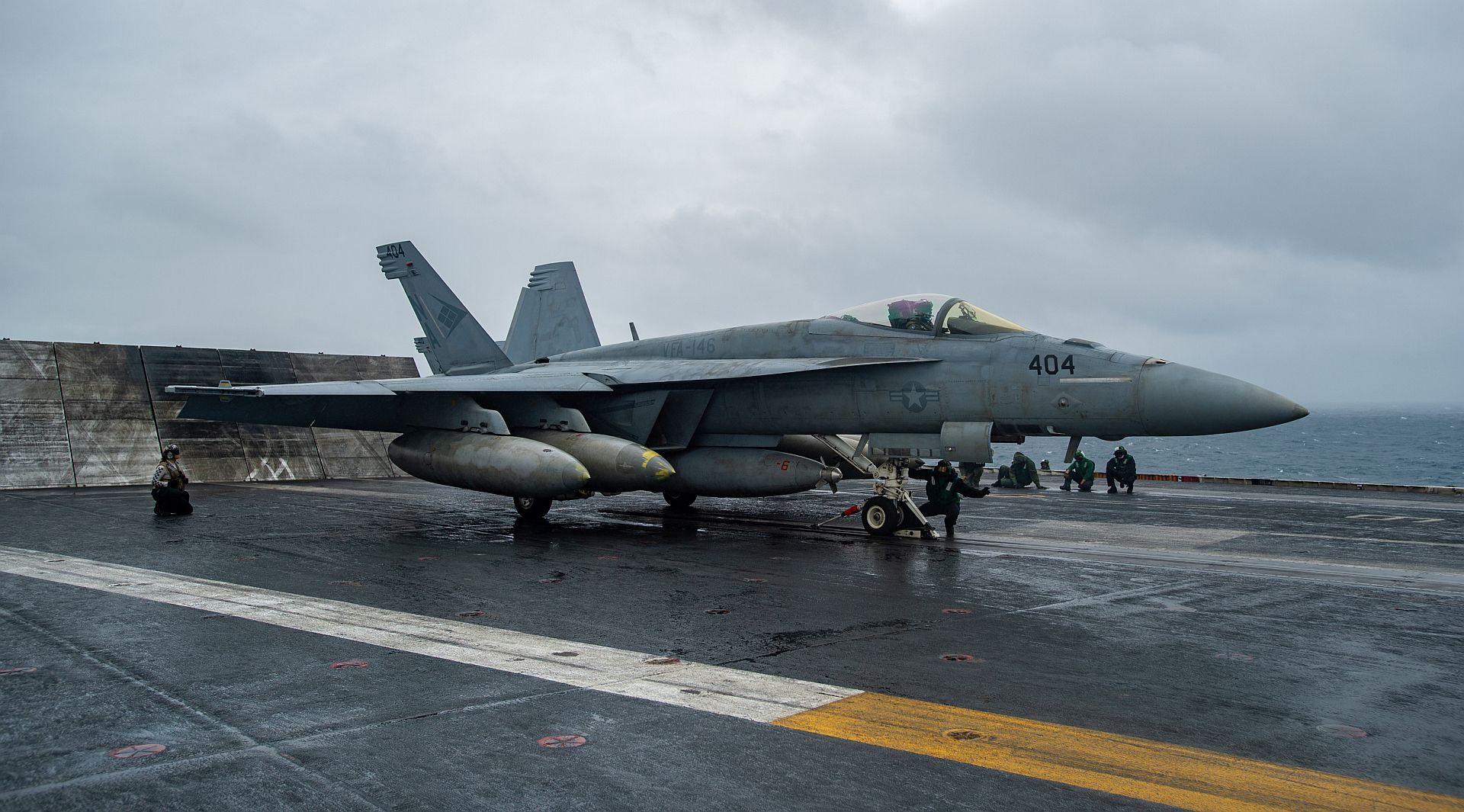
SOUTH CHINA SEA (Jan. 19, 2023) An F/A-18E Super Hornet from the “Kestrels” of Strike Fighter Squadron (VFA) 137 makes an arrested landing on the aircraft carrier USS Nimitz (CVN 68). Nimitz is in U.S. 7th Fleet conducting routine operations. 7th Fleet is the U.S. Navy's largest forward-deployed numbered fleet, and routinely interacts and operates with Allies and partners in preserving a free and open Indo-Pacific region. (U.S. Navy photo by Mass Communication Specialist 2nd Class Justin McTaggart)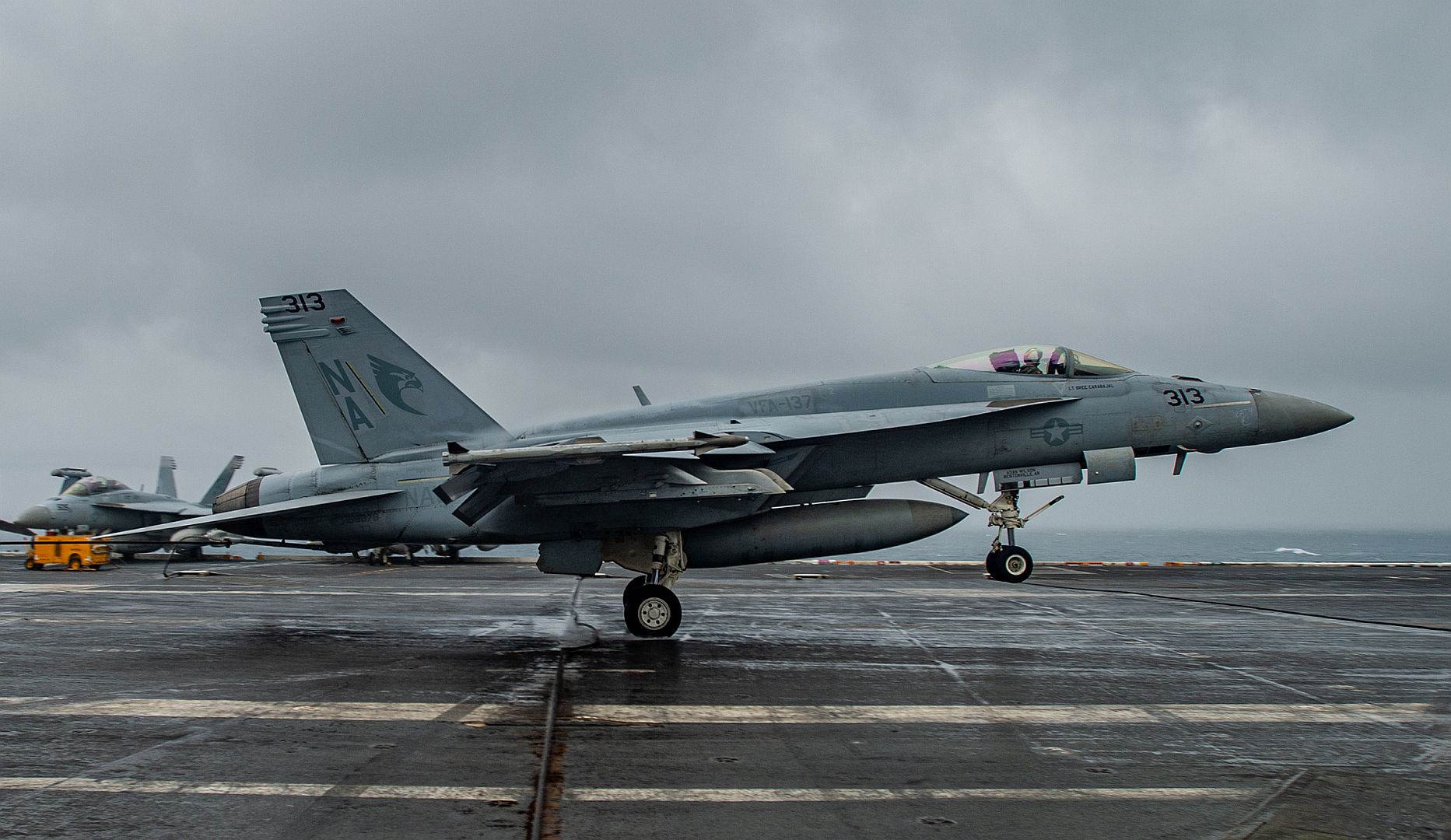
SOUTH CHINA SEA (Jan. 19, 2023) A U.S. Navy Sailor directs an F/A-18F Super Hornet from the “Fighting Redcocks” of Strike Fighter Squadron (VFA) 22 on the flight deck aboard the aircraft carrier USS Nimitz (CVN 68). Nimitz is in U.S. 7th Fleet conducting routine operations. 7th Fleet is the U.S. Navy's largest forward-deployed numbered fleet, and routinely interacts and operates with Allies and partners in preserving a free and open Indo-Pacific region. (U.S. Navy photo by Mass Communication Specialist 3rd Class Caylen McCutcheon)
U.S. Air Force Airman 1st Class Theresa Calvert, 309th Air Maintenance Unit weapons crew load member watches an F-16 Fighting Falcon taxi on the flightline, Jan. 12, 2022, at Luke Air Force Base, Arizona. The F-16 offers advanced capabilities that enhances interoperability with allies. (U.S. Air Force photos by Airman 1st Class Mason Hargrove)
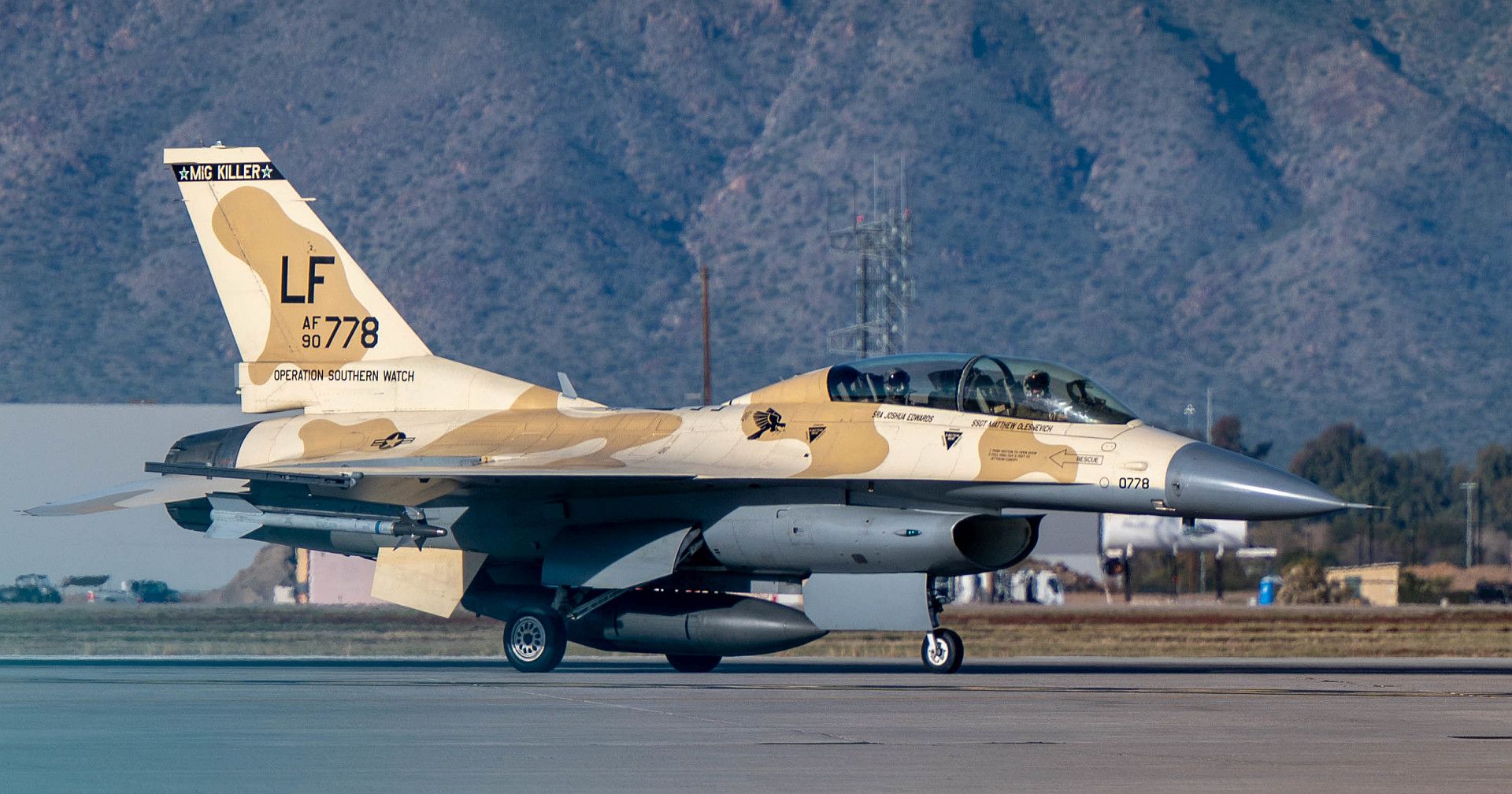
Melbourne, FL., January 19th, 2023 — The Phenom 300MED, has received the Supplemental Type Certificate (STC) from the U.S. Federal Aviation Administration (FAA) and the European Union Aviation Safety Agency (EASA). The Phenom 300MED is a unique Medevac solution for the Phenom 300 series aircraft, the world’s best-selling light jet, for ten consecutive years. The STC was performed at Embraer’s Service Center in Fort Lauderdale, Florida, and will be operated by the launch customer, on-demand charter operator Grandview Aviation.
“We are pleased to announce the certification of the Phenom 300MED by the FAA and EASA,” said Marsha Woelber, Vice-President of Worldwide Executive Jets Customer Support & Aftermarket Sales, Embraer Service & Support. “The Medevac solution provides superior value, benefiting from a market-leading product such as the Phenom 300 series, combining its unique capabilities with a fully-comprehensive medical solution.”
The Phenom 300MED aeromedical interior was specified by Embraer and developed and certified by engineering services provider umlaut, part of Accenture, utilizing Aerolite equipment. Aerolite developed the Intensive Care Unit (ICU) specifically for the Phenom 300MED. As per the certification requirements, umlaut conducted an evacuation test to confirm two fully disabled patients could be evacuated.
The Medevac solution, which is available for new and in-service aircraft, is exclusively installed by Embraer’s top-ranked Services & Support organization, ensuring the highest quality, reliability, and service experience direct from the manufacturer.
The Phenom 300MED benefits from the platform’s heritage of best-in-class cabin pressurization, low operating costs, high mission flexibility, state-of-the-art avionics, plus its speed and range capabilities. With a best-in-class cabin altitude of 6,600 feet, passengers and crew enjoy more oxygen in the cabin. This feature equates to a healthier flight experience, which is essential for medical staff and patient care.
Embraer and umlaut developed a comprehensive set of configuration alternatives for the Phenom 300MED. These configuration alternatives include either one or two stretchers, the ability to carry an incubator, and additional medical equipment. The aircraft also features hospital-grade trim and finishing. As a purpose-built Medevac solution, created in collaboration with the leading companies in the industry, the Phenom 300MED is designed to be quickly and easily configured to meet the various needs of both healthcare providers and patients. The aircraft is also designed with agility in mind, able to convert between an executive and a Medevac interior in as little as 5 hours.
The aircraft is further distinguished by the integration of Aerolite medical equipment. Aerolite is a leader in the design, engineering, production, and installation of Air Medical interiors. With over 500 Medevac interiors delivered, the company offers the ideal blend of equipment for the mission.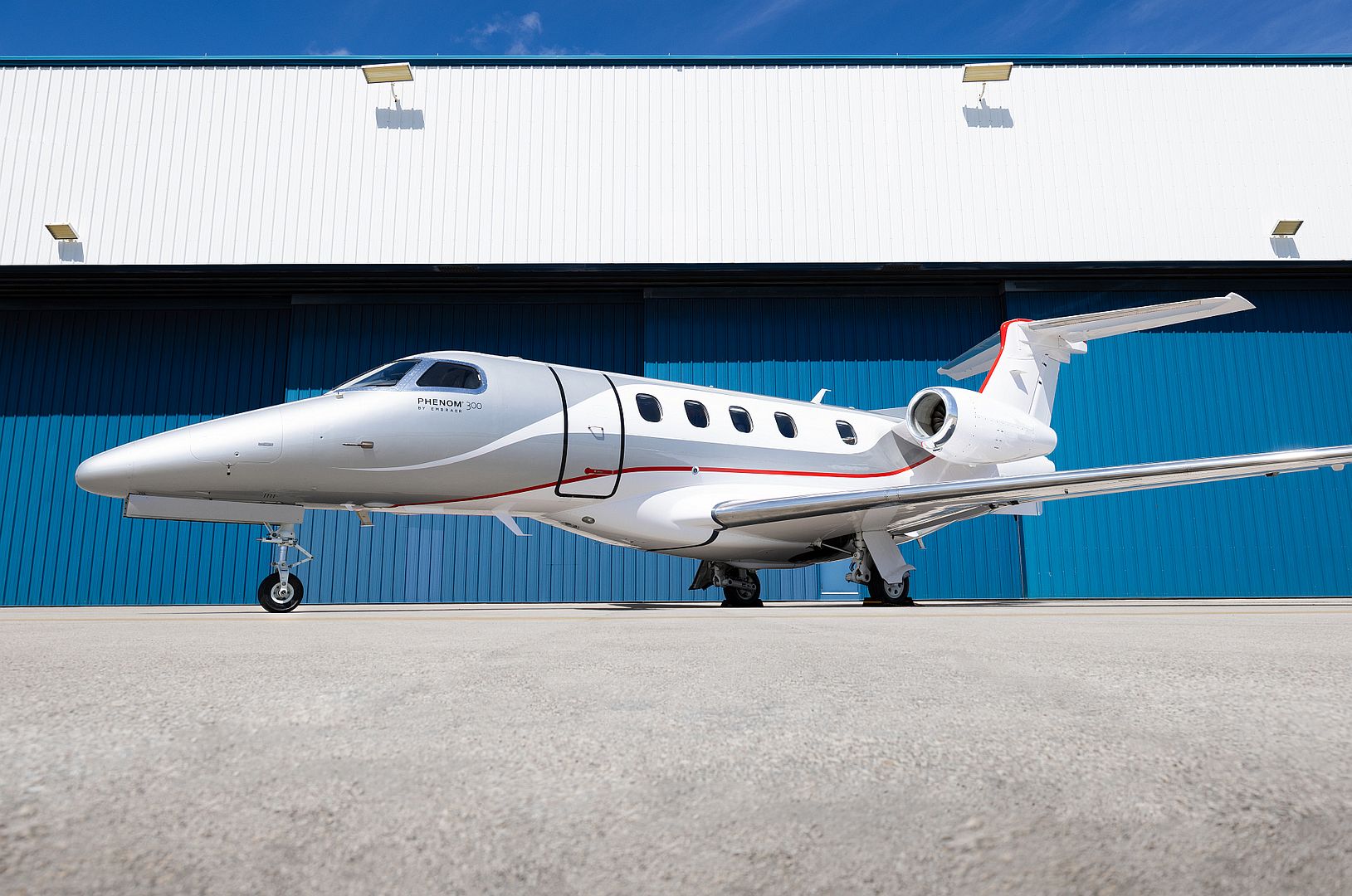
About the Phenom 300E
The Phenom 300E is the fastest and longest-ranged single-pilot jet, with a high-speed cruise of 464 knots and a five-occupant range of 2,010 nautical miles (3,724 km) with NBAA IFR reserves. With the best climb and field performance in its class, the Phenom 300E costs less to operate and maintain than its peers. The aircraft is capable of flying at 45,000 feet (13,716 meters), powered by two Pratt & Whitney Canada PW535E1 engines with 3,478 pounds of thrust each. The Phenom 300E offers a spacious cabin with the Embraer DNA Design and its baggage compartment is among the largest in its category. The largest windows in the class deliver abundant natural lighting in the cabin as well as in the private lavatory. The comfort of the seats, with recline and full movement capability, is enhanced by the best pressurization among light jets (6,600 ft. maximum cabin altitude). The Phenom 300E features distinct temperature zones for pilots and passengers, a wardrobe and refreshment center, voice and data communications options, and an entertainment system.
The pilot-friendly cockpit enables a single-pilot operation and offers the advanced Prodigy Touch Flight Deck, based on the acclaimed Garmin 3000 avionics suite. The aircraft features carried from a class above include single-point refueling, an externally serviced lavatory and an airstair.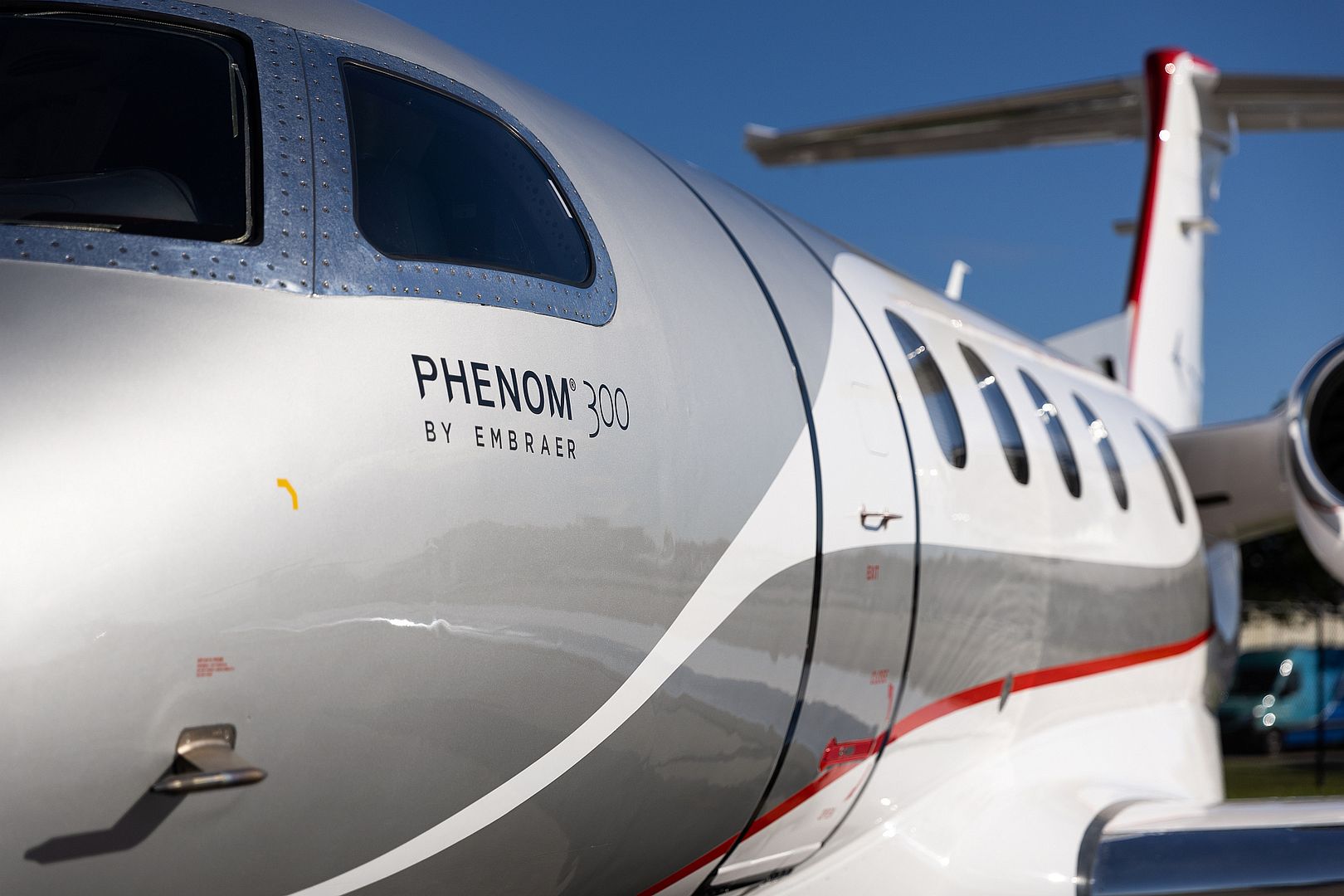
Rome, 19 January 2023
Leonardo and the Directorate for Air Armaments and Airworthiness of the Italian Secretariat General of Defence/National Armaments Directorate signed yesterday the Acquisition Contract for the supply of an additional 18 AW169M Light Utility Helicopters (LUH) to the Austrian Ministry of Defence. The contract, valued at 304 million EUR, was signed following the Italy-Austria Government-to-Government (G2G) Agreement amendment signed in December 2022, through which Austria is exercising options for these additional units, providing further evidence of its confidence in the selected platform.
This latest contract will bring to 36 the total number of AW169M LUHs for the Austrian Ministry of Defence. The first aircraft was delivered in December 2022 during an official ceremony and in line with the contractual obligations, starting a new era in national defence and emergency response capabilities. Furthermore, it also represents an important milestone for Leonardo, celebrating the first delivery to the export market of the AW169M variant under a G2G programme. Austrian crews have already been leveraging initial training supplied at Leonardo’s Training Academy in Sesto Calende (Italy) and will be supported by the Italian Army’s training capabilities as an AW169M LUH operator. Deliveries of all aircraft are expected to be completed by 2028.
The Italy-Austria G2G initiative is aimed at reinforcing the bilateral collaboration between the two countries and establishing a strategic partnership in the rotorcraft sector, with Austria looking at Italy and the AW169M LUH programme for its modernisation plan and the replacement of its ageing Alouette III aircraft fleet, which have been in service since the 1960s.
The AW169M LUH, with its superior performance and unmatched latest generation capabilities, as well as the complete support and training services to perform true multirole operations, is the most technologically advanced and cost-effective solution to meet the rigorous needs of the operator. The AW169M LUHs will be able to carry out a wide range of missions supporting Austrian defence requirements and the national community, such as troop transport, combat operations, disaster relief and emergency response, fire-fighting, mountain rescue and MEDEVAC.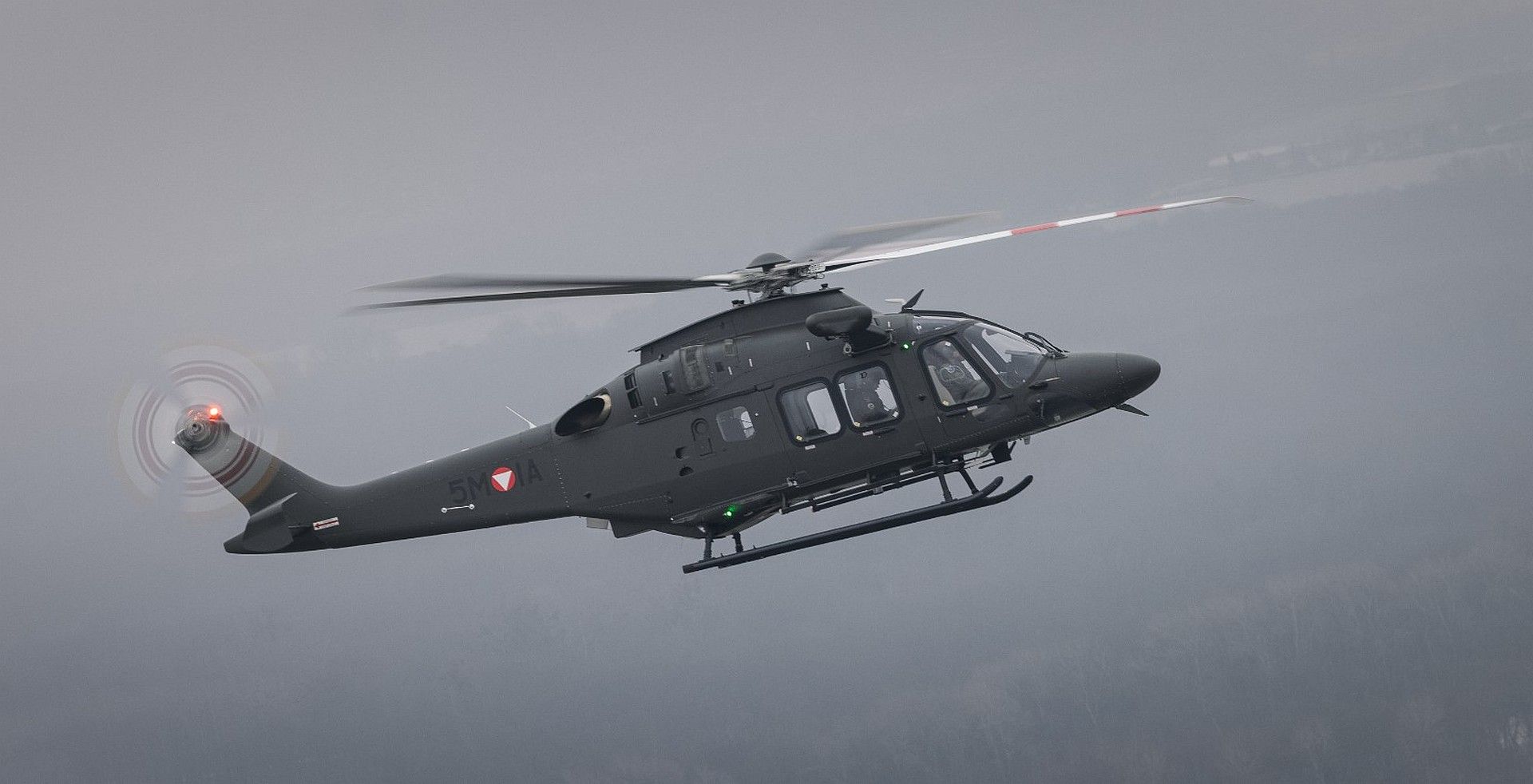
Vodochody, Jan 19, 2023 - Aero Vodochody has completed the prescribed repairs (PP16) on all 16 single-seat L-159 ALCA aircraft and handed over the last one to the Czech Air Force. The L-159s have been extended for another eight years and other technical improvements have been made.
The L-159 ALCA light combat aircraft, registration number 6070, was the last of 16 single-seat aircraft that have been undergoing prescribed periodic overhauls at Aero Vodochody over the past two years. The last completed Alka was handed over to the 21st Tactical Air Force Base at Caslav of the Czech Air Force.
"To ensure the operational capability of the L-159 fleet and the defense of the Czech Republic, we delivered the repaired aircraft at regular intervals from September 2020 until the end of 2022, when we completed the repair of the last aircraft," says Viktor Sotona, president & CEO Aero Vodochody: “The great advantage of L-159s is their cost-effective operation, especially compared to supersonic aircraft, in a large number of different variants of combat tasks," he adds.
The second intermediate overhaul under the so-called PP16 (prescribed periodic work after 16 years of operation) includes inspection and testing of all parts of the aircraft, including instruments. The contract between the Ministry of Defence of the Czech Republic and Aero Vodochody, concluded in 2019, also included technical improvements to some parts and functions of the aircraft. The L-159s were modified to use night vision goggles (NVGs), including the adaptation of the cabin and the installation of the aircraft's interior and exterior lighting kits. A new electronic backup display (ESIS) can replace other backup instruments and provide pilots with critical position, speed, or descent data in the event of a failure of conventional devices.
Aero Vodochody completed the production of the last 16 L-159 aircraft in December last year and handed it over to the Czech Air Force in the form of a ground handover. The actual aerial handover of the last L-159 aircraft was conducted in January 2023.
The L-159 aircraft are used by the Air Force of the Army of the Czech Republic. In addition, the Czech light attack aircraft from Aero Vodochody is also in the fleet of the Iraqi Air Force. For training purposes, Draken Europe has also recently started using them, where they play the role of aggressors in the training of pilots of RAF fighter aircraft - Eurofighter Typhoon and state-of-the-art F-35 aircraft.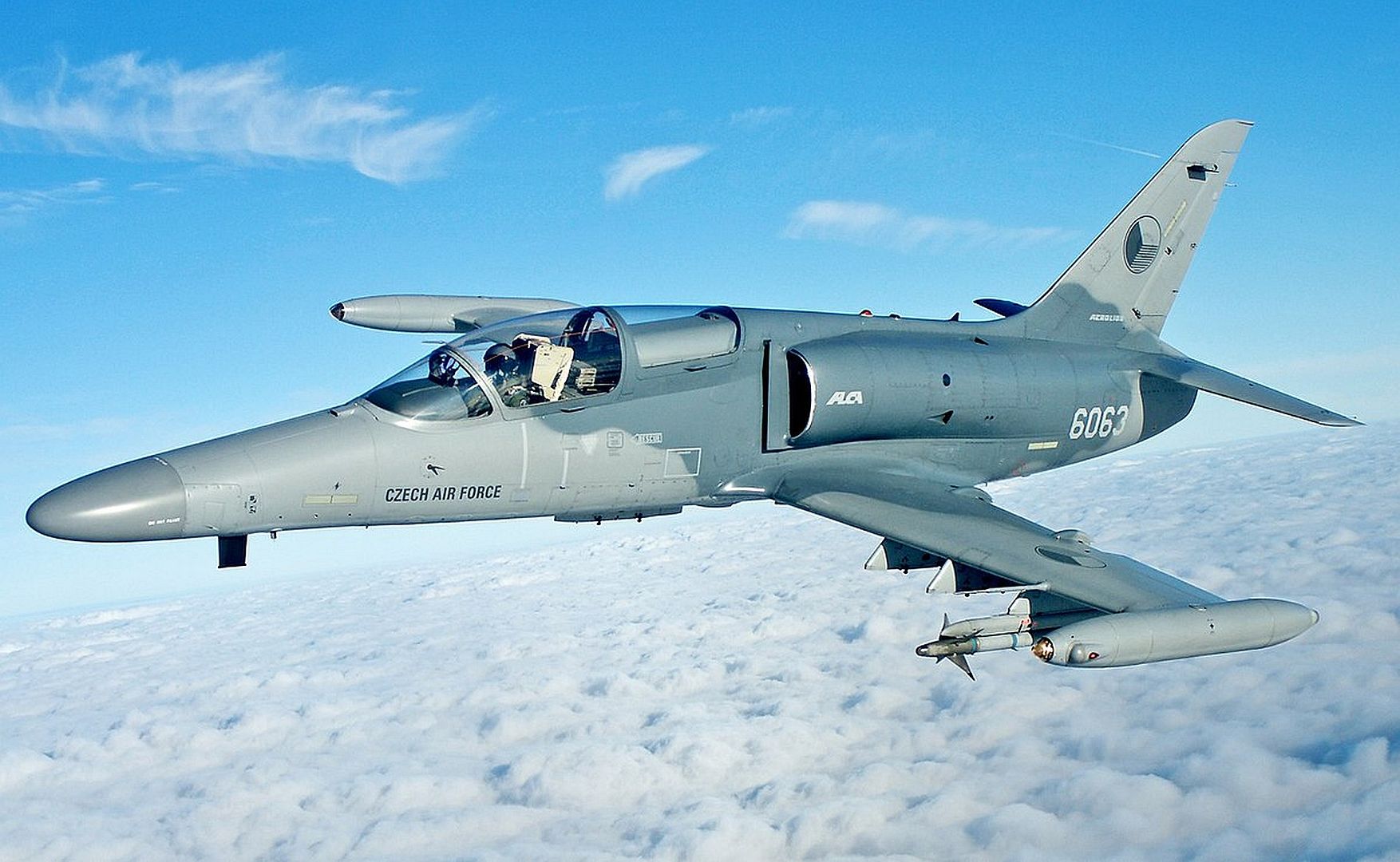
A large RAF detachment of over 300 personnel have arrived in the United States to take part in Exercise Red Flag, a major exercise that will test the detachment in complex combat Air Operations.
The deploying RAF detachment is formed from Typhoons from RAF Lossiemouth based II (Army Co-operation) Squadron supported by Voyagers from 10 and 101 Squadron based at RAF Brize Norton, together with ground support personnel from across the RAF.
For this iteration of the exercise, the RAF Typhoons will join with combat aircraft from the United States Air Force (USAF), The United States Navy, the United States Marine Corps and the Royal Australian Air Force (RAAF). During the exercise, the aircraft will face simulated ground-based air defence systems, aggressor aircraft that will simulate a peer adversary and cyber and space-based threats as combat missions are planned conducted and debriefed.
Exercise Red Flag has been a regular fixture on the RAF Exercise programme since the late 1970s and this exercise will be based at the United States Air Force’s Nellis Air Base in Nevada. The objective of the exercise for participants is to develop capabilities in a high-threat and contested environment against a near-peer adversary.
The exercise lasting until mid-February will see the RAF aircraft integrating with the United States and RAAF aircraft as the operations become more complex. The exercise therefore allows common procedures to be developed tested and practised together thereby allowing future air operations to be conducted together in a collation more effectively.
The exercise follows on from the recent annual US Weapons and Tactics Conference (WEPTAC) that was this year held at Nellis Air Force Base and was attended by Air Marshal Harvey Smyth. AM Smyth is Deputy Commander Operations and as such is the senior Royal Air Force warfighter responsible for the conduct of air operations at home and overseas.
The purpose of WEPTAC is to bring together senior officers from the USAF and allied combat air forces to join Mission Focussed and Functional Working Groups that examine various issues. The findings are then briefed to the Air Force senior leaders who attend who then discuss potential Tactical Improvement Procedures.
(Photo courtesy of the RAF)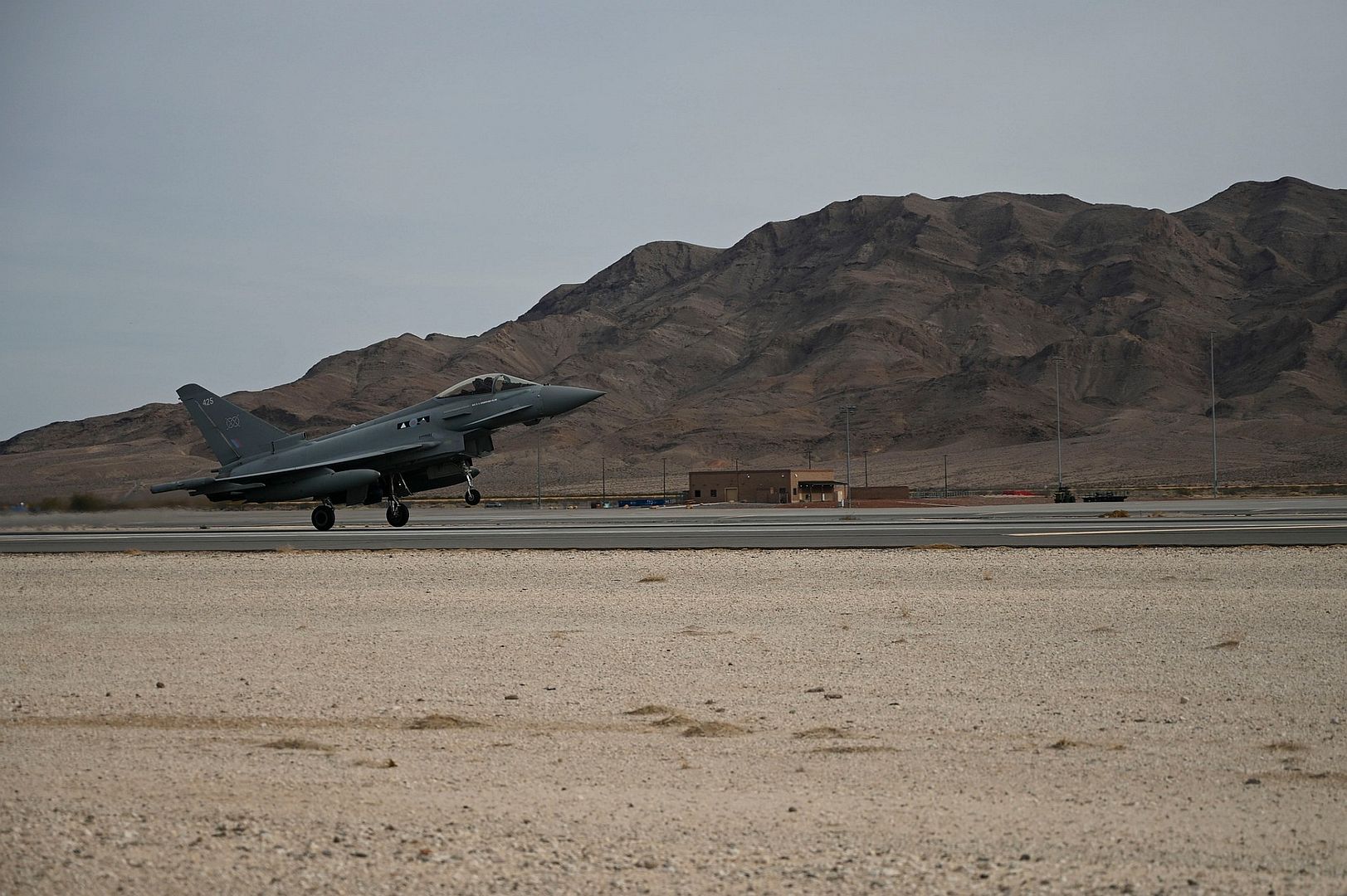
-
 Main AdminU.S. Marine Corps F-35B Lightning IIs assigned to Marine Fighter Attack Squadron 121 from Marine Corps Air Station Iwakuni, fly alongside a U.S. Air Force KC-135 Stratotanker over the Pacific Ocean, Jan. 19, 2023. The F-35 is a fifth generation fighter, combining advanced stealth with fighter speed and agility, fully fused sensor information, network-enabled operations and advanced sustainment. (U.S. Air Force photos by Airman 1st Class Tylir Meyer)
Main AdminU.S. Marine Corps F-35B Lightning IIs assigned to Marine Fighter Attack Squadron 121 from Marine Corps Air Station Iwakuni, fly alongside a U.S. Air Force KC-135 Stratotanker over the Pacific Ocean, Jan. 19, 2023. The F-35 is a fifth generation fighter, combining advanced stealth with fighter speed and agility, fully fused sensor information, network-enabled operations and advanced sustainment. (U.S. Air Force photos by Airman 1st Class Tylir Meyer)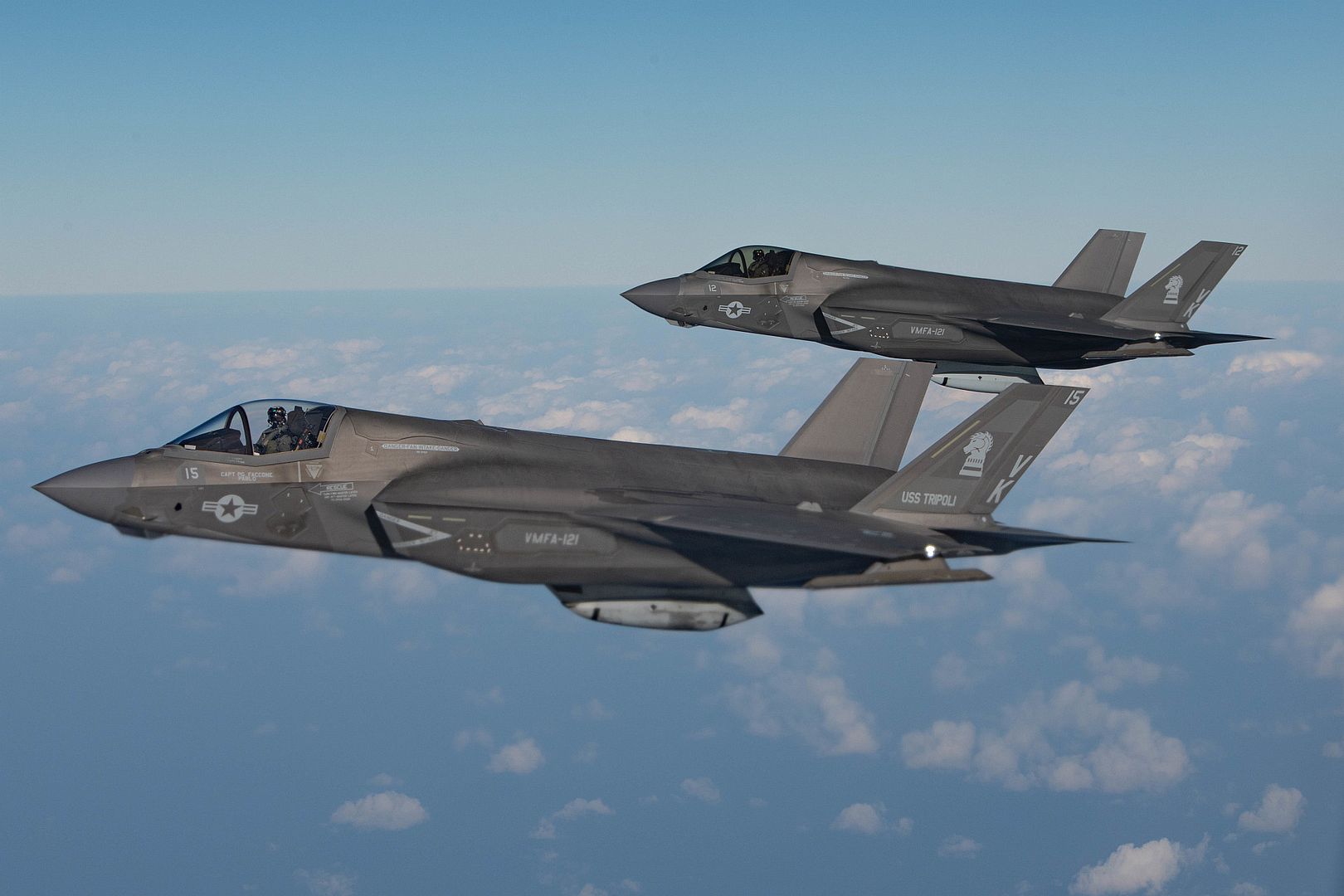
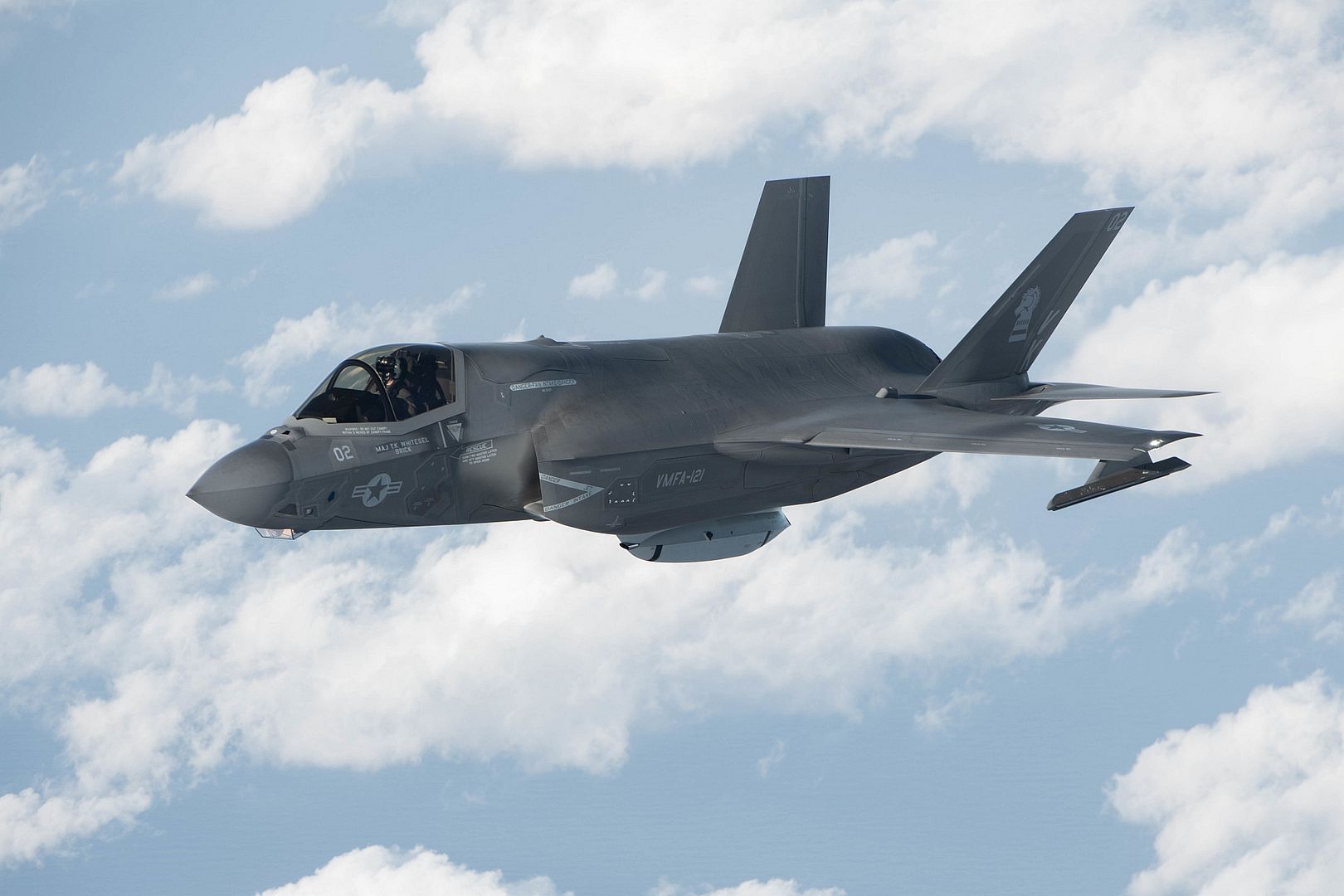
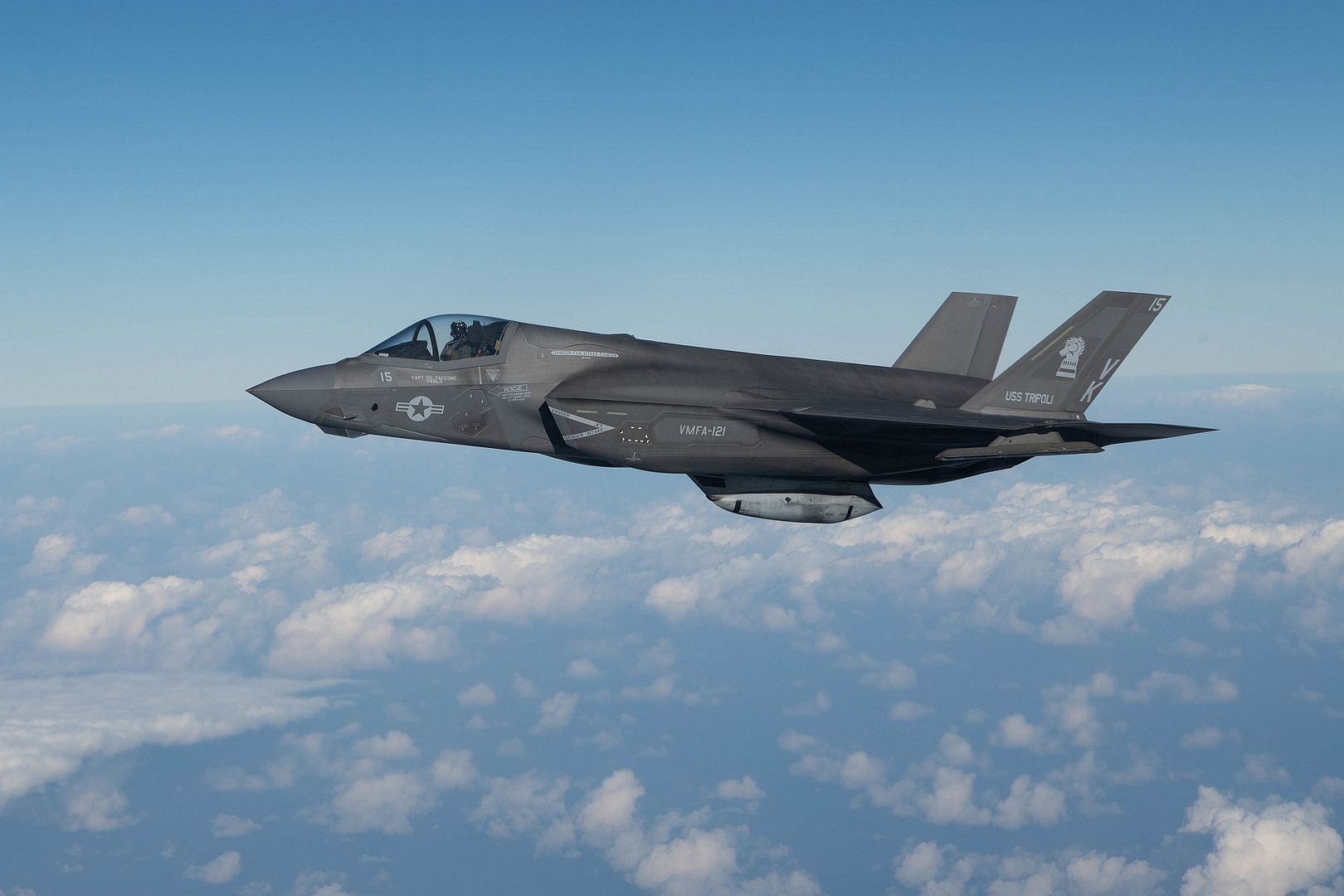
Aircraft from allied and partner nations sit on the Ramstein Air Base flightline during a Ukraine Defense Contact Group meeting at Ramstein Air Base, Germany, Jan. 20, 2023. At the meeting, world leaders discussed support for Ukraine from the U.S., its allies and partners. (U.S. Air Force photos by Airman 1st Class Tabatha Chapman)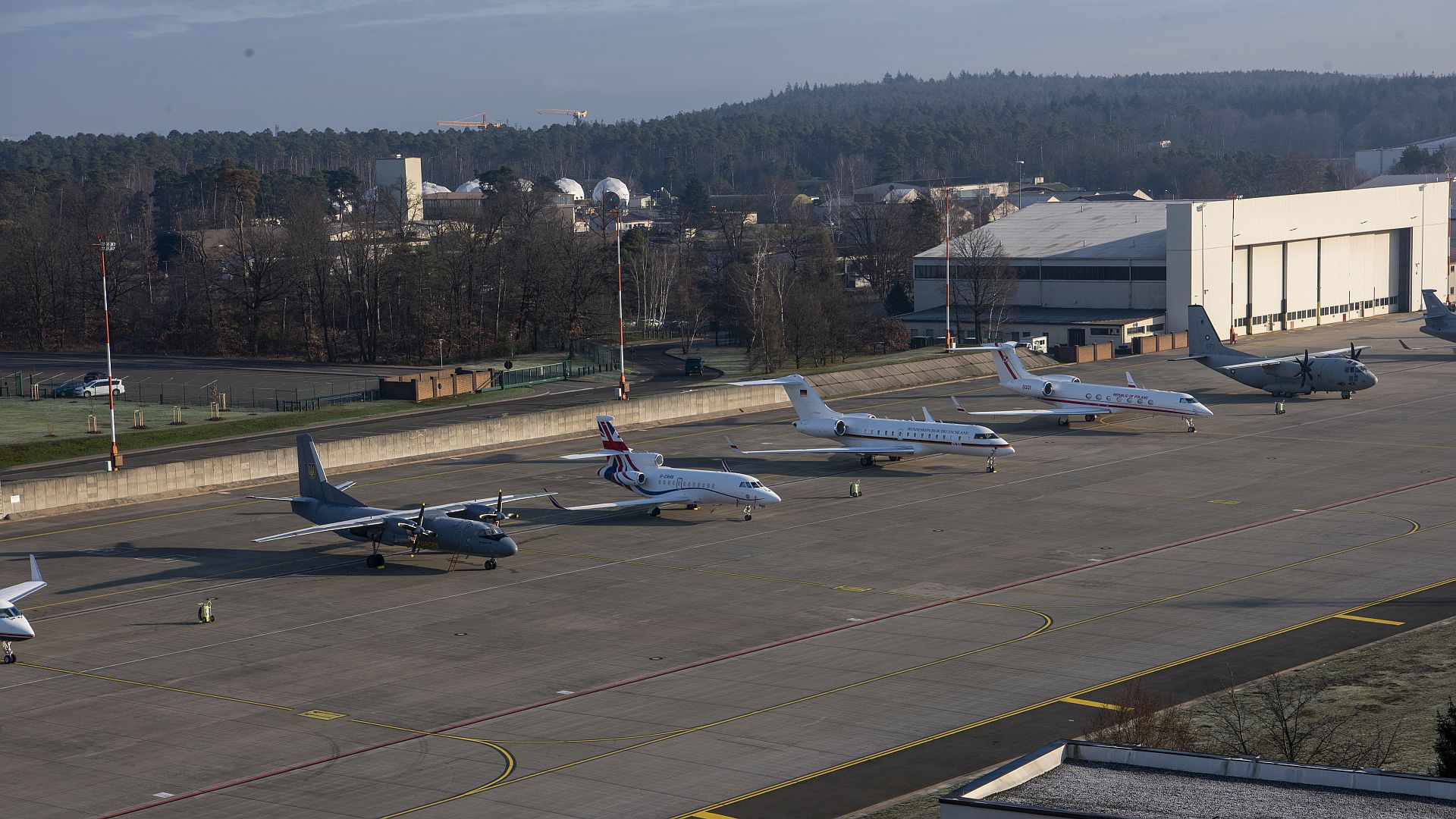
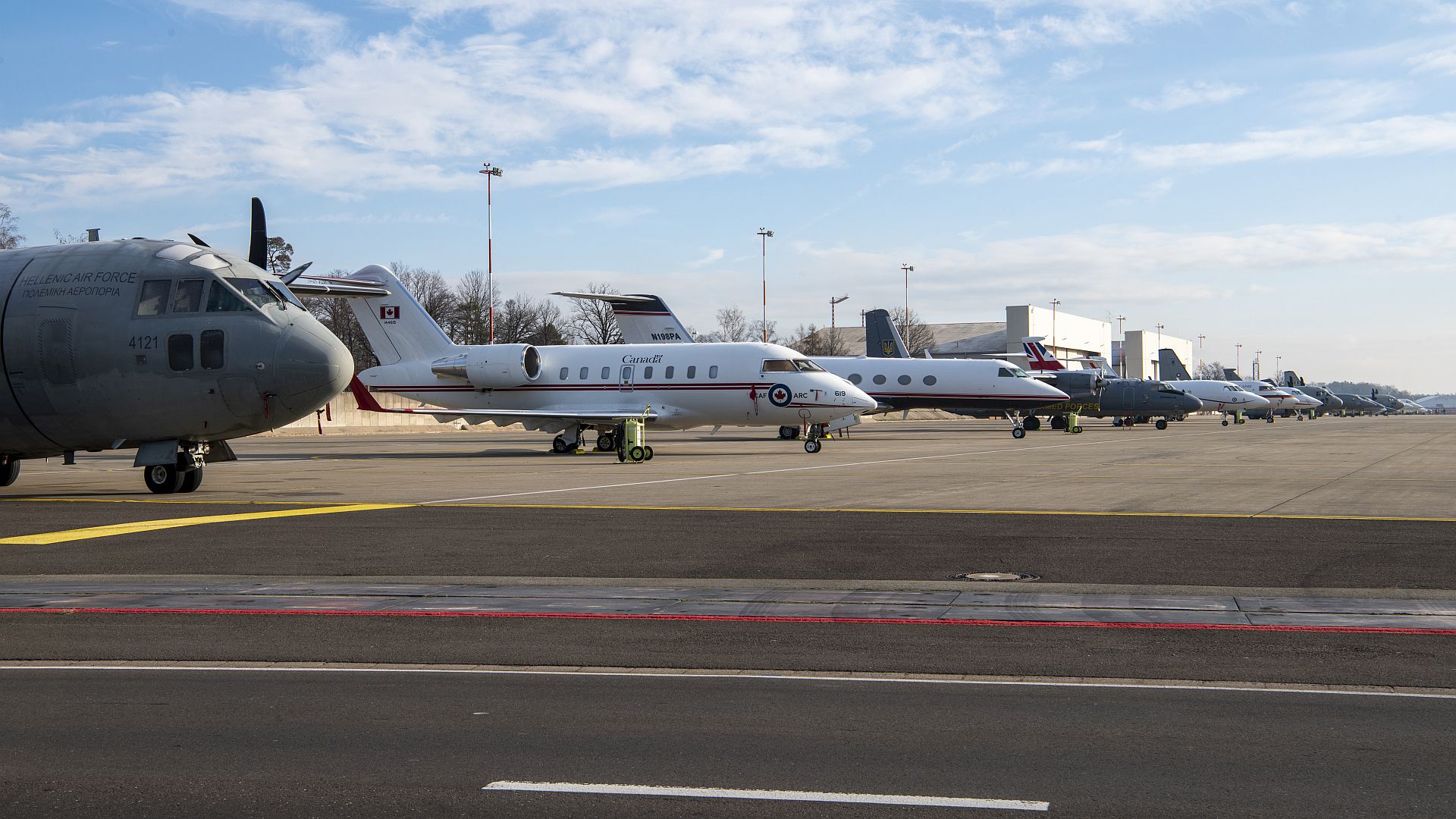
Left wing pilot, Lt. Amanda Lee, assigned to the U.S. Navy Flight Demonstration Squadron, prepares for takeoff prior to a training flight over Naval Air Facility (NAF) El Centro. Lt. Amanda Lee is the squadron’s first woman F/A-18E/F demonstration pilot. The Blue Angels are currently conducting winter training at NAF El Centro, California, in preparation for the upcoming 2023 air show season. (U.S. Navy photo by Chief Mass Communication Specialist Michael Russell/Released)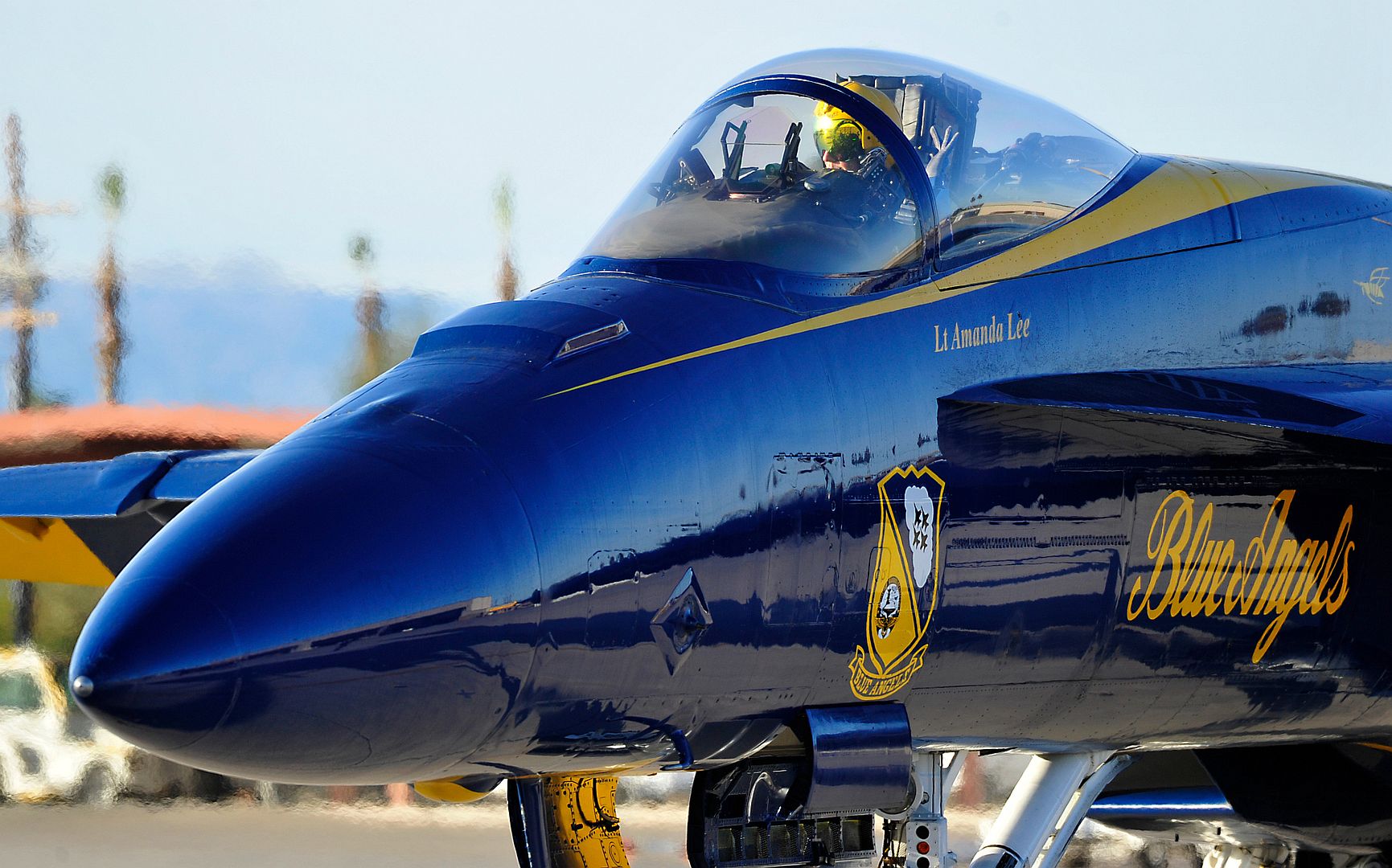
KEY WEST, Fla. (Jan 20, 2023) A U.S. Navy F/A-18F Super Hornet, attached to the “Flying Eagles” of Strike Fighter Squadron (VFA 122) takes off from Naval Air Station Key West’s Boca Chica Field in Key West, Fla. Jan. 20, 2023. Naval Air Station Key West is the state-of-the-art facility for combat fighter aircraft of all military services, provides world-class pierside support to U.S. and foreign naval vessels, and is the premier training center for surface and subsurface military operations. (U.S. Navy photo by Mass Communication Specialist 2nd Class Nicholas V. Huynh)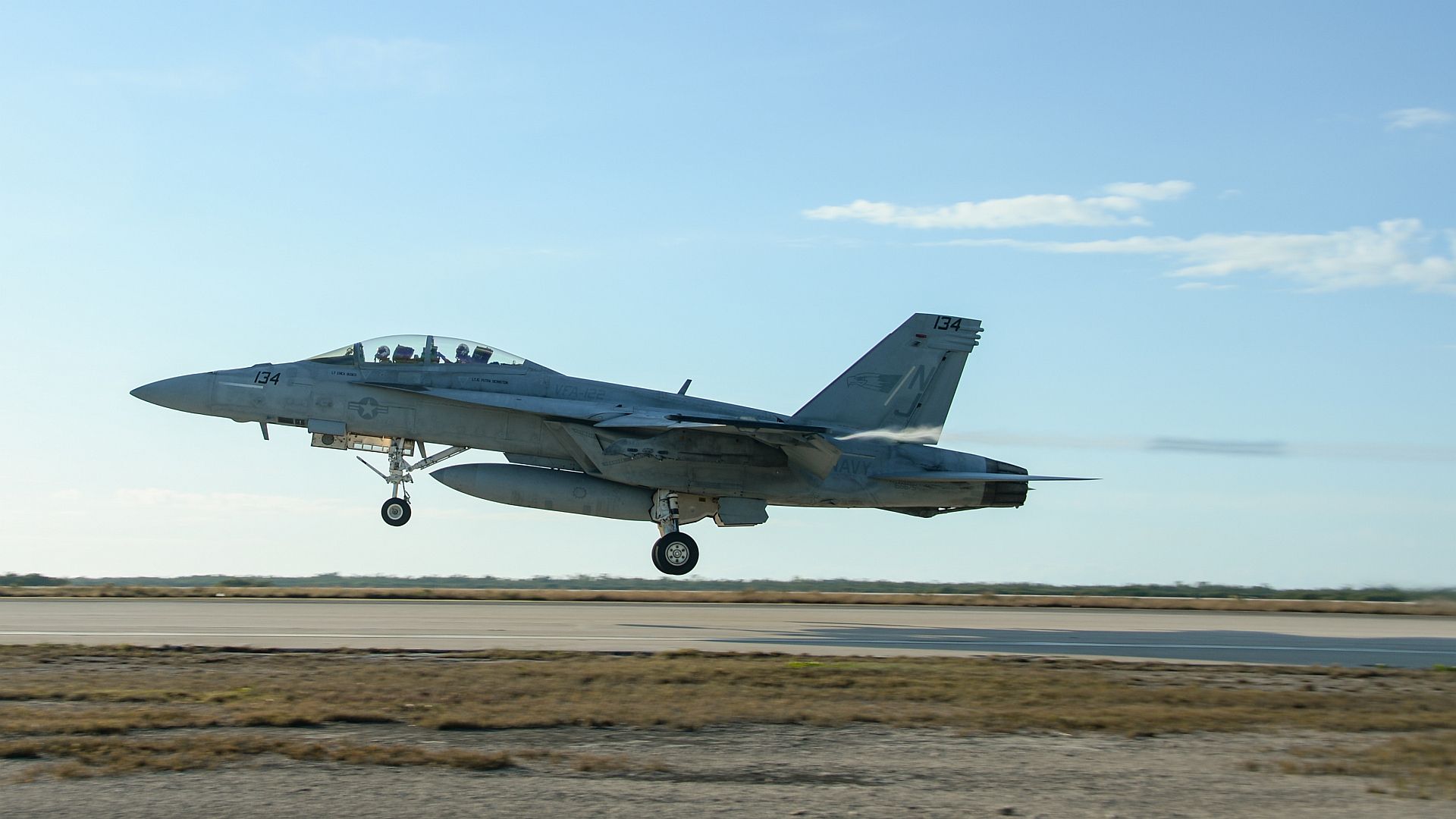
SOUTH CHINA SEA (Jan. 20, 2023) An MV-22 Osprey from the “Ugly Angels” of Marine Medium Tiltrotor Squadron (VMM) 362 taxis on the aircraft carrier USS Nimitz (CVN 68). Nimitz is in U.S. 7th Fleet conducting routine operations. 7th Fleet is the U.S. Navy's largest forward-deployed numbered fleet, and routinely interacts and operates with Allies and partners in preserving a free and open Indo-Pacific region. (U.S. Navy photo by Mass Communication Specialist 2nd Class Justin McTaggart)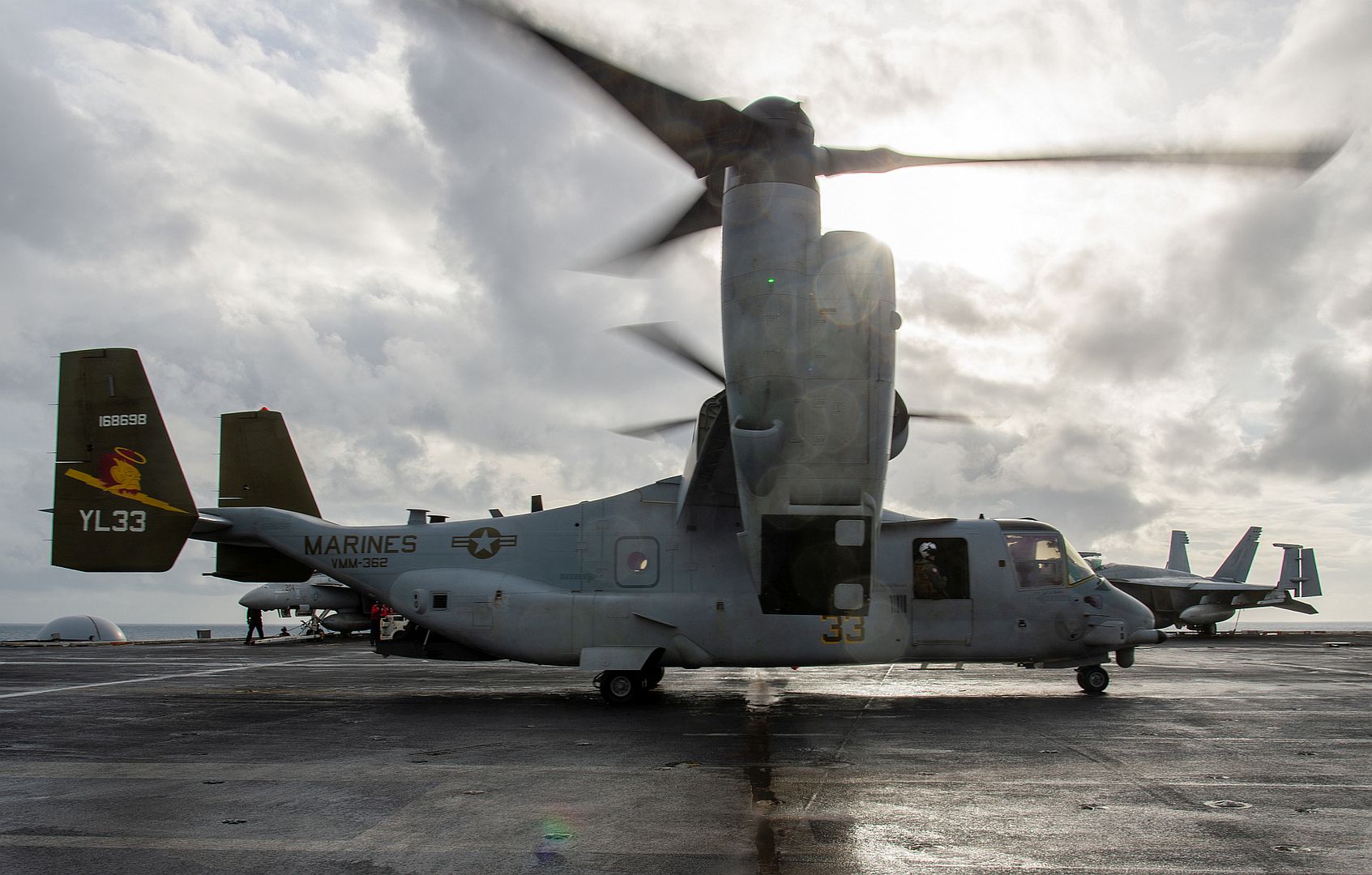
The United States Air Force Air Demonstration Squadron "Thunderbirds" practice during the team's inaugural winter training trip January 9 - 20, 2023 at Spaceport America, New Mexico. 2023 marks the team's 70th anniversary and this trip allows them to put to use, seven decades of airshow experience and best practices in preparation for the upcoming season. (U.S. Air Force photo by Tech. Sgt. Nicolas Myers)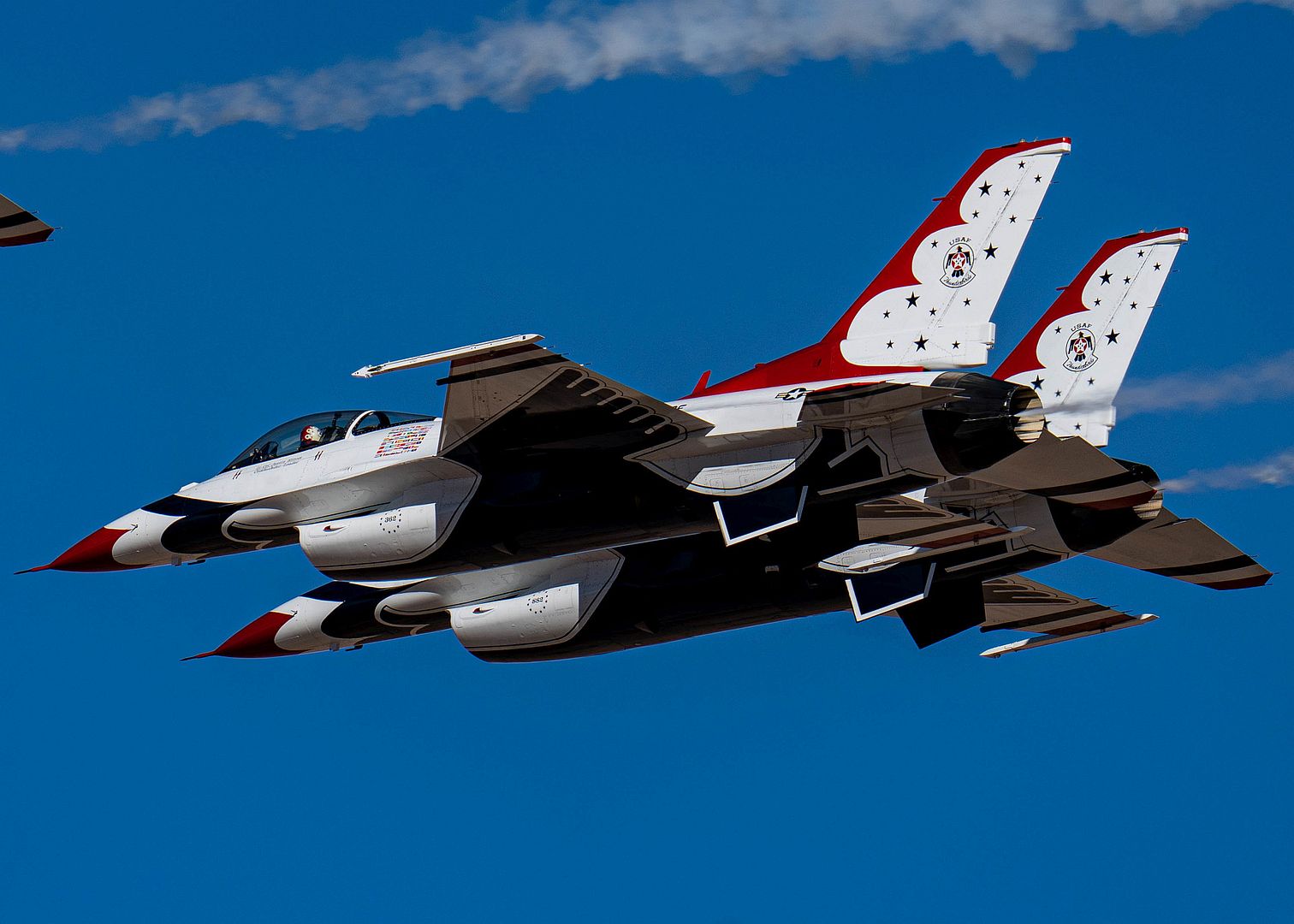
STRATFORD, Conn., Jan. 20, 2023 – Sikorsky, a Lockheed Martin company (NYSE: LMT), today delivered its 5,000th “Hawk” variant helicopter, a U.S. Army UH-60M Black Hawk. The iconic aircraft will continue to support medium-lift requirements for the U.S. military and international operators for decades into the future.
“Sikorsky, as a company, has been forged by the Black Hawk,” said Sikorsky President Paul Lemmo. “The Black Hawk and its variants deliver when reliability and performance are nonnegotiable. Hawk aircraft continue to demonstrate their versatility and readiness with the latest technological advancements and ongoing U.S. and global investment in the aircraft.”
Customers worldwide depend on the Black Hawk platform and its derivatives, including MH-60R/S maritime operations helicopters, MH-60T multi-mission helicopters, HH-60W rescue helicopters and internationally built S-70 Black Hawks to include the baseline FIREHAWK, which have all proven their versatility and capability across a spectrum of challenging mission sets.
Sikorsky’s highly skilled and experienced workforce manufactures the latest generation of Hawk aircraft built in Stratford, and there is high international demand for the Sikorsky S-70 Black Hawk, manufactured by Lockheed Martin’s PZL Mielec facility in Poland. More than 35 international customers operate the Black Hawk thanks to its global support network and continued modernization.
The U.S. Army, the largest Black Hawk operator, noted the key role the aircraft continues to fulfill during military and civil operations around the world, in addition to its significant contribution towards Joint All Domain Operations.
“For more than 40 years the Black Hawk has remarkably supported Soldiers in every major contingency operation the Army has executed,” said Col. Calvin Lane, the utility helicopter project manager for the Program Executive Office Aviation. “Even though the helicopter has been around longer than most of the Soldiers it now supports, the Army plans for it to be in front line service another 40 years and beyond. And everyone who contributes to the delivery of this aircraft in any way, contributes directly to providing combat capability that protects Soldiers and helps the Army accomplish its mission.”
The Future of the Black Hawk
As U.S. Army Future Vertical Lift aircraft are fielded, the Black Hawk will remain the foundational tactical air assault and utility aircraft for the U.S. Army. Modernization efforts that improve Black Hawk availability and reliability by lowering direct operating costs include:
A Modular Open Systems Approach allowing rapid integration of emerging technologies to maintain relevance in future operations by increasing reach, survivability, lethality and sustainment;
Improved Turbine Engine to increase lift capability and range;
Advanced Digital Vehicle Management Systems supporting Degraded Visual Environment and automated operations; and
Digital tools including predictive analytics that reduce aircraft downtime and maintenance costs.
In February 2022, Lockheed Martin flew its first uninhabited Optionally Piloted Vehicle (OPV) Sikorsky UH-60A/S-70 Black Hawk testbed helicopter powered by Sikorsky’s MATRIX™ autonomy technology in collaboration with the Defense Advanced Research Projects Agency. Subsequent flights at U.S. Army's Project Convergence 2022 demonstrated future utility missions for the platform, which shows no signs of relinquishing its preeminent medium-lift capability through continuous innovation and investment.
“We are committed to all H-60 and S-70 operators and look forward to enduring partnerships on the Hawk program in the years to come,” added Nathalie Previte, vice president of Army and Air Force Systems at Sikorsky. “It remains our priority to fulfill our customers’ requirements and meet the needs of current and future operational units. With unmatched versatility and global interoperability, Hawk aircraft continue to advance 21st century security.”
For more information about the Black Hawk, visit our website: www.lockheedmartin.com/blackhawk.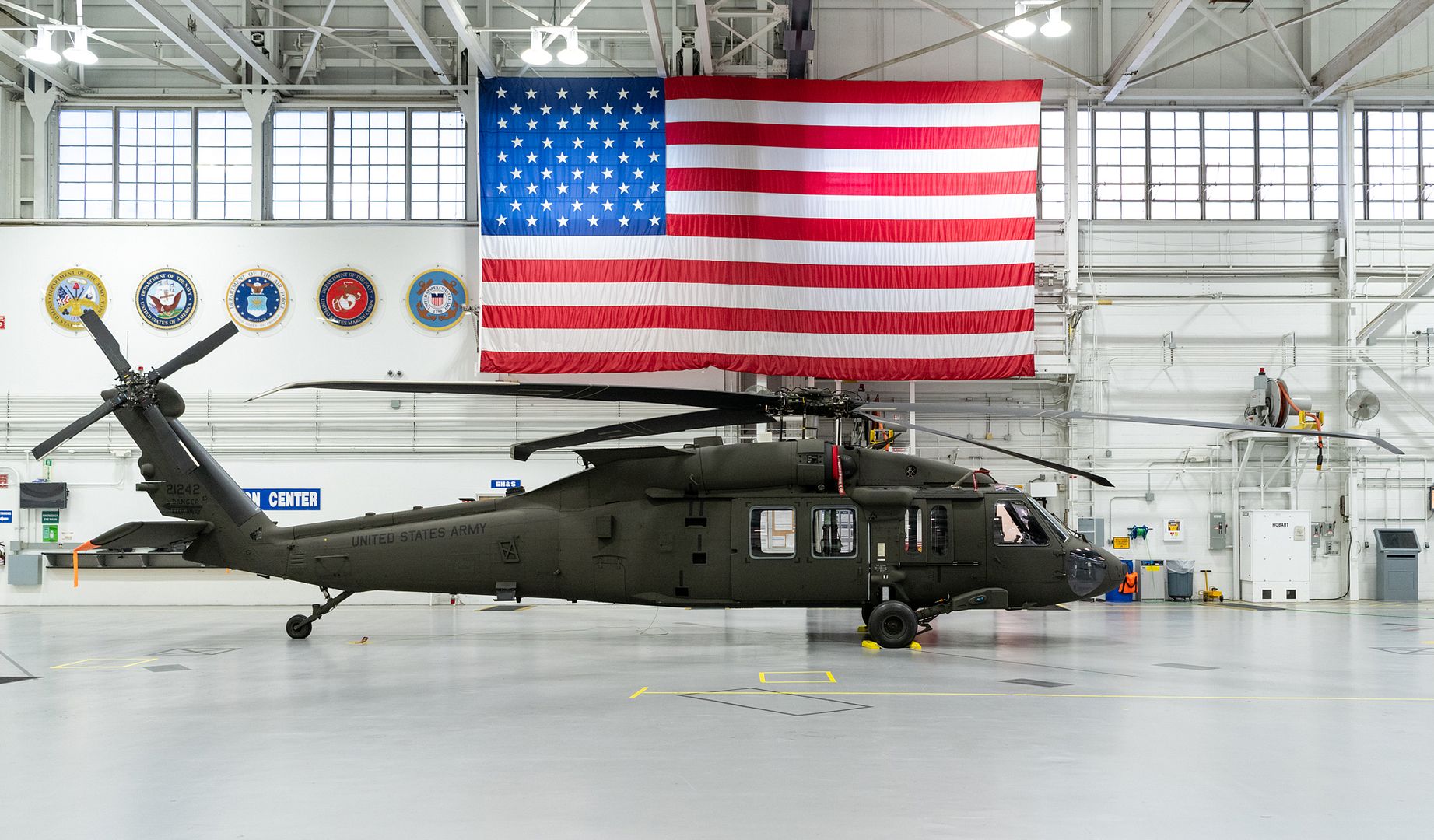
Tashkent, 20 January 2023 – Uzbekistan Airways, the national carrier of the Republic of Uzbekistan, has placed a firm order with Airbus for 12 A320neo Family aircraft (eight A320neo and four A321neo). The new aircraft will join the carrier’s current fleet of 17 Airbus A320 Family aircraft. The choice of the engines will be made by the airline at a later stage.
The A320neo Family aircraft will feature the new Airbus Airspace cabin, bringing premium comfort to the single aisle market. The airline is planning to operate its new aircraft to further develop its domestic and international route network.
“The contract signed with Airbus is a new step in our fleet modernization strategy aimed at offering our passengers the most modern and comfortable aircraft. At the same time these new fuel efficient A320neo Family aircraft will help us to further expand and strengthen our footprint in Central Asia as well as develop our domestic and international network”, said Ilhom Makhkamov, Chairman of the Board of Uzbekistan Airways.
“Our cooperation with Uzbekistan Airways dates back to 1993. It is an honor that the A320neo Family has now again been chosen. We see good potential for growth in the Central Asia region in the years to come. The modern and efficient A320neo will enable Uzbekistan Airways to benefit from this growth and play a leading role in this region”, said Christian Scherer, Chief Commercial Officer and Head of International at Airbus.
The A320neo Family incorporates the very latest technologies including new generation engines and Sharklets, which together deliver at least 20 percent fuel saving and CO2 emissions. With over 8,600 orders from more than 130 customers, the A320neo Family is the world’s most popular aircraft.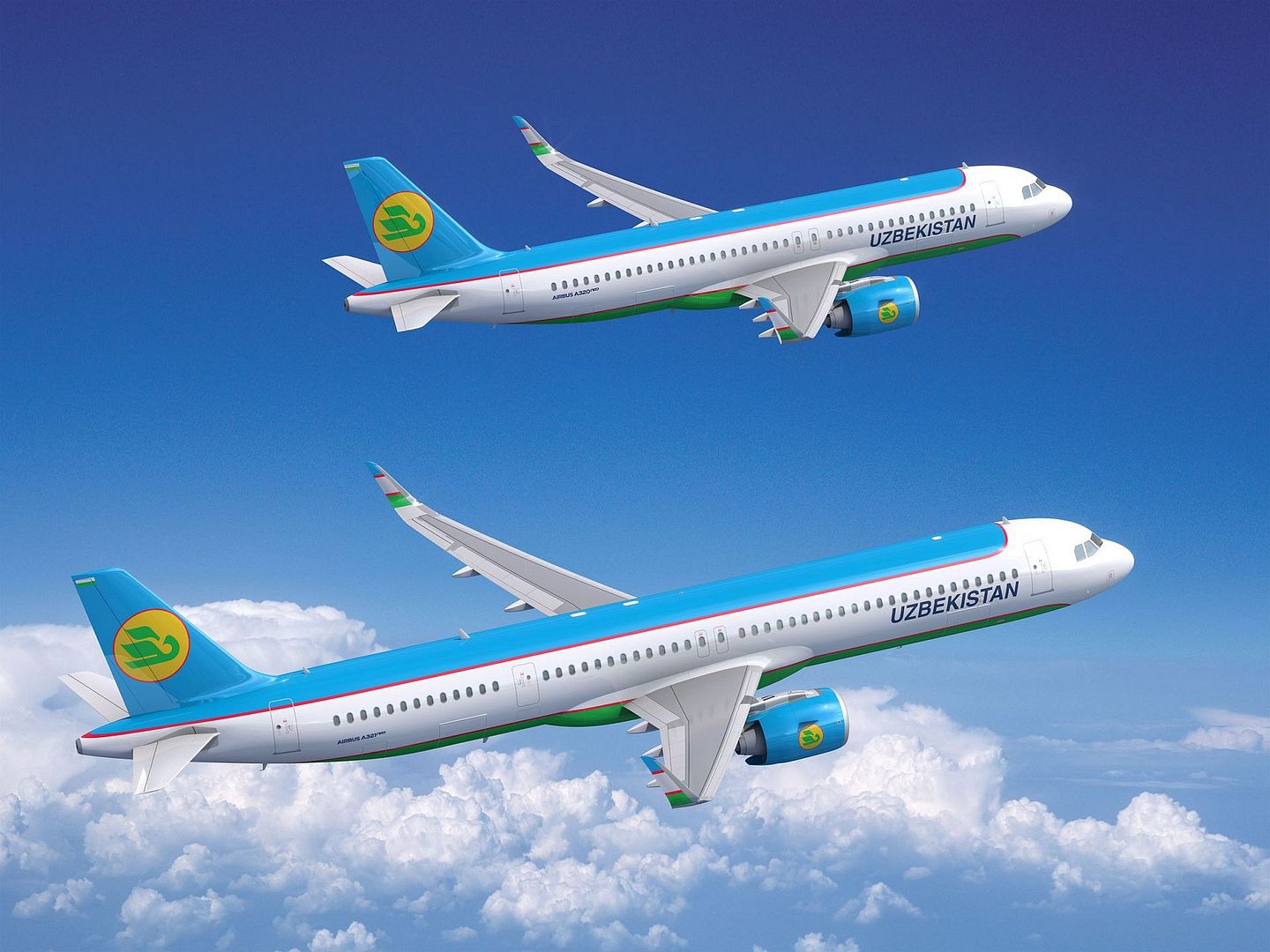
-
 Main AdminA U.S. Air Force KC-135 Stratotanker aircraft assigned to the 100th Air Refueling Wing undergoes pre-flight procedures on the flightline, Jan. 18, 2023, at Royal Air Force Mildenhall, England. Aircraft maintenance Airmen prepare the KC-135 for de-icing to ensure the control surfaces are not frozen before taking off for its mission. To clarify though this aircraft has the Air Mobility Command painted on its tail it is now under the command of the 100th Air Refueling Wing. (U.S. Air Force photo by Airman 1st Class Christopher Campbell)
Main AdminA U.S. Air Force KC-135 Stratotanker aircraft assigned to the 100th Air Refueling Wing undergoes pre-flight procedures on the flightline, Jan. 18, 2023, at Royal Air Force Mildenhall, England. Aircraft maintenance Airmen prepare the KC-135 for de-icing to ensure the control surfaces are not frozen before taking off for its mission. To clarify though this aircraft has the Air Mobility Command painted on its tail it is now under the command of the 100th Air Refueling Wing. (U.S. Air Force photo by Airman 1st Class Christopher Campbell)
An F-15C Eagle assigned to the 67th Fighter Squadron takes off for Exercise Southern Beach at Kadena Air Base, Japan, Jan. 19, 2023. Bilateral training exercises like Southern Beach help build trusting relationships among nations, ensuring allies are able to come together to effectively respond to demanding scenarios and execute high-end missions in defense of a free and open Indo-Pacific region. (U.S. Air Force photo by Airman 1st Class Luis E. Rios Calderon)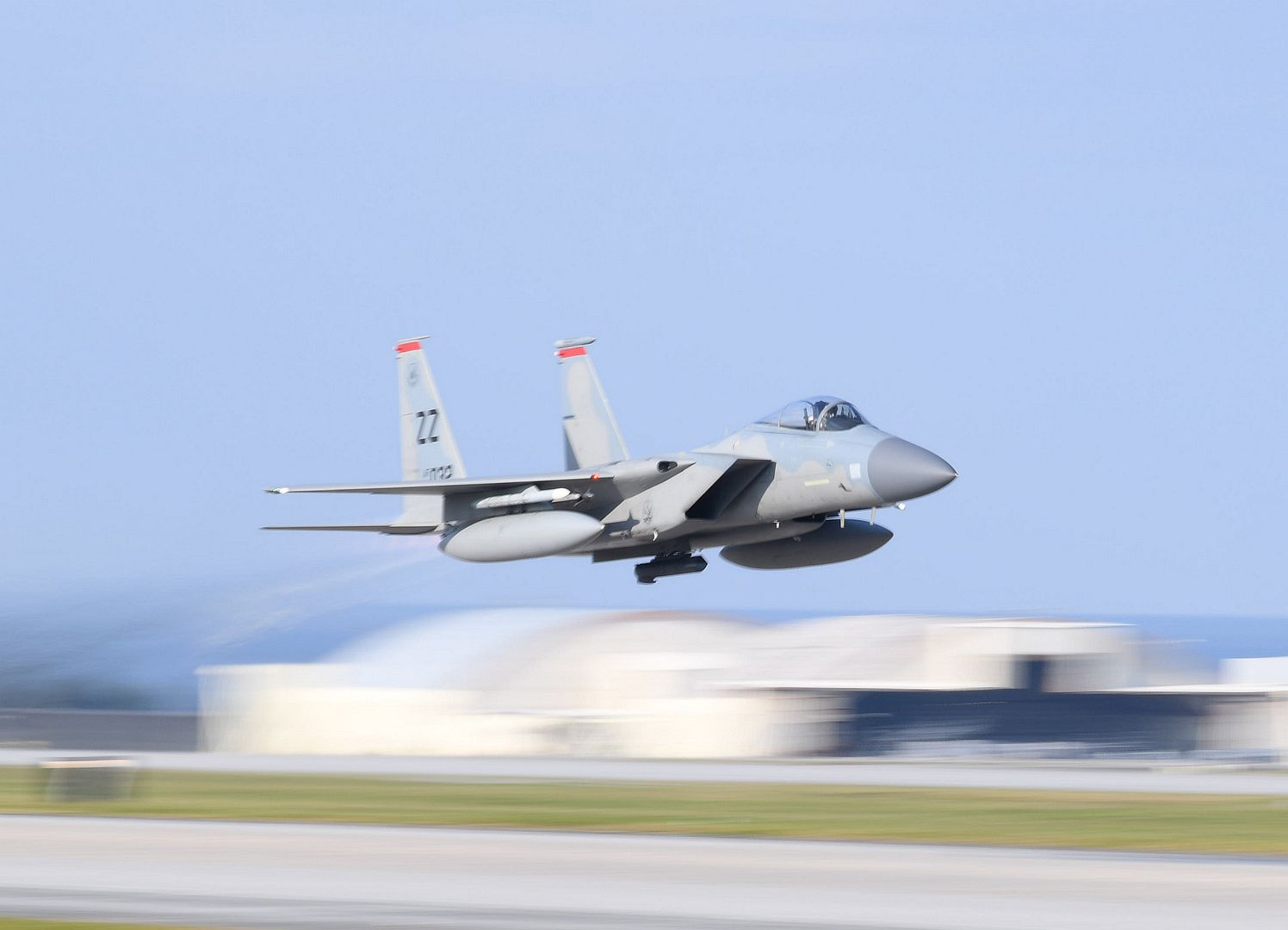
U.S. Air Force F-16 Fighting Falcon aircraft receive fueling support during a hot pit refueling operation, Jan. 10, 2023, at King Fahad Air Base, Kingdom of Saudi Arabia. The 378th Air Expeditionary Wing conducted this exercise in coordination with Royal Saudi Air Force partners to further cultivate a resolute partnership, ensure air defense capabilities and deter regional aggressors. (U.S. Air Force photo by Staff Sgt. Shannon Bowman)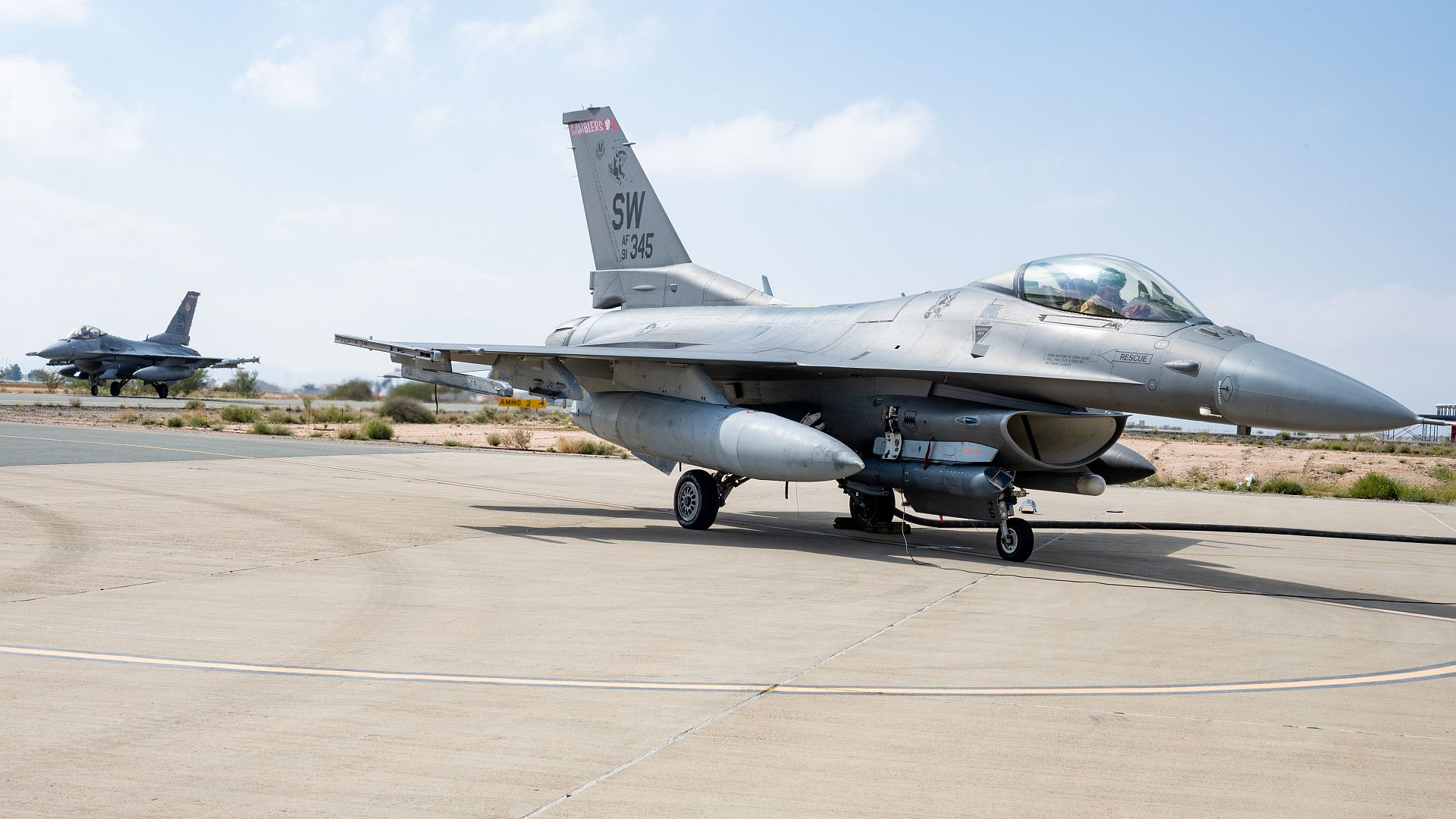
23 Jan 2023
Aviation Task Force 3 has returned to Ämari Air Base, Estonia, with three Chinooks from 18(B) Squadron, RAF Odiham, for Operation PELEDA. Approximately 100 people are deployed with the aircraft, including teams from Joint Helicopter Support Squadron, Tactical Supply Wing, 244 Signal Squadron, and other enablers from the RAF and Army.
During the deployment the aircraft will be supporting the UK-led enhanced Forward Presence in Estonia, working with UK forces and NATO Allies in the country. The Chinooks will be working closely with Estonian Defence Forces, to increase interoperability and capability, as Estonia does not have its own heavy-lift rotary capability.
The arrival of the Chinooks at Ämari was marked by Estonian Defence Minister, Mr Hanno Pevkur, visiting the base last Tuesday. He was joined by HMA Mr Ross Allen and invited journalists, all of whom were able to experience a short flight in a Chinook before interviews on the ground.
The Chinooks transported the Secretary of State for Defence, The Right Honourable Ben Wallace, and other European defence ministers and representatives, for their meeting at Tapa Camp to announce The Tallinn Pledge in support of Ukraine.
The rest of the first week saw Chinooks straight into taskings, including training with Estonian Defence Forces, and flying NATO personnel who work in the Estonian Defence Forces Tallinn Headquarters. This also allowed members of the public in Tallinn to spot the aircraft near some of the city’s landmarks.
As well as the aircraft being busy, the deployed personnel have also completed the Cold Weather Operator Course, to help prepare them for working through the Estonian winter.
The aim of the deployment is to fulfil the bilateral agreement signed by Ben Wallace and Hanno Pevkur last November to help bolster defence and security across the Baltic states alongside the NATO enhanced Forward Presence. Aviation Task Force 3 is due to be in EST Jan-late Feb. Further deployments of rotary aircraft will follow later in the year.
(Photo courtesy of the RAF)
21 Jan 2023.
Last month, 903 Expeditionary Air Wing personnel based at RAF Akrabiaotiri deployed to the Kingdom of Saudi Arabia to rehearse their ability to operate away from home units and working with the Royal Saudi Air Force. Exercises of this nature allow the RAF to temporarily deploy with the minimum footprint of people, equipment, and aircraft at very short notice and undertake vital training alongside partner nations.
The deployment consisted of a small number of engineers, two Typhoon FGR4s, a C-130 Hercules, and was supported by a Voyager air-to-air refueller. The collaboration between the RAF and Royal Saudi Air Force provides the opportunity for both forces to train with 4th generation fighter aircraft and demonstrates the UKs enduring commitment to the security and partnership of the region.
"This short deployment provided a valuable training opportunity for the Typhoon Pilots and engineers, working alongside other nationalities is an important skill, given the importance of the relationship between the KSA and the UK, our ability as a Typhoon Squadron to deploy and operate with one of our most important allies is a key element of enhancing and deepening the ties between the Royal Saudi Air Force and RAF.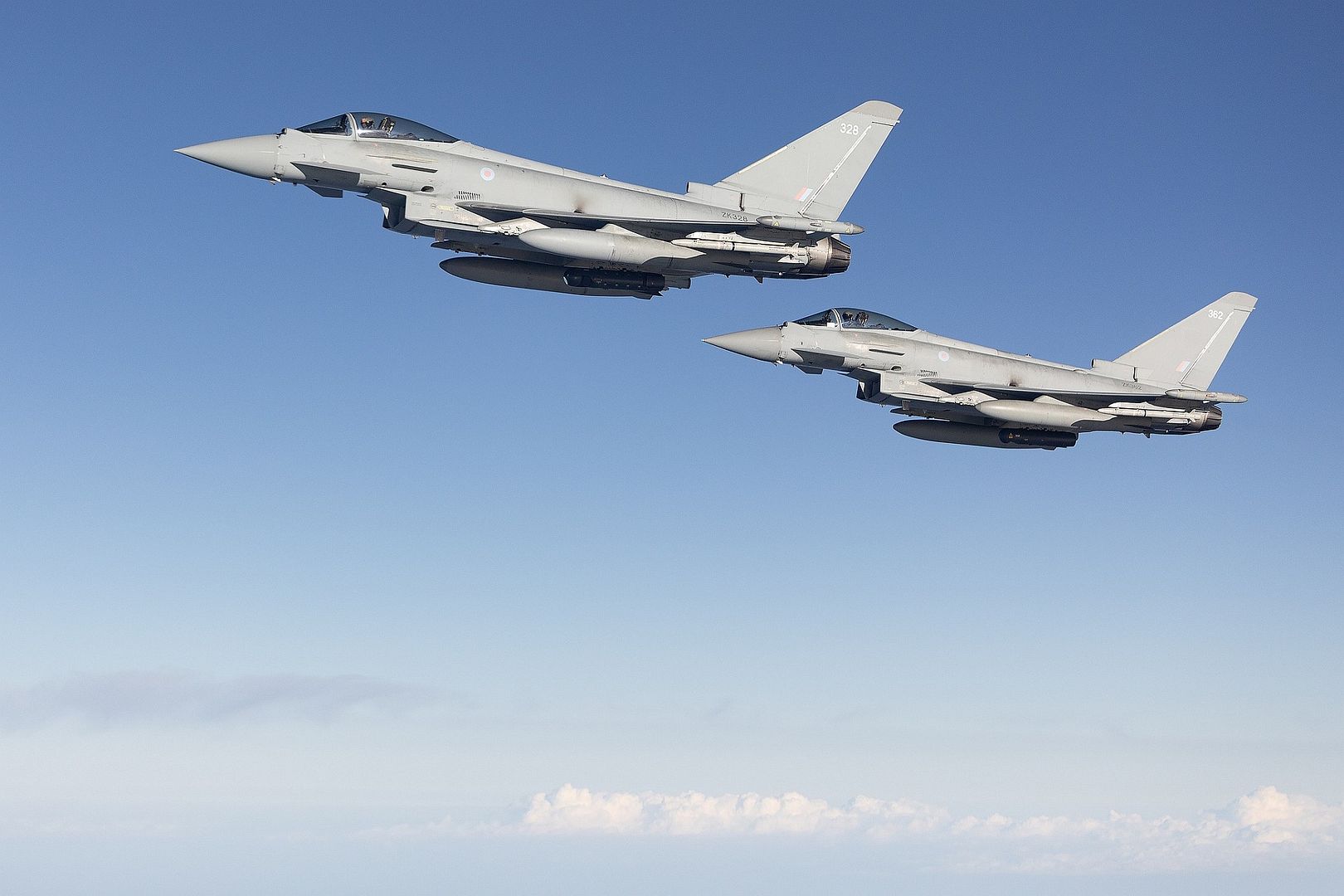
It also allows us as a Squadron at the tactical level to hone our ability to project and operate Typhoon at an unfamiliar location, thereby identifying valuable lessons regarding the footprint required to operate Typhoon at range concurrently with operational tasking.
Flight Lieutenant Davoren
903 Expeditionary Air Wing Typhoon Detachment Commander "
(Photos courtesy of the RAF)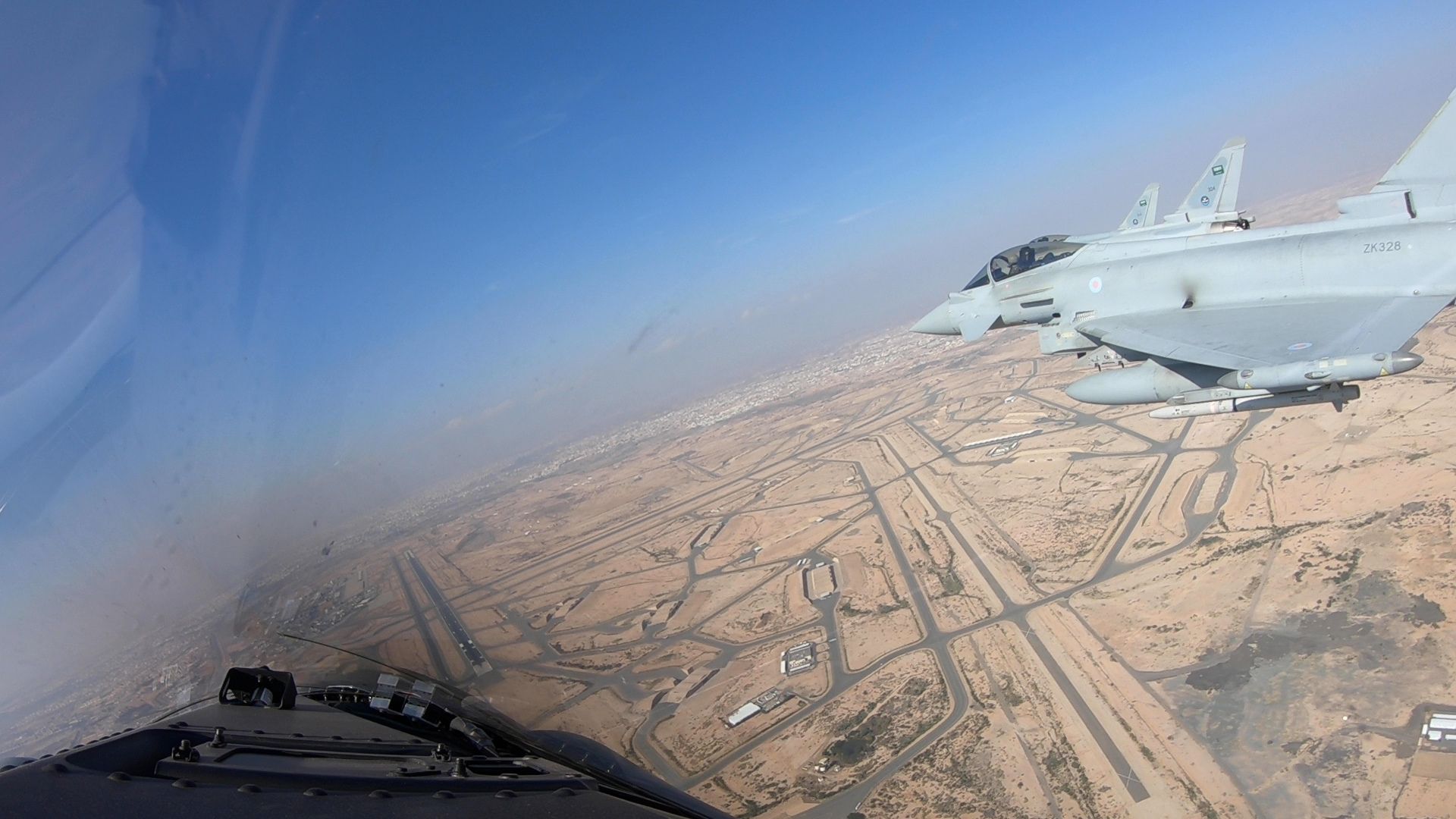
-
 Main AdminAn A-10 Thunderbolt II aircraft flown by the 107th Fighter Squadron, 127th Wing, returns to Selfridge Air National Guard Base, Michigan, after a local training mission on Jan. 23, 2023. (U.S. Air National Guard by Munnaf H. Joarder)
Main AdminAn A-10 Thunderbolt II aircraft flown by the 107th Fighter Squadron, 127th Wing, returns to Selfridge Air National Guard Base, Michigan, after a local training mission on Jan. 23, 2023. (U.S. Air National Guard by Munnaf H. Joarder)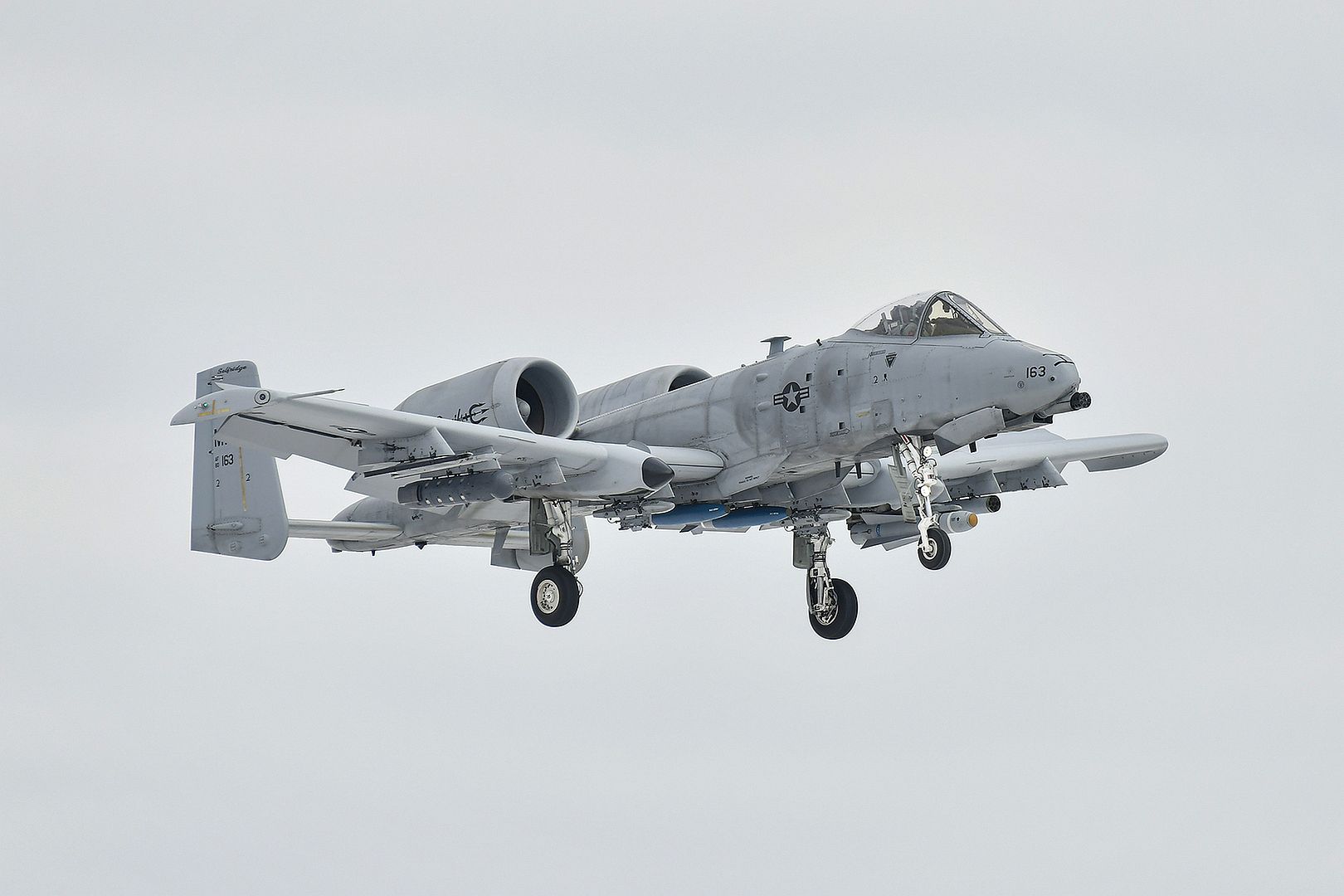
PACIFIC OCEAN (Jan. 22, 2023) – A U.S. Air Force HH-60 Pave Hawk helicopter assigned to the 66th Rescue Squadron flies over amphibious assault carrier USS Tripoli (LHA 7) Jan. 22, 2023. Tripoli is underway conducting routine operations in U.S. 3rd Fleet. (U.S. Navy photo by Mass Communication Specialist 1st Class Peter Burghart)
Ionian Sea (Jan. 23, 2023) An F/A-18E Super Hornet, attached to Strike Fighter Squadron (VFA) 143, lands on the flight deck of the Nimitz-class aircraft carrier USS George H.W. Bush (CVN 77) during flight operations, Jan. 23, 2023. Carrier Air Wing (CVW) 7 is the offensive air and strike component of Carrier Strike Group (CSG) 10 and the George H.W. Bush CSG. The squadrons of CVW-7 are VFA-143, VFA-103, VFA-86, VFA-136, Carrier Airborne Early Warning Squadron (VAW) 121, Electronic Attack Squadron (VAQ) 140, Helicopter Sea Combat Squadron (HSC) 5, and Helicopter Maritime Strike Squadron (HSM) 46. The George H.W. Bush CSG is on a scheduled deployment in the U.S. Naval Forces Europe area of operations, employed by U.S. Sixth Fleet to defend U.S., allied and partner interests. (U.S. Navy photo by Mass Communication Specialist 3rd Class Nicholas Avis)
IONIAN SEA (Jan. 23, 2023) An F/A-18F Super Hornet aircraft, attached to Strike Fighter Squadron (VFA) 103, takes off from the flight deck of the Nimitz-class aircraft carrier USS George H.W. Bush (CVN 77), Jan. 23, 2023. Carrier Air Wing (CVW) 7 is the offensive air and strike component of Carrier Strike Group (CSG) 10, George H.W. Bush CSG. The squadrons of CVW-7 are VFA-86, VFA-103, VFA-136, VFA-143, Electronic Attack Squadron (VAQ) 140, Carrier Airborne Early Warning Squadron (VAW) 121, Helicopter Sea Combat Squadron (HSC) 5, and Helicopter Maritime Strike Squadron (HSM) 46. The George H.W. Bush CSG is on a scheduled deployment in the U.S. Naval Forces Europe area of operations, employed by U.S. Sixth Fleet to defend U.S., allied, and partner interests. (U.S. Navy photo by Mass Communication Specialist 3rd Class Chandler Ludke)
U.S. Marine Corps F-35B Lightning II aircraft with Marine Fighter Attack Squadron 242 taxi the flight line prior to taking off during an expeditionary advanced base operation (EABO) exercise at Kadena Air Force Base, Okinawa, Japan, Jan. 19, 2023. Marine Aircraft Group 12 regularly exercise expeditionary warfare concepts such as EABO to sustain their role as a forward-deployed group capable of supporting U.S. expeditionary operations in the Indo-Pacific. (U.S. Marine Corps photo by Sgt. Jose Angeles)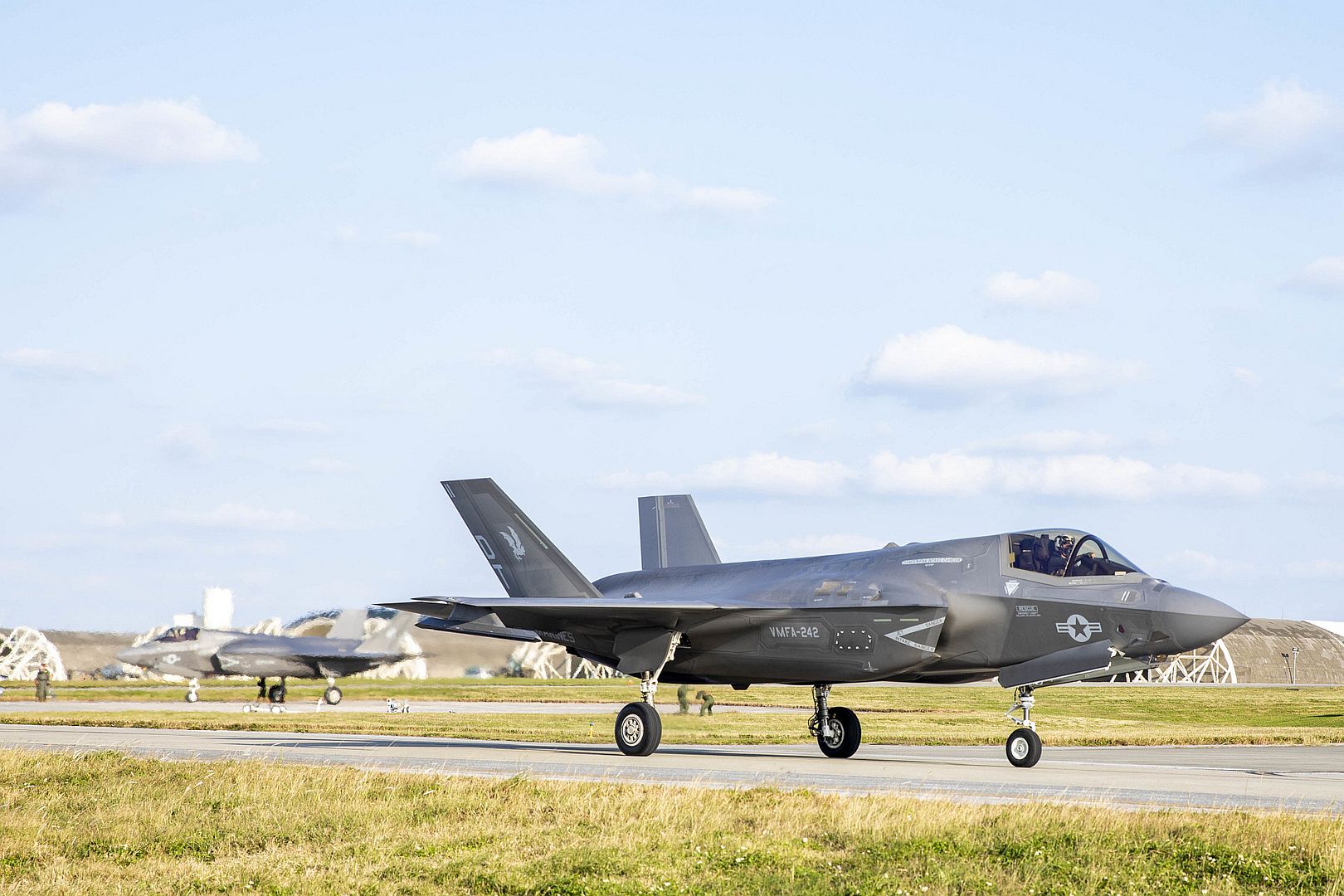
A U.S. Navy EA-18G Growler assigned to Electronic Attack Squadron 135 at Naval Air Station Whidbey Island, Washington, takes-off prior to the start of Red Flag 23-1 at Nellis Air Force Base, Nev., Jan 19, 2023. Red Flag allows U.S. and coalition forces to train together in high-end, realistic scenarios increasing interoperability of the joint force. (U.S. Air Force photo by Senior Airman Megan Estrada)
A Voyager KC assigned to the 10 and 101 Squadrons based at Royal Air Force Brize Norton, United Kingdom, lands prior to the start of Red Flag 23-1 at Nellis Air Force Base, Nev., Jan 19, 2023. Red Flag provides real-time war scenarios to test the readiness capabilities of U.S. military services and coalition forces. (U.S. Air Force photo by Senior Airman Megan Estrada)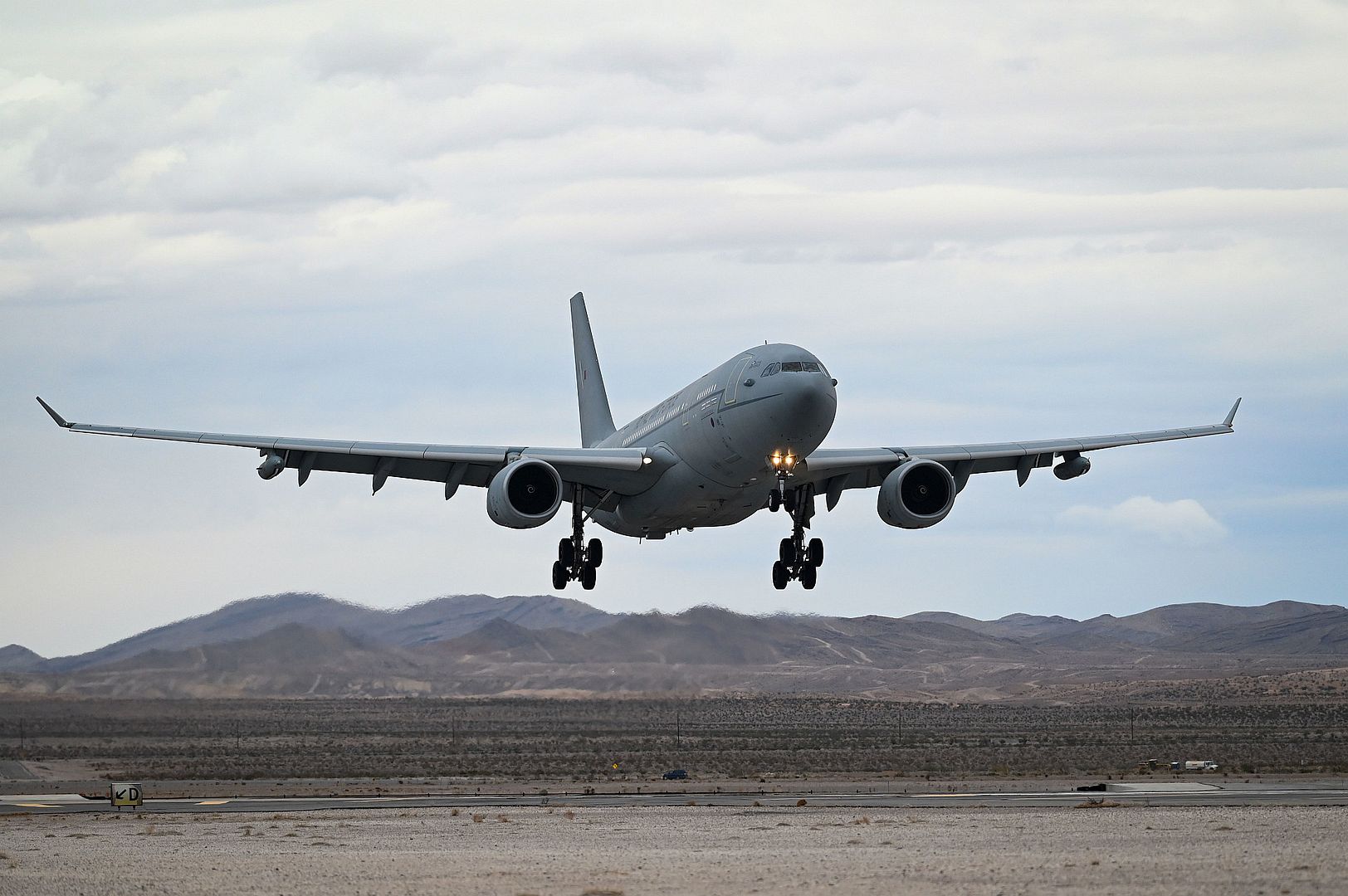
A U.S. Marine Corps F-35B from Marine Fighter Attack Squadron-211, Marine Corps Air Station Yuma, Arizona, takes off prior to the start of Red Flag 23-1 at Nellis Air Force Base, Nev., Jan 19, 2023. Red Flag is the U.S. Air Force’s premier air-to-air combat training exercise, which provides aircrews the experiences of multiple, intensive air combat sorties in the safety of a training environment. (U.S. Air Force photo by Senior Airman Megan Estrada)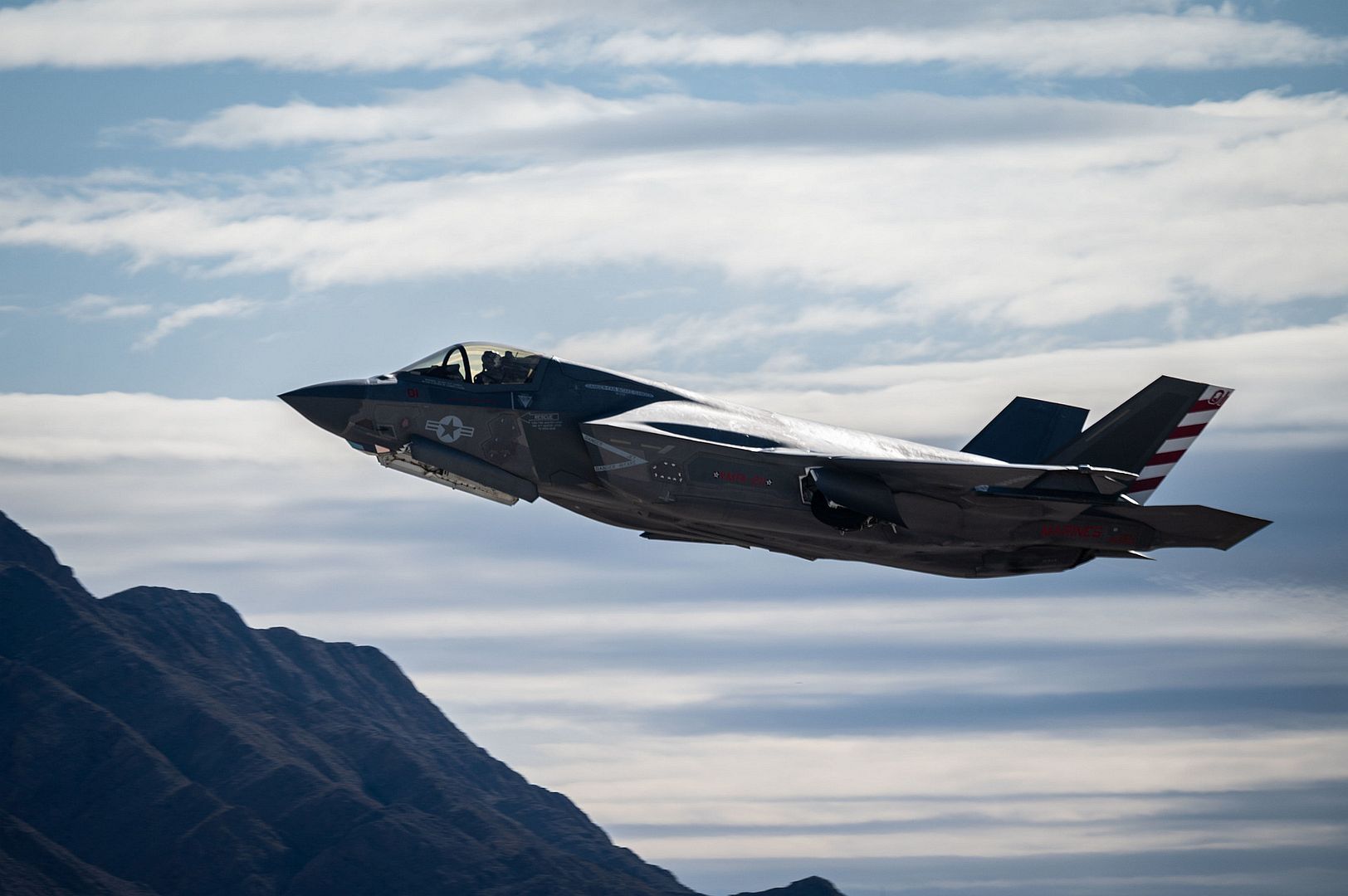
F-16 Fighting Falcon aircraft assigned to the 77th Expeditionary Fighter Generation Squadron, sit parked on the flight line Jan. 12, 2023, at King Fahad Air Base, Kingdom of Saudi Arabia, during an off-station agile combat employment exercise. The 378th Air Expeditionary Wing conducted this exercise in coordination with Royal Saudi Air Force partners to further cultivate a resolute partnership, ensure air defense capabilities and deter regional aggressors. (U.S. Air Force photos by Staff Sgt. Shannon Bowman)
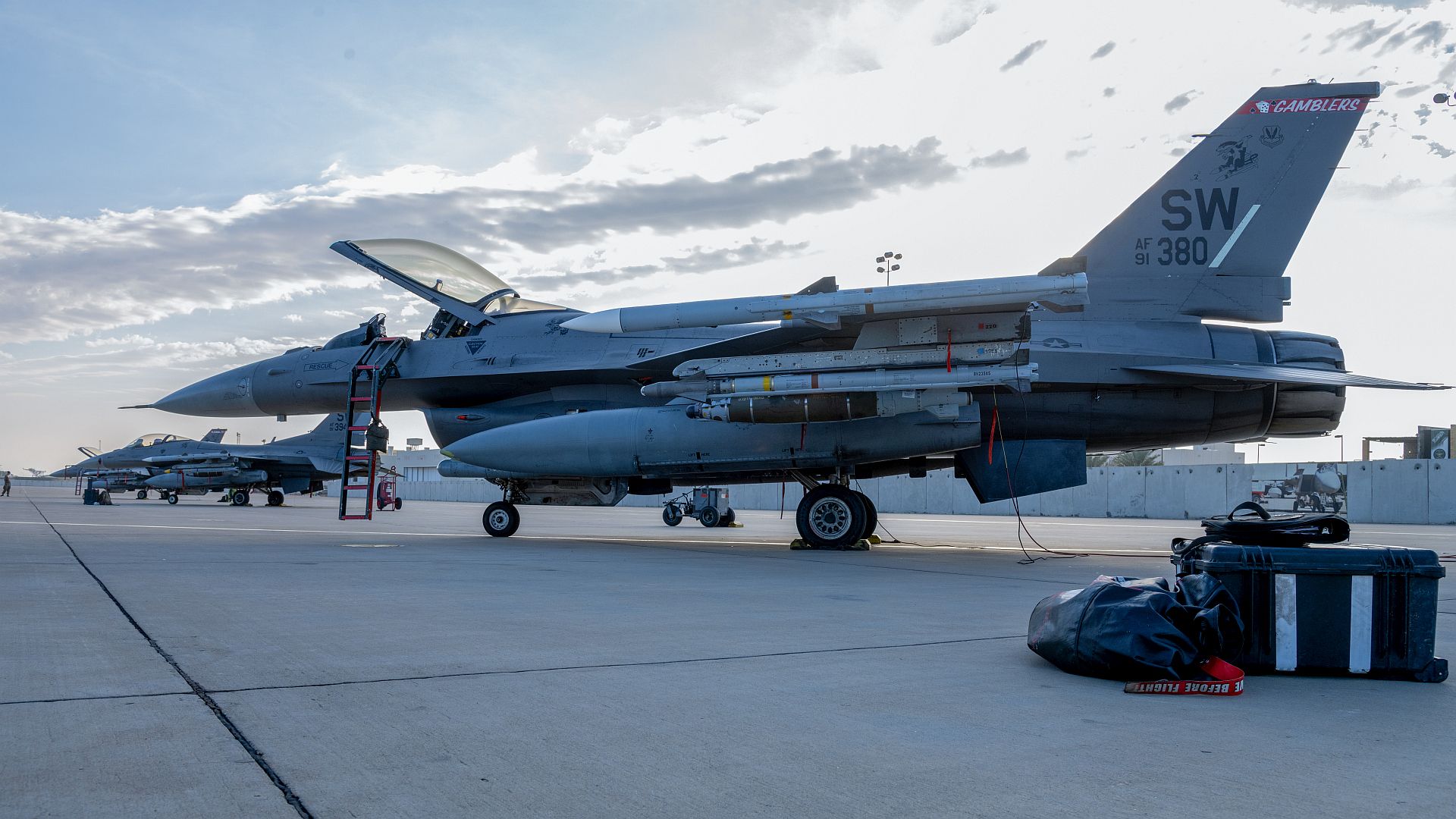
GREENVILLE, S.C., Jan. 24, 2023 /PRNewswire/ -- Lockheed Martin [NYSE: LMT] today announced the successful first flight of the F-16 Block 70 at its Greenville, South Carolina site.
The flight occurred Jan. 24 at 9:17 a.m. ET, with Lockheed Martin test pilots Dwayne "Pro" Opella and Monessa "Siren" Balzhiser at the helm. Total flight time was approximately 50 minutes and included airworthiness checks, such as engine, flight control and fuel system checks, as well as basic aircraft handling.
"Today's successful flight is a testament of the hard work, dedication and commitment to our customers and their missions," said OJ Sanchez, vice president, Integrated Fighter Group, which includes the F-16 program. "This milestone demonstrates Lockheed Martin's commitment to advancing this program and getting this much-needed aircraft and its advanced 21st Century Security capabilities to the warfighter."
This F-16 Block 70 jet is the first of 16 jets to be delivered to Bahrain. Six countries have selected Block 70/72 aircraft. In addition to the current official backlog of 128 jets to-date to be built in Greenville, Jordan last year signed a Letter of Offer and Acceptance (LOA) for eight jets and last week signed an additional LOA for four more jets. Lockheed Martin has received a contract to begin Jordan's long-lead activities. Bulgaria has also signed an LOA for an additional eight jets for its fleet. Once these are finalized, the backlog will increase to 148.
"Lockheed Martin is fully committed to delivering quality platforms for our customers' critical missions, and I am so proud of our talented team in Greenville," said Danya Trent, F-16 Vice President and Site Lead in Greenville. "This is the culmination of significant development, design, digital engineering, supply chain and production line advances to an already proven platform that will continue to deliver decades of service in support of customers' national security."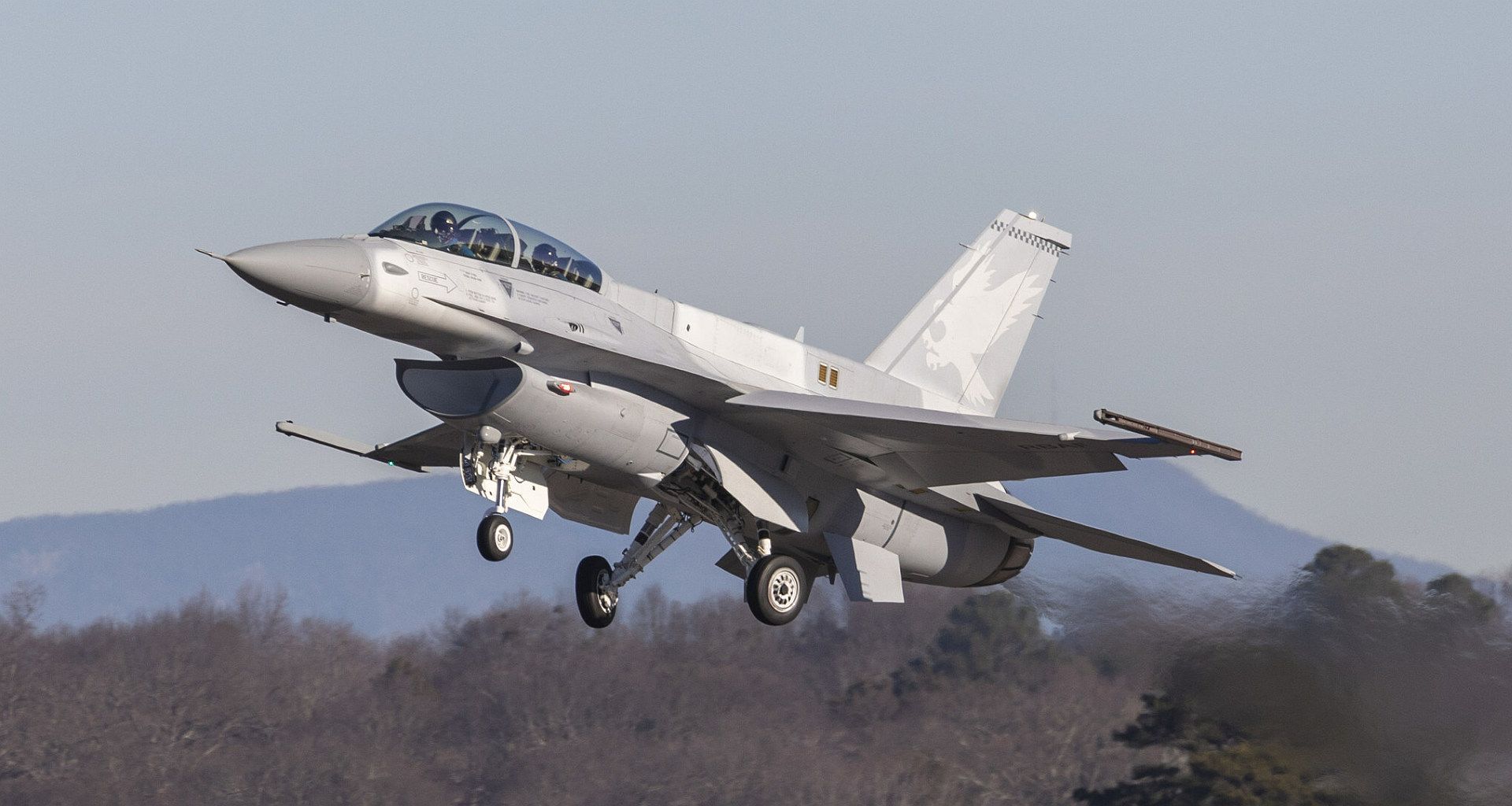
About the F-16
The F-16 is a strategic and valuable choice for many customers around the world seeking advanced, 4th generation fighter aircraft capabilities, regional and worldwide partnerships, and affordable lifecycle costs. More than 3,000 F-16s are operating today in 25 countries. The F-16 has flown an estimated 19.5 million flight hours and at least 13 million sorties. Today's latest version, the Block 70/72, offers unparalleled capabilities and will be flown by at least five countries beginning in the mid-2020s.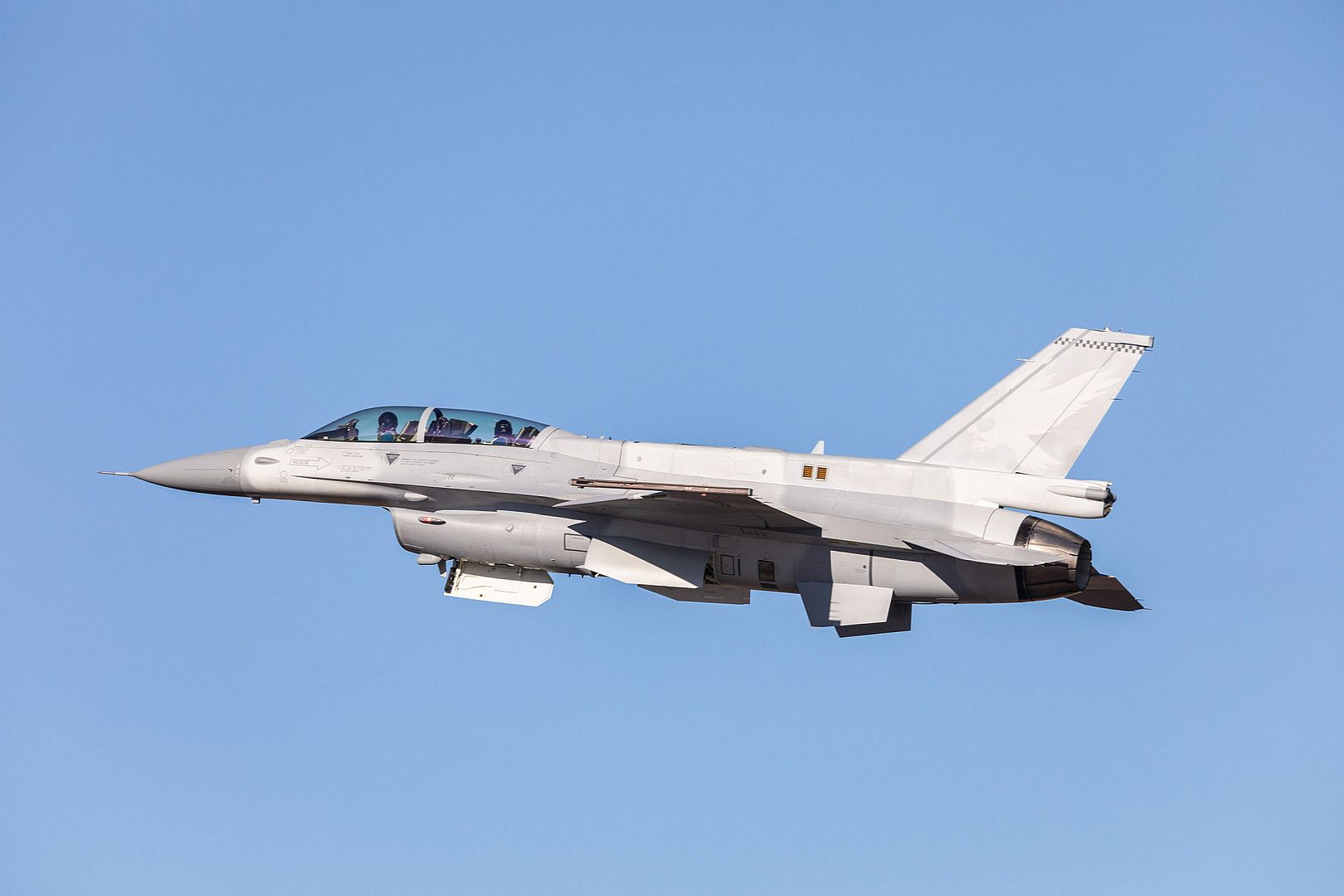
End of an era . Check out these moments of our three Orion aircraft flying in the North Island skies yesterday, marking the fleet's retirement after more than 55 years of service.

"This is a bittersweet moment for us, where we have to farewell a faithful old friend who has looked after not just our crews for nearly 60 years but all of New Zealand and our friends and neighbours in the Pacific."~ No. 5 Squadron Commanding Officer, Wing Commander Glen Donaldson.
From hunting submarine periscopes in the North Sea on exercise with allied partners to finding people clinging to fishing buoys in the South Pacific, the Orion has seen the world and made a huge contribution to individuals, to communities, to Aotearoa New Zealand and to global partners.
(Photos courtesy of the RNZAF)
-
 Main AdminGULF OF MANNAR (Jan. 23, 2023) – U.S. Marine Corps AH-1Z Viper and UH-1Y Venom pilots with Marine Medium Tiltrotor Squadron (VMM) 362 (Rein.), 13th Marine Expeditionary Unit, conduct flight operations in support of a vessel, board, search, and seizure exercise for Cooperation Afloat Readiness and Training/Marine Exercise Sri Lanka 2023, Jan. 23. CARAT/MAREX Sri Lanka is a bilateral exercise between Sri Lanka and the United States designed to promote regional security cooperation, practice humanitarian assistance and disaster relief, and strengthen maritime understanding, partnerships, and interoperability. In its 28th year, the CARAT series is comprised of multinational exercises, designed to enhance U.S. and partner forces’ abilities to operate together in response to traditional and non-traditional maritime security challenges in the Indo-Pacific region. (U.S. Marine Corps photo by Sgt. Kevin G. Rivas)
Main AdminGULF OF MANNAR (Jan. 23, 2023) – U.S. Marine Corps AH-1Z Viper and UH-1Y Venom pilots with Marine Medium Tiltrotor Squadron (VMM) 362 (Rein.), 13th Marine Expeditionary Unit, conduct flight operations in support of a vessel, board, search, and seizure exercise for Cooperation Afloat Readiness and Training/Marine Exercise Sri Lanka 2023, Jan. 23. CARAT/MAREX Sri Lanka is a bilateral exercise between Sri Lanka and the United States designed to promote regional security cooperation, practice humanitarian assistance and disaster relief, and strengthen maritime understanding, partnerships, and interoperability. In its 28th year, the CARAT series is comprised of multinational exercises, designed to enhance U.S. and partner forces’ abilities to operate together in response to traditional and non-traditional maritime security challenges in the Indo-Pacific region. (U.S. Marine Corps photo by Sgt. Kevin G. Rivas)
A U.S. Air Force Airman guides an U.S. Air Force F-35A Lightning II after it landed at Nevatim Airbase, Israel, Jan. 23, 2023. Juniper Oak is a large-scale bilateral multi-domain exercise aimed to enhance interoperability between U.S. and Israeli armed forces contributing to integrated regional security. (U.S. Air Force photo by Senior Airman Jackson Manske)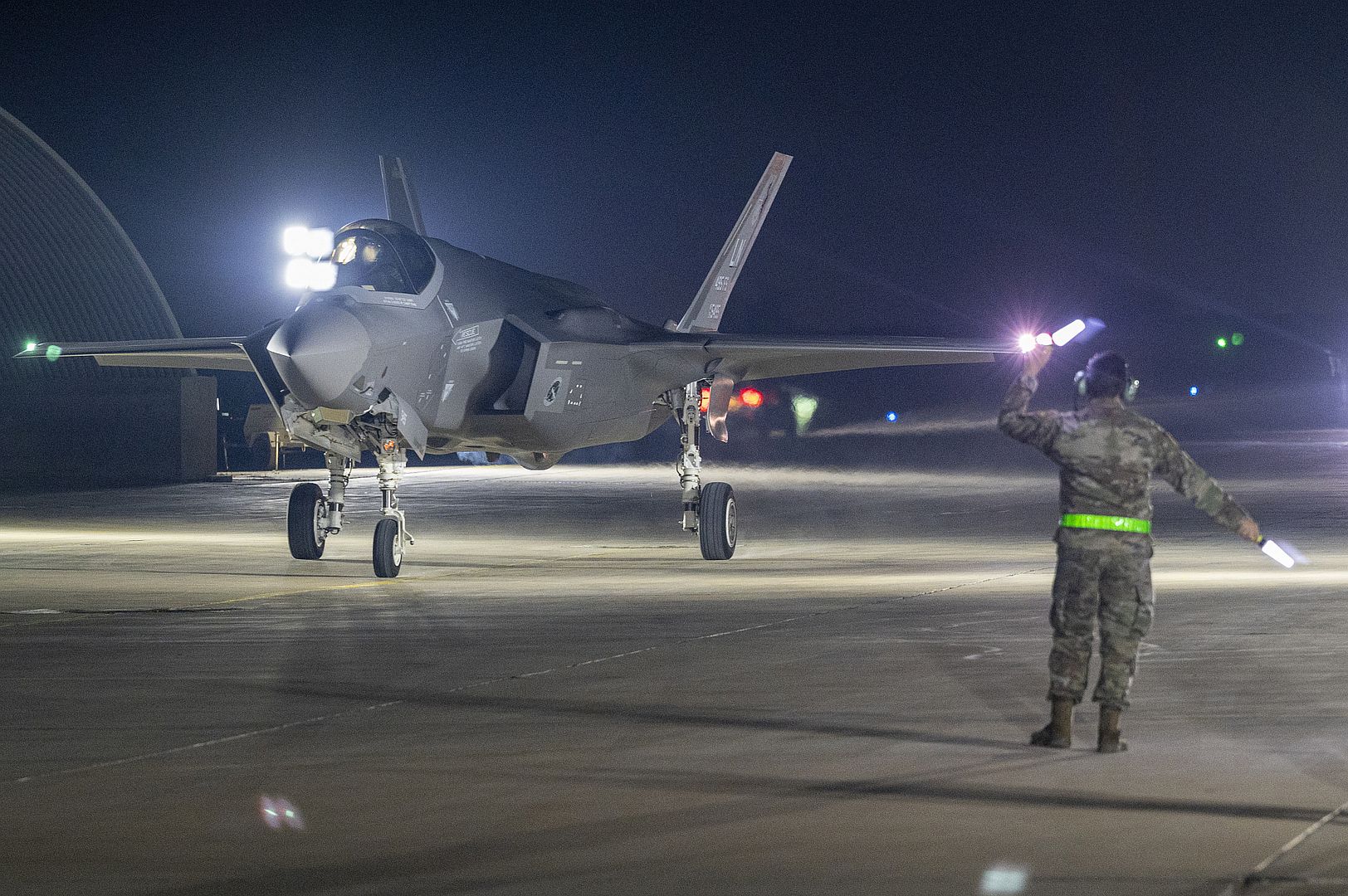
A-10 Thunderbolt II aircraft from the 107th Fighter Squadron at Selfridge Air National Guard Base, Michigan, taxis to the parking ramp at the Alpena Combat Readiness Training Center (CRTC) on Jan. 24, 2023 to take part in Northern Strike 23-1. The winter iteration of the Norther Strike exercise serves as a cost and time effective way for units to train in conditions similar to those found above the Arctic Circle. (U.S. Air National Guard photo by Tech. Sgt. Andrew Schumann)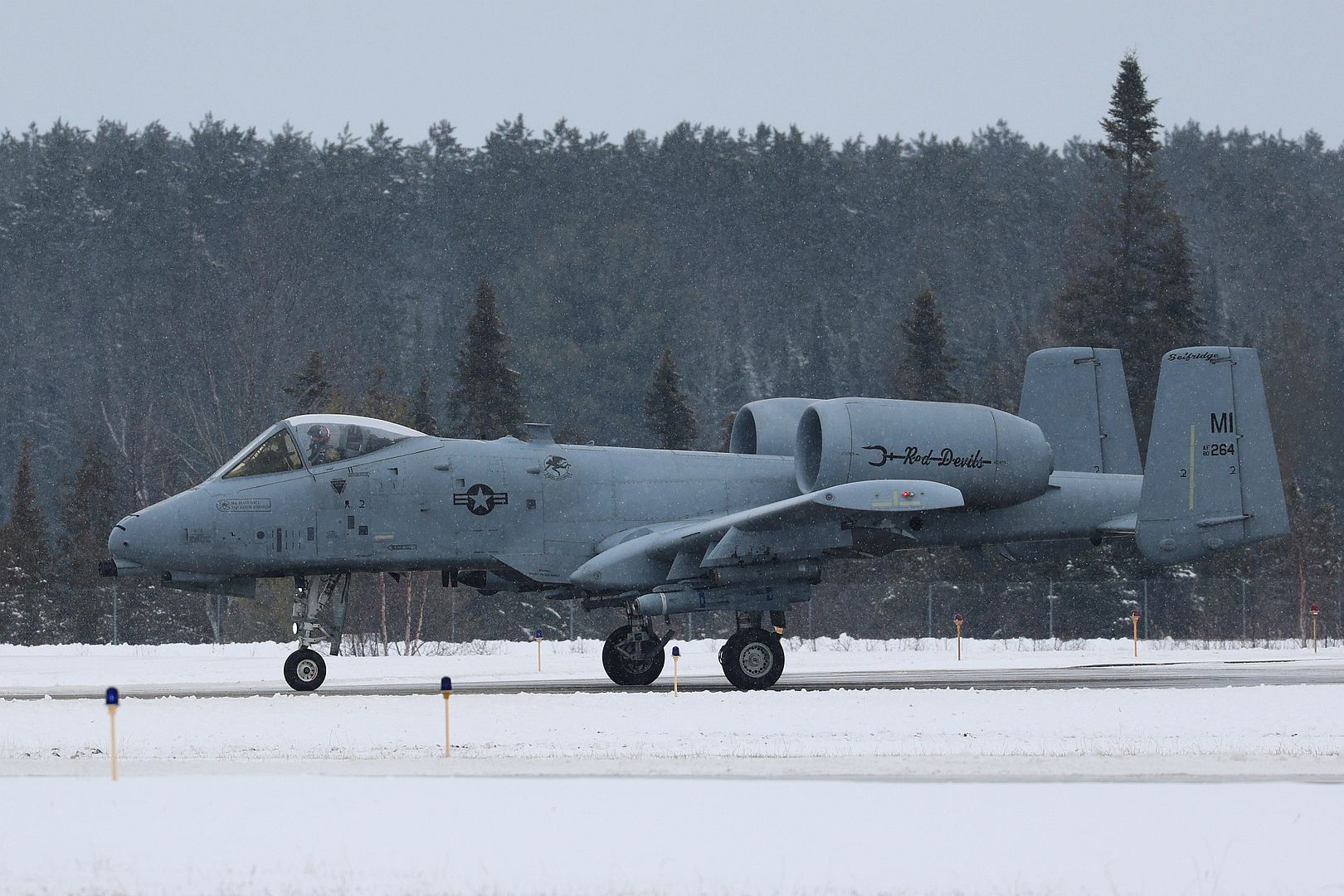
Royal Netherlands Air Force personnel prepare to launch a U.S. Air Force F-35A Lightning II assigned to the 495th Fighter Squadron during an F-35 cross-service training exercise at Royal Air Force Lakenheath, England, Jan. 19, 2023. The Liberty Wing, along with its NATO allies and mission partners continues to strengthen deterrence efforts and adapt through improving readiness and responsiveness. (U.S. Air Force photo by Airman 1st Class Seleena Muhammad-Ali)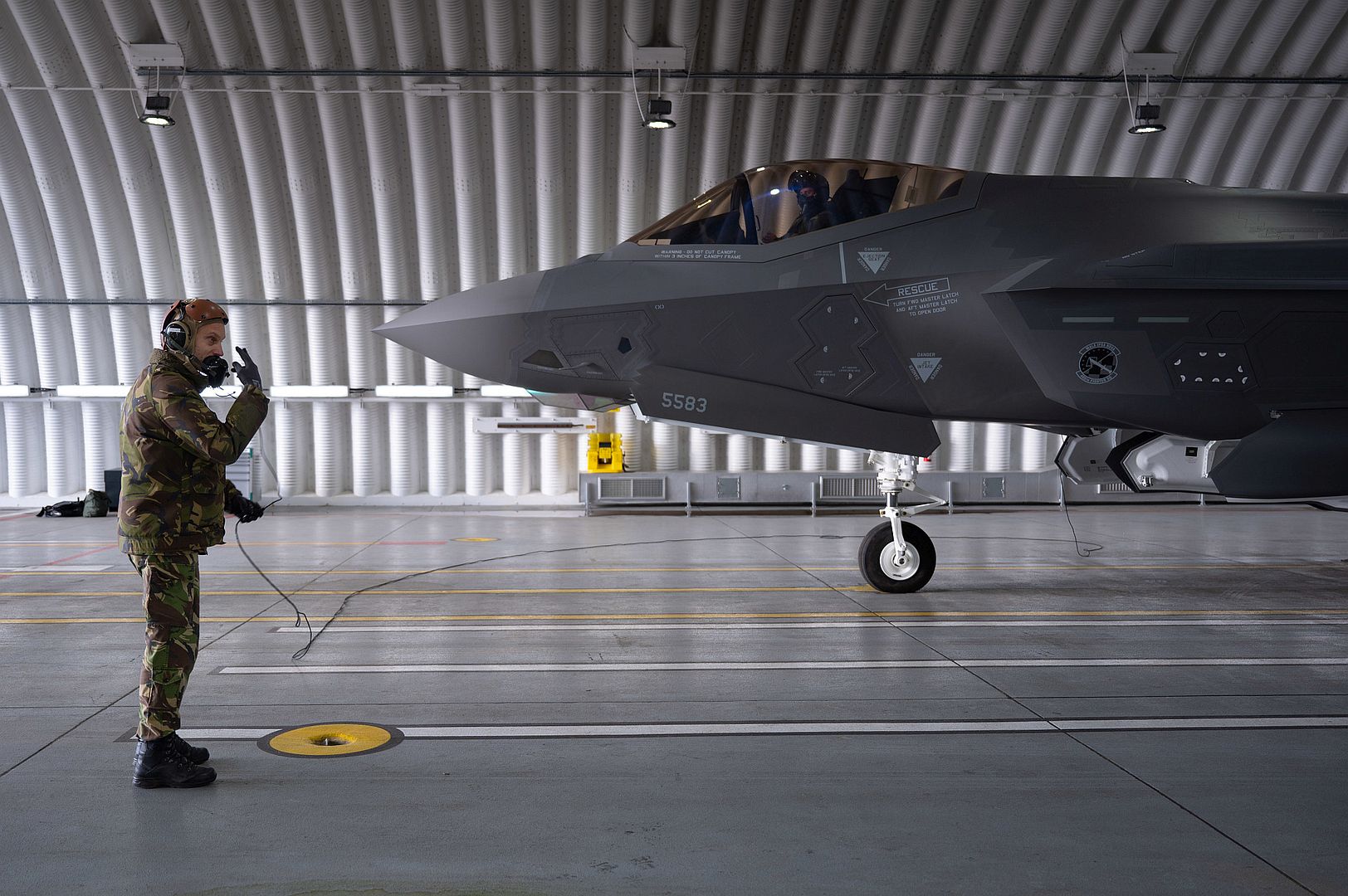
The first Exercise Red Flag Nellis of 2023 is off to a flying start at the Nellis Air Force Base in Nevada, USA.
The Royal Australian Air Force (RAAF) has deployed up to five EA-18G Growler aircraft from No. 6 Squadron and approximately 100 aviators in support of the Exercise to enhance Australia’s air power interoperability with partner nations.
RAAF’s Director General Air – Air Commodore John Haly, said combined force training between the Royal Australian Air Force, the United States Air Force and the United Kingdom’s Royal Air Force provided a critical opportunity for partner nations to enhance their skills.
“Exercises like Red Flag Nellis are an opportunity to advance relationships and interoperability with the United States and United Kingdom,” Air Commodore Haly said.
“Although Australia conducts similar training activities domestically, the scope and scale of Red Flag Nellis cannot be replicated within Australia.”
RAAF’s Exercise Detachment Commander, Wing Commander Steven Thornton, said Exercise Red Flag Nellis would provide complex and advanced aerial training against simulated targets and realistic threat systems.
“This training helps ensure RAAF remains ready to deploy aircraft and personnel away from their home base and sustain high-tempo operations,” Wing Commander Thornton said.
“It also provides the necessary environment for testing and development of new work practices, systems or role expansion.”
Exercise Red Flag Nellis will conclude on 10 February 2023.
(Photo courtesy of the RAAF)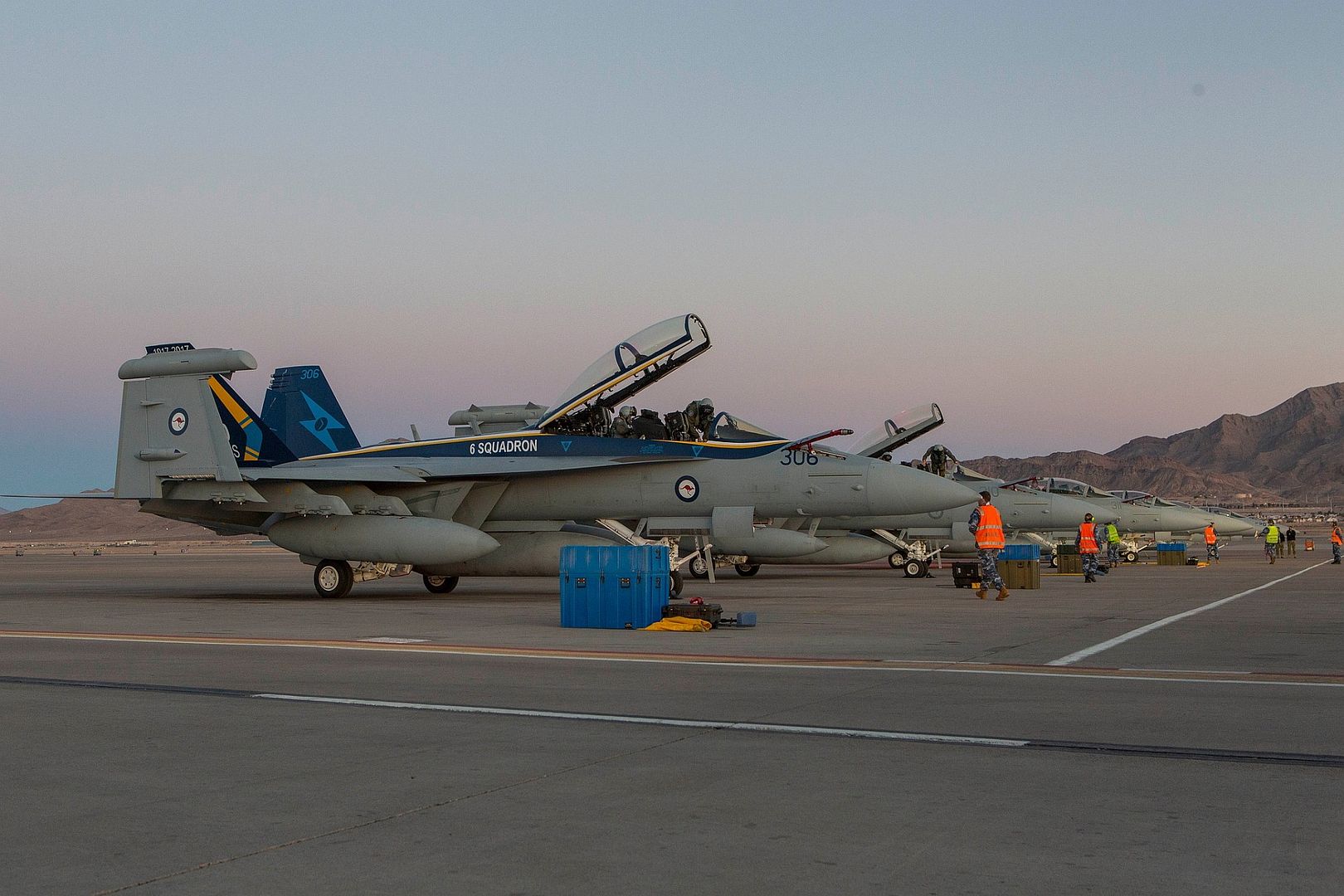
-
 Main AdminJuniper Oak 23-2 is a bilateral military exercise designed to enhance interoperability between the U.S. and Israel militaries. Forces from U.S. Central Command (USCENTCOM) components and the Israeli Defense Force (IDF) will participate. While this is the first iteration of Juniper Oak, it joins the long-standing “Juniper” series that the U.S. and Israel have conducted for more than 20-years. (Photos courtesy of the IDF Spokesperson's Office)
Main AdminJuniper Oak 23-2 is a bilateral military exercise designed to enhance interoperability between the U.S. and Israel militaries. Forces from U.S. Central Command (USCENTCOM) components and the Israeli Defense Force (IDF) will participate. While this is the first iteration of Juniper Oak, it joins the long-standing “Juniper” series that the U.S. and Israel have conducted for more than 20-years. (Photos courtesy of the IDF Spokesperson's Office)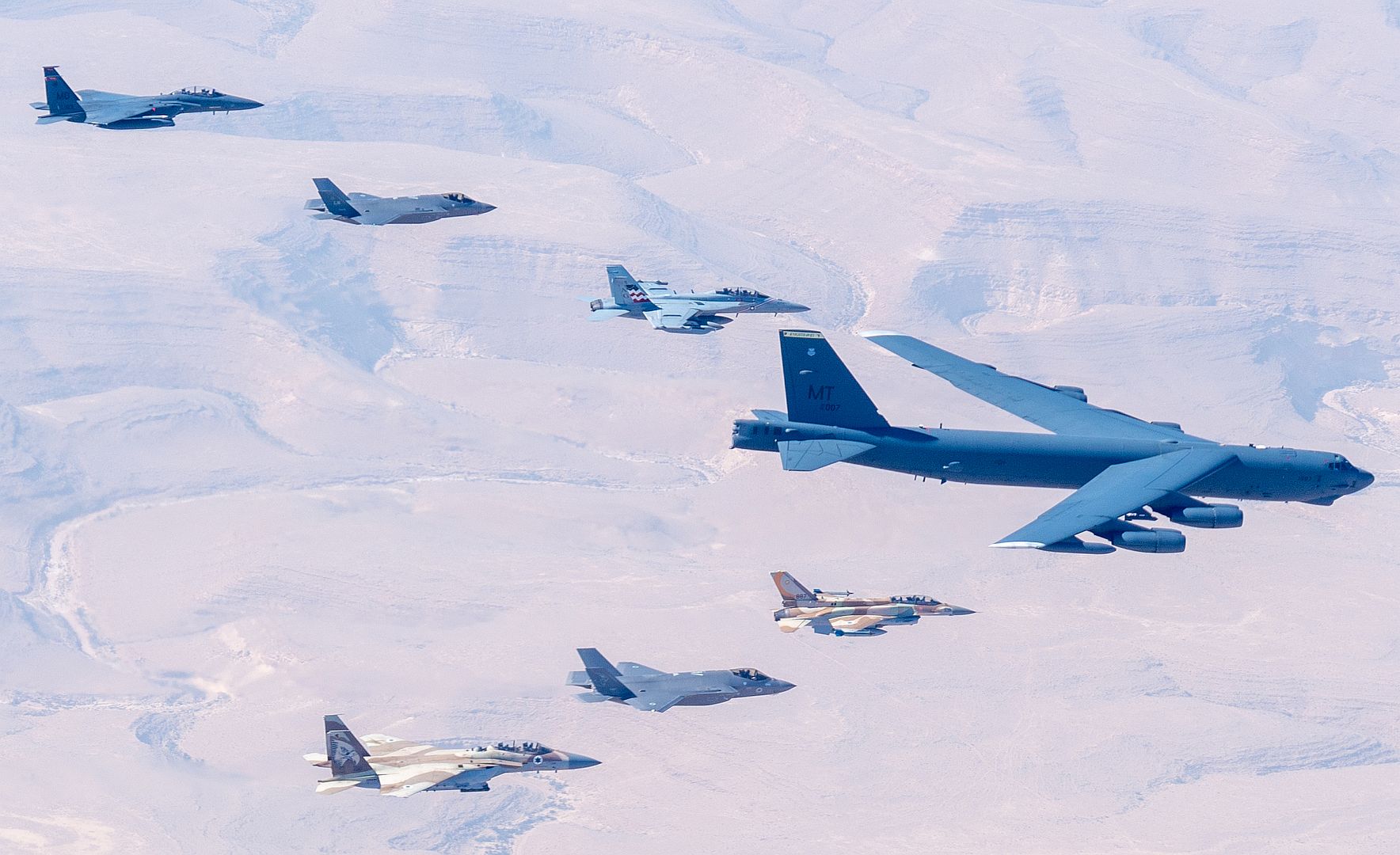
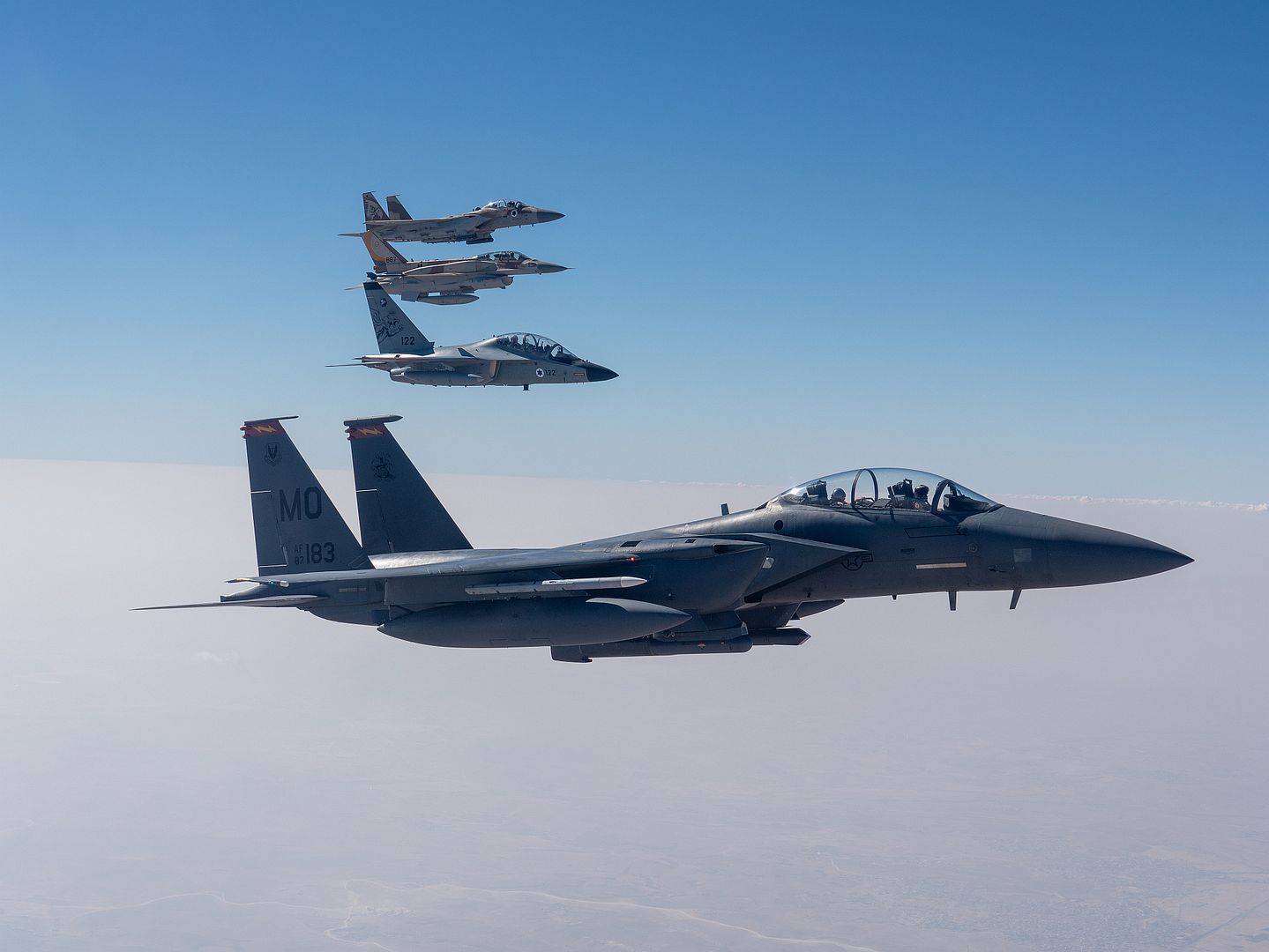
Troopers assigned to 4-6 Air Cavalry Squadron, 16th Combat Aviation Brigade fly their AH-64E Apache helicopter at Yakima Training Center, Wash. on Jan. 24, 2023. The aircrew was the aerial observer/controller for AGM-114 Hellfire missile training.
(U.S. Army photo by Capt. Kyle Abraham, 16th Combat Aviation Brigade)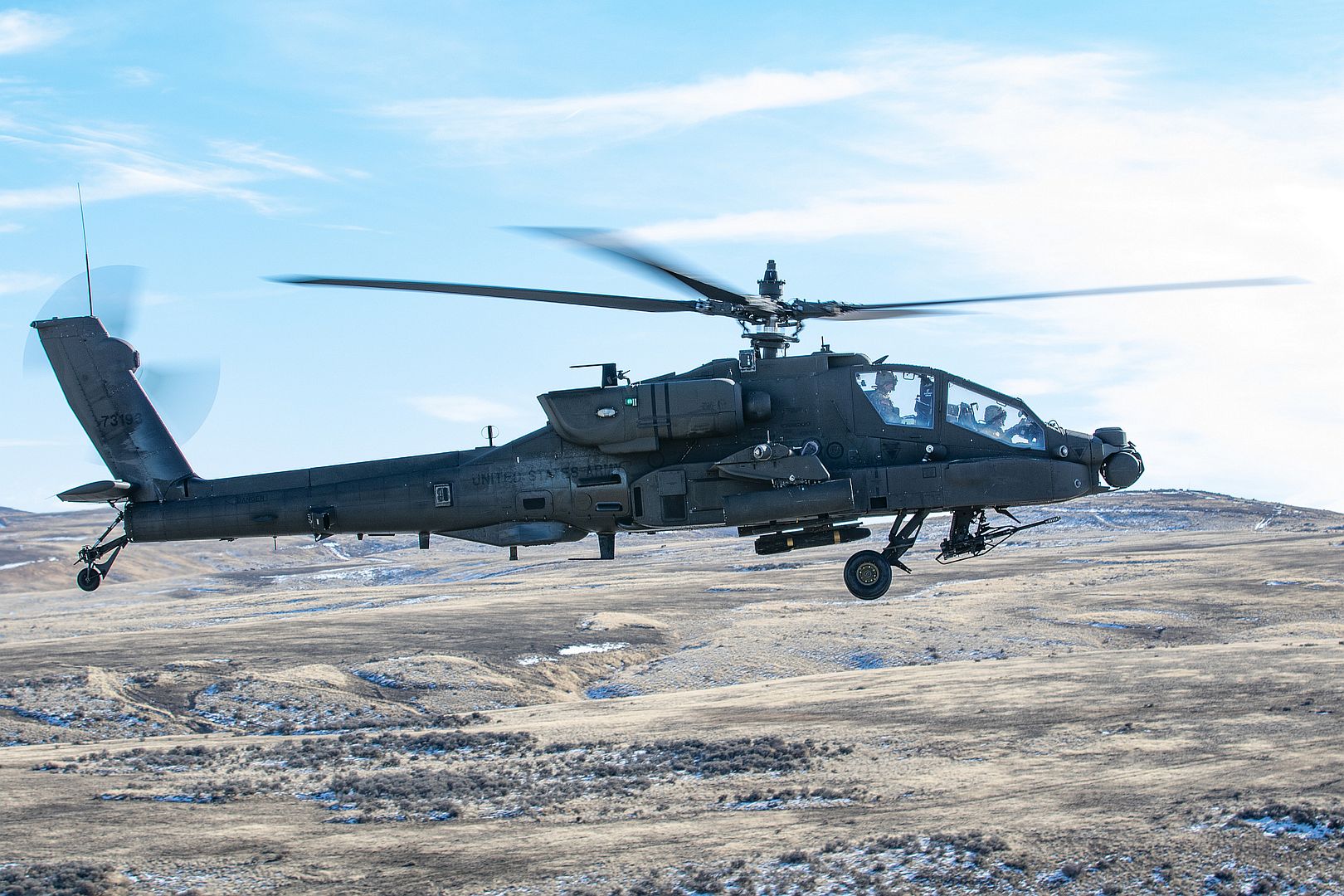
A U.S. Marine Corps AV-8B Harrier assigned to Marine Medium Tiltrotor Squadron (VMM) 162 (Reinforced), 26th Marine Expeditionary Unit (MEU), conducts deck landing qualifications aboard the Wasp-Class Amphibious Assault Ship USS Bataan (LHD 5) while underway during Amphibious Squadron/MEU Integrated Training (PMINT), Jan. 24, 2023. Pilots with VMM 162 (Reinforced), the 26th MEU’s Air Combat Element, are conducting deck landing qualifications to increase the combat lethality of the Navy-Marine Corps team in preparation for an upcoming deployment. (U.S. Marine Corps photos by Cpl. Kyle Jia)
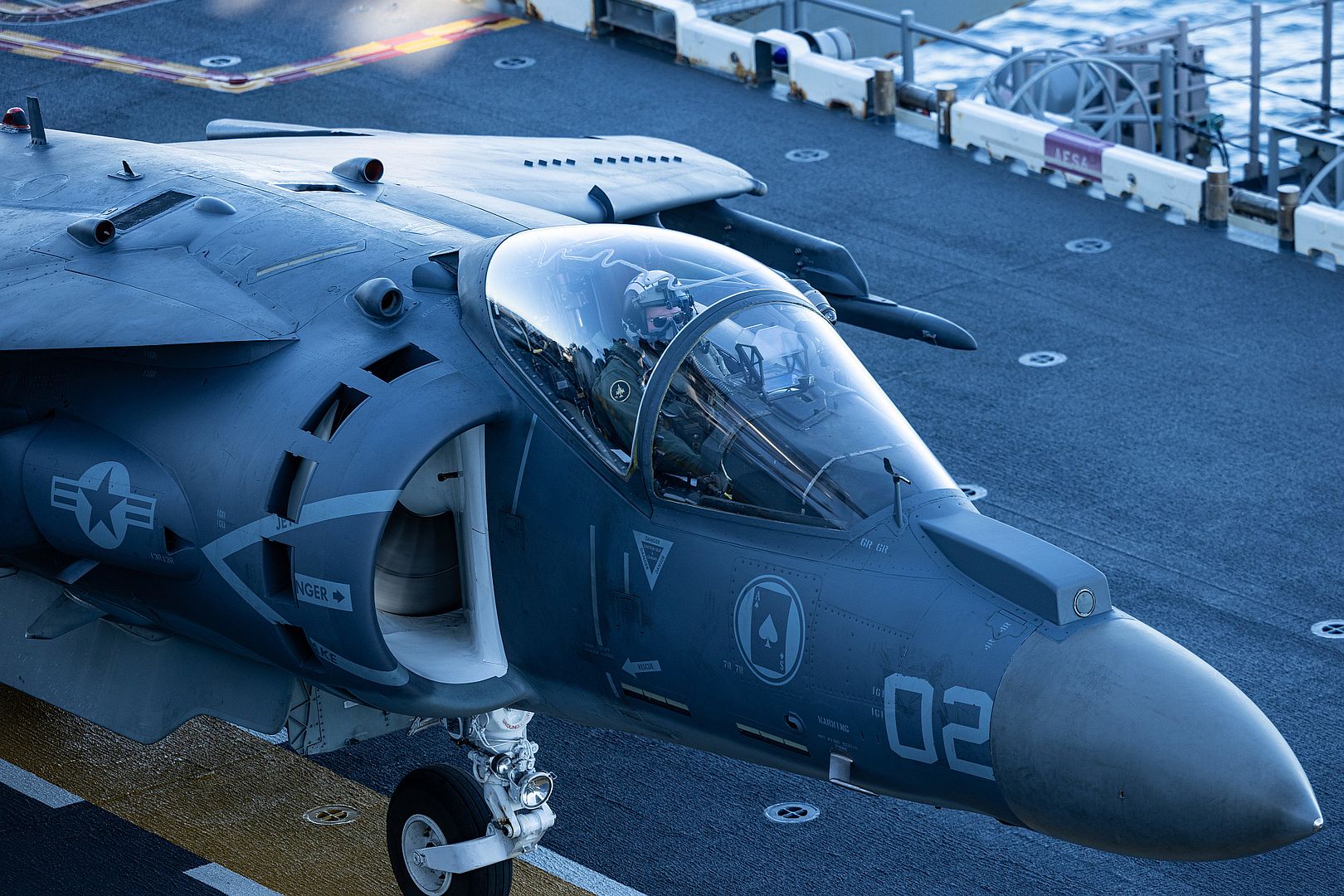
A U.S. Air Force RC-135V/W RIVET JOINT assigned to the 55th Wing, receives fuel from a KC-135 Stratotanker assigned to the 91st Expeditionary Air Refueling Squadron during an Exercise Juniper Oak mission, within the U.S. Central Command area of responsibility, Jan. 25, 2023. Juniper Oak is a large-scale bilateral exercise, aimed to enhance interoperability between U.S. and Israeli armed forces contributing to regional security. (U.S. Air Force photo by Tech. Sgt. Daniel Asselta)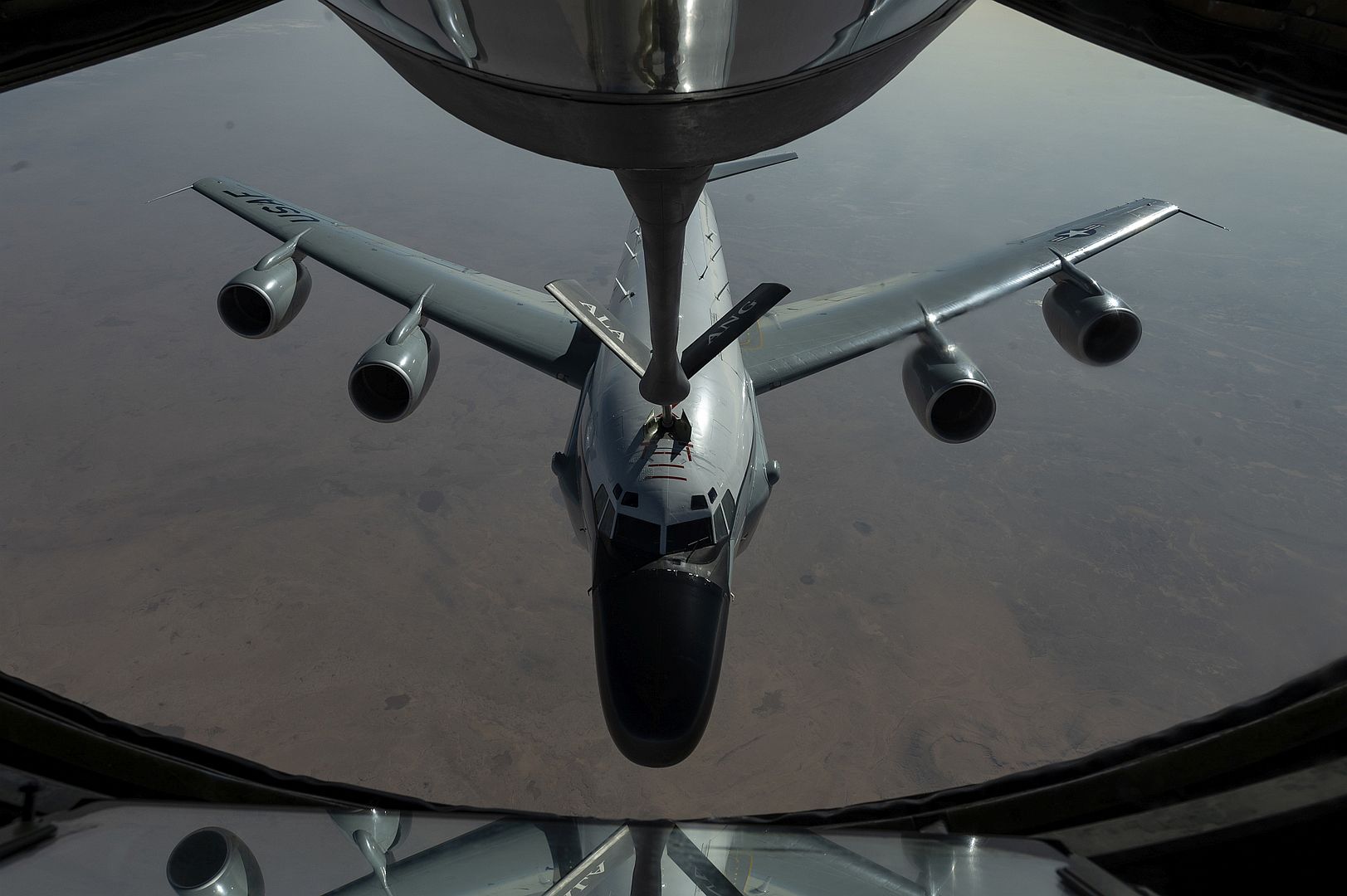
U.S. Navy F/A-18 Super Hornets fly within the U.S. Central Command area of responsibility during exercise Juniper Oak, Jan, 25, 2023. Juniper Oak is a large-scale bilateral multi-domain military exercise aimed to enhance interoperability between U.S. and Israeli armed forces contributing to integrated regional security. (U.S. Air Force photos by Staff Sgt. Kirby Turbak)
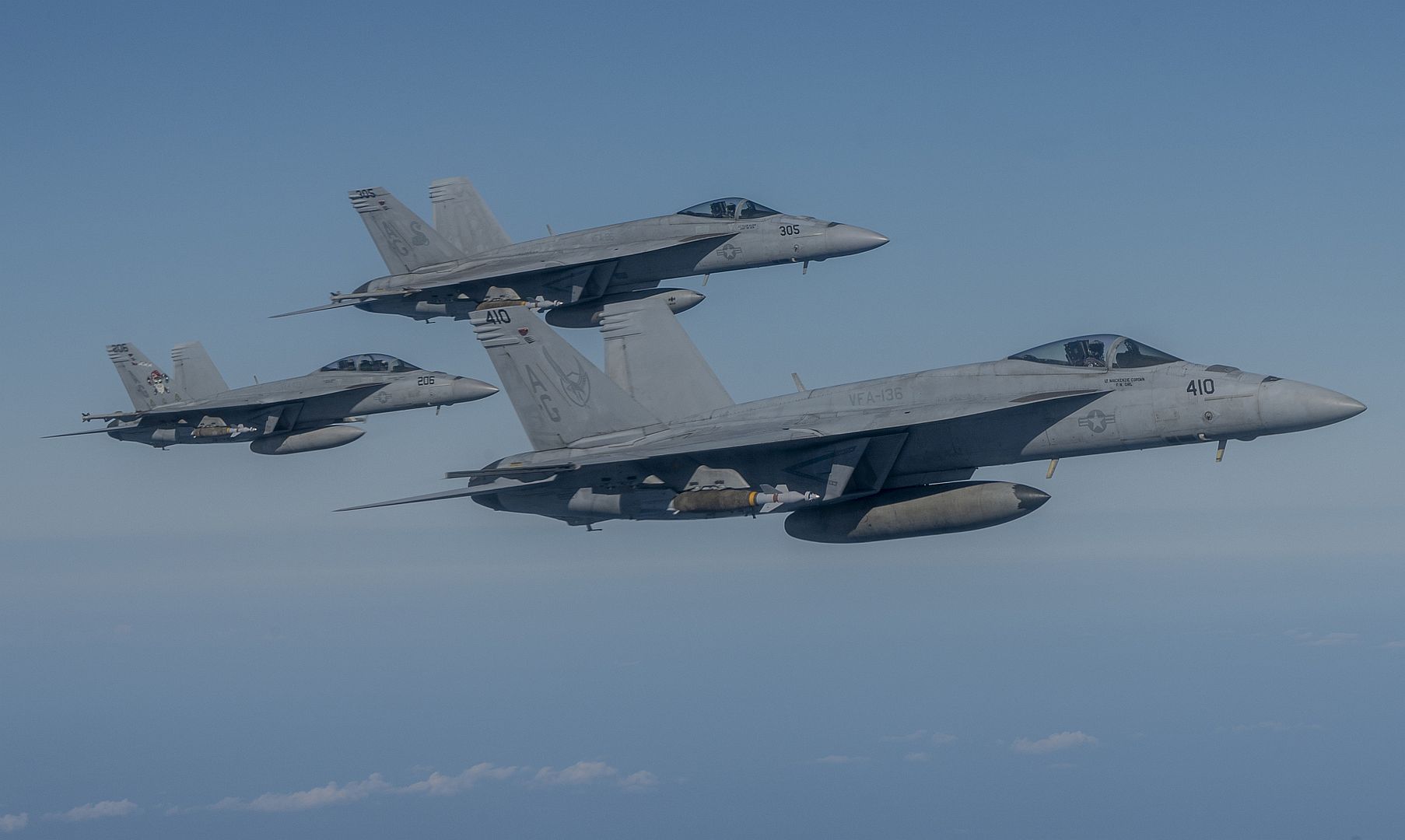
A U.S. Marine Corps F/A-18D Hornet aircraft from Marine Fighter Attack Squadron 115 (VMFA-115), Marine Corps Air Station Beaufort, South Carolina, flies over Michigan during Northern Strike 23-1 on Jan. 24, 2023 from Selfridge Air National Guard Base. The exercise is an accessible, cost-effective way for units across the DoD, reserve components in particular, to experience extreme cold-weather joint all-domain operations. (U.S. Air National Guard photo by Munnaf H. Joarder)_Marine_Corps_Air_Station_Beaufort_South_Carolina_flies_over_Michigan_during_Northern_Strike_23-1.jpg?width=1920&height=1080&fit=bounds)
An F-16C Fighting Falcon assigned to the 64th Aggressor Squadron takes off for a mission during Red Flag 23-1 at Nellis Air Force Base, Nevada, Jan. 24, 2023. Aggressor pilots are highly skilled in U.S. and adversary tactics. They provide realism to U.S. and allied forces during training exercises. (U.S. Air Force photo by William R. Lewis)
An F-16 Fighting Falcon assigned to the 169th Fighter Wing, Joint National Guard Base, South Carolina, takes off for a mission during Red Flag 23-1 at Nellis Air Force Base, Nevada, Jan 24, 2023. The 414th Combat Training Squadron conducts Red Flag exercises to provide aircrews the experience of multiple, intensive air combat sorties in the safety of a training environment. (U.S. Air Force photo by William R. Lewis)
An EA-18G Growler assigned to the 82 Wing, Royal Australian Air Force, Amberley, Australia, takes off for a mission during Red Flag 23-1 at Nellis Air Force Base, Nevada, Jan. 24, 2023. Red Flag provides real-time war scenarios to test the readiness capabilities of U.S. military services and coalition forces. (U.S. Air Force photo by William R. Lewis)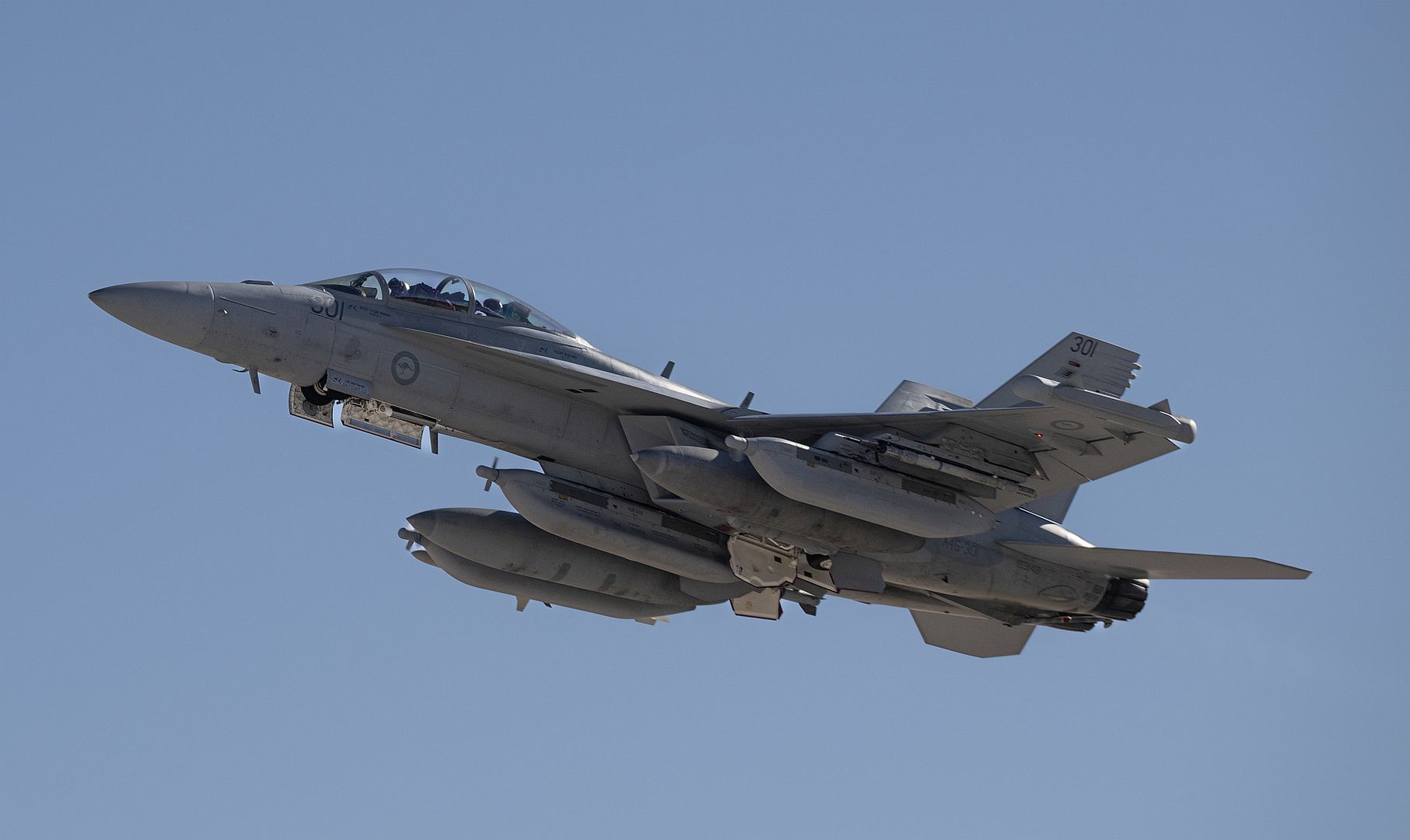
An F-22 Raptor assigned to the 94th Fighter Squadron, Joint Base Langley-Eustis, Virginia, takes off prior to the start of Red Flag 23-1 at Nellis Air Force Base, Nevada, Jan. 24, 2023. The 414th Combat Training Squadron conducts Red Flag exercises to provide aircrews the experience of multiple, intensive air combat sorties in the safety of a training environment. (U.S. Air Force photo by William R. Lewis)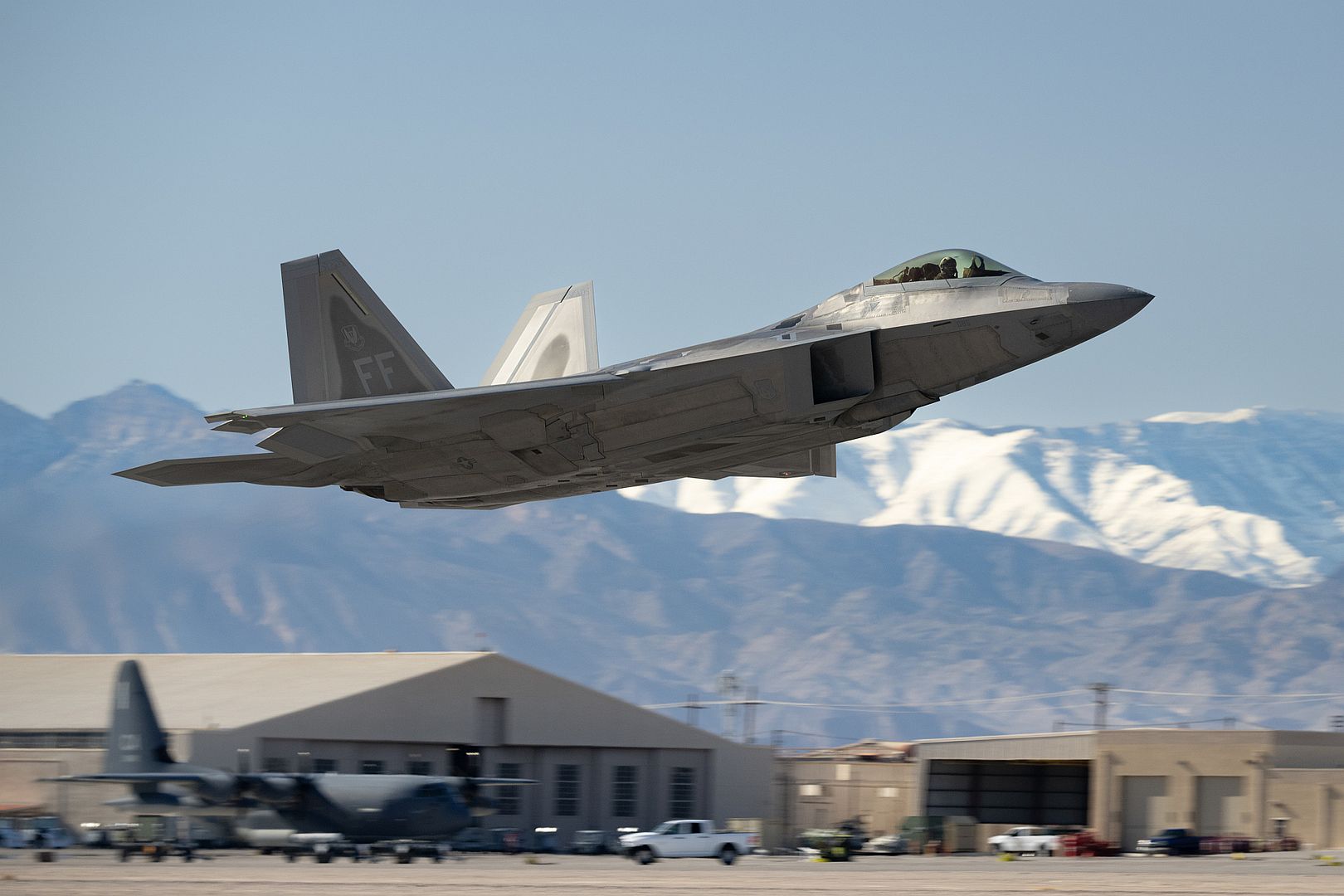
Rome, 26 January 2023
The team of Italian companies that will participate in the development of the new Global Combat Air Programme (GCAP) have signed a contract to support the Italian Ministry of Defense in the programme’s new concept & assessment phase and related demonstration activities. The team, which comprises Leonardo - as a strategic partner - and Italy’s leading companies in their respective domains: Elettronica, Avio Aero and MBDA Italia, will progress technology development in support of the GCAP "system of systems" concept, based on sixth-generation combat air platforms operating in multi-domain scenarios.
Industry will collaborate with universities, research centres, SMEs and start-ups, allowing for the exchange of knowledge and growth of skills at a national level, all in close partnership with the Italian Ministry of Defence. The Ministry will be responsible for defining operational needs and directing technological development, drawing on industry support.
Alessandro Profumo, Chief Executive Officer at Leonardo said: "This new phase is a crucial step in the process of identifying and making available the innovative technologies that will ensure our defence capabilities make the necessary generational, technological and operational leap forward, allowing our national enterprise to reach the highest level of excellence and strategic autonomy. As part of the GCAP programme, Italian companies will play a fundamental role in the future of the defence industry at a national and international level. This will take place in a framework of growth that strengthens the operational capacity of our Armed Forces while at the same time generating positive returns including technological, economic and social progress for the entire national ecosystem”.
Enzo Benigni, Chairman and CEO of Elettronica said: “With the launch of this new phase of the GCAP programme, we are developing a plan for technology and industry that will move Italy’s technology sector from the Typhoon era, the last major European combat air development programme, into a new era of combat air underpinned by sixth-generation capabilities. The wider geopolitical context underlines how vital it is to achieve the right level of readiness, interoperability and availability of technologies. By doing so, we will be prepared to manage any crises that may affect us. Italian industry’s significant role in the GCAP programme will secure a national, European and international legacy, helping to cement the concepts of strategic autonomy and technological sovereignty. Elettronica is ready to contribute and recognises that the objectives that the GCAP programme aims to achieve are also its own".
Riccardo Procacci, CEO of Avio Aero said: “Today’s challenging geopolitical context requires technological solutions that focus on operational excellence and the ability to adapt to future scenarios. The GCAP programme is responding to this need and will support the requirements of the Armed Forces while guaranteeing strategic autonomy. Avio Aero, as a European company in the propulsion sector and a long-term partner of the Armed Forces, is bringing its capabilities and recognised technological excellence to the programme as well as continuing to invest in the development of innovative technologies with the support and involvement of its network of collaborations with universities, research centers and SMEs”.
Lorenzo Mariani, Executive Group Director Sales and Business Development at MBDA Group and CEO of MBDA Italia, said: "By participating in the GCAP programme and this second phase of our contract, MBDA Italia and our partners at research centres and SMEs will deploy our collective ability to manage the effectors and related technologies required for the system of systems. These technologies will form the basis of complex systems for national air defence. The ability to counter the most challenging threats will be a key element of the performance of a sixth-generation combat air system”.
In support of the GCAP programme, Italy has already earmarked 6 billion Euros for investment in research and development that will allow for the launch of technology development projects in areas of strategic interest. These will allow Italy’s national industry to participate in the future development phases of the system-of-systems.
The development of a national collaborative work environment, a digital infrastructure underpinned by advanced security, will enable information, services and activities to be shared securely, supporting the subsequent implementation phases via a secure and classified virtual environment. The activation of projects which will deliver technological growth in areas of strategic interest will allow Italy’s national industry to play a substantial role in the development of the system of systems. This activity will be vital in achieving an appropriate level of national sovereignty.
This initiative is also laying the groundwork for further international collaboration in the development of technologies relating to sixth-generation combat air platforms by enhancing Italy’s national industrial competitiveness, its strategic autonomy and the academic and professional skills of current and future generations. In support of this goal, companies have already begun to invest in research, to activate collaborations with universities and to support technology incubators in the innovation sector by promoting the most promising ones nationally and internationally.
-
 Main AdminU.S. Marine Corps Sgt. Kyle Fugger, an aviation ordnance technician with Marine Fighter Attack Squadron (VMFA) 312, guides in an F/A-18C Hornet aircraft at Andersen Air Force Base, Guam, Jan. 25, 2023. VMFA-312 traveled from Marine Corps Air Station Iwakuni, Japan to Andersen Air Force Base, Guam to conduct joint-level training as a part of the Aviation Training Relocation Program and enhance the squadron’s readiness and combat capabilities. (U.S. Marine Corps photos by Cpl. Calah Thompson)
Main AdminU.S. Marine Corps Sgt. Kyle Fugger, an aviation ordnance technician with Marine Fighter Attack Squadron (VMFA) 312, guides in an F/A-18C Hornet aircraft at Andersen Air Force Base, Guam, Jan. 25, 2023. VMFA-312 traveled from Marine Corps Air Station Iwakuni, Japan to Andersen Air Force Base, Guam to conduct joint-level training as a part of the Aviation Training Relocation Program and enhance the squadron’s readiness and combat capabilities. (U.S. Marine Corps photos by Cpl. Calah Thompson)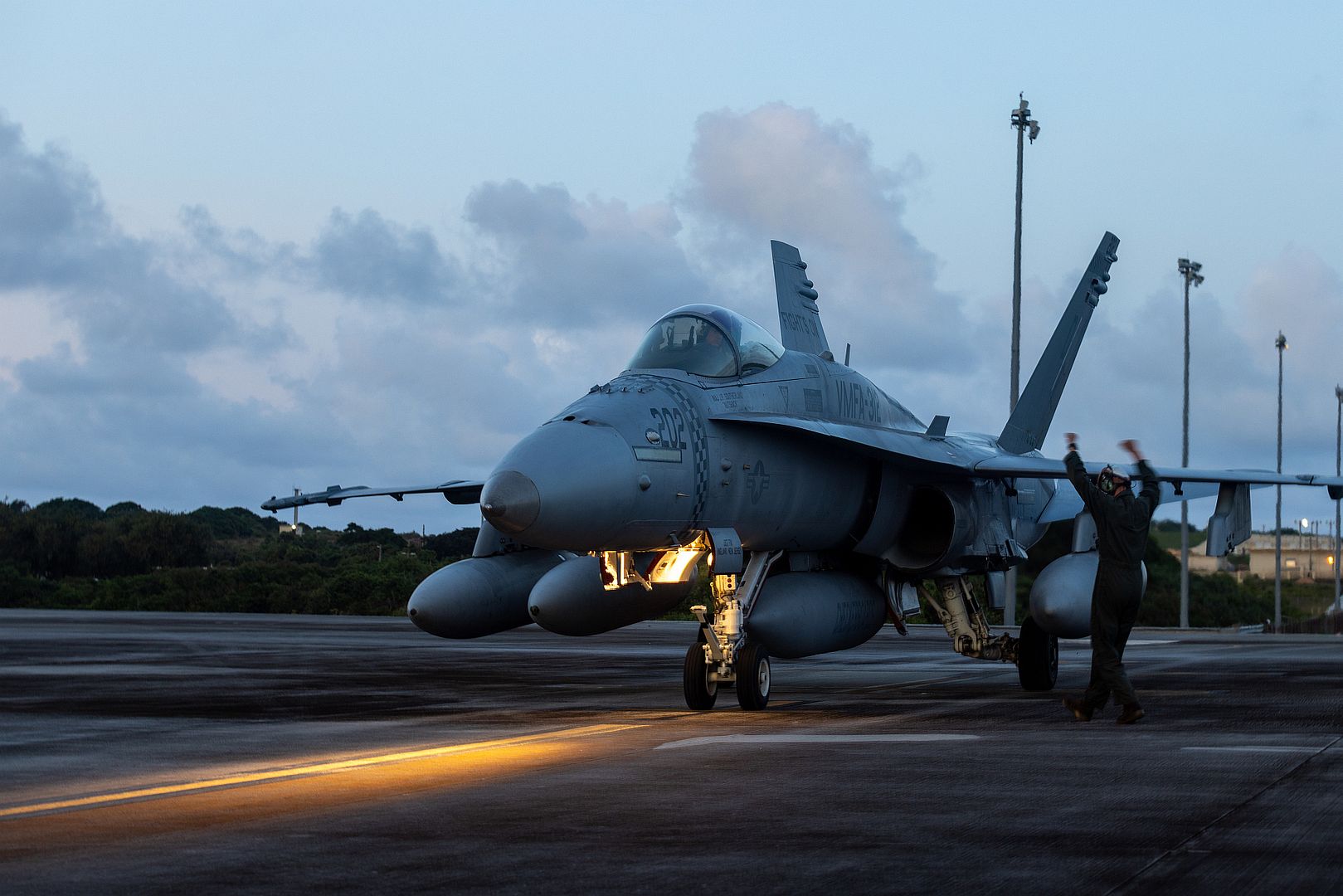
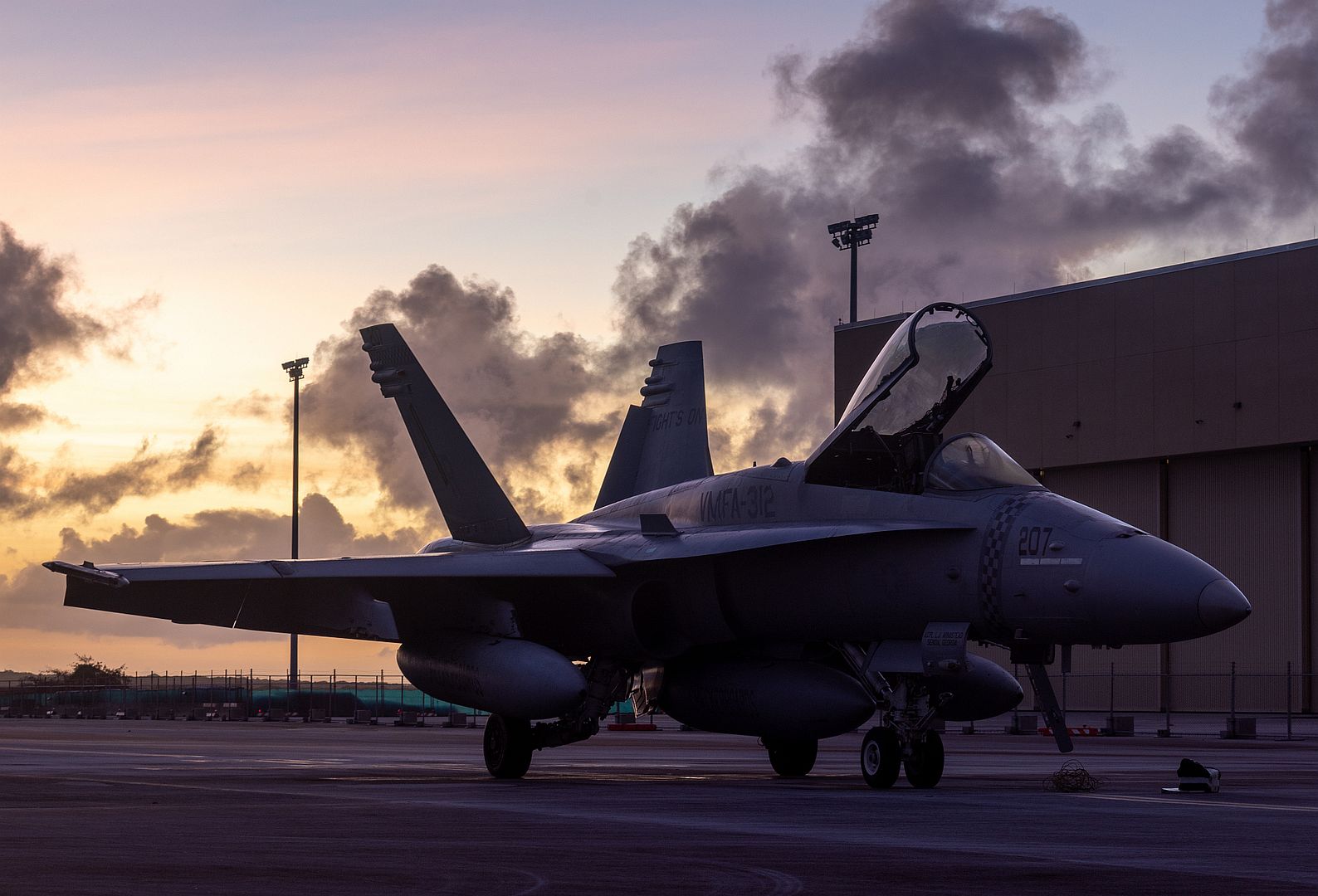
U.S. Air Force F-16 Fighting Falcon pilots, assigned to the 555th Fighter Squadron, prepare for take-off during exercise Emerald Strike 2023 at Grosseto Air Base, Italy, Jan. 27, 2023. Exercise Emerald Strike 2023 is designed to demonstrate the ability to conduct joint offensive and defensive air operations with our partners and Allies. (U.S. Air Force photos by Senior Airman Noah Sudolcan)

Tech Sgt. Jon Lounsbery, 114th Aircraft Maintenance crew chief, does a final walk around the F-16 prior to take-off during night flying on Jan 24, 2023, Sioux Falls, S.D. Pilots and maintenance personnel are required to conduct evening operations as part of their overall readiness. (U.S. Air National Guard photo by Master Sgt. Duane Duimstra)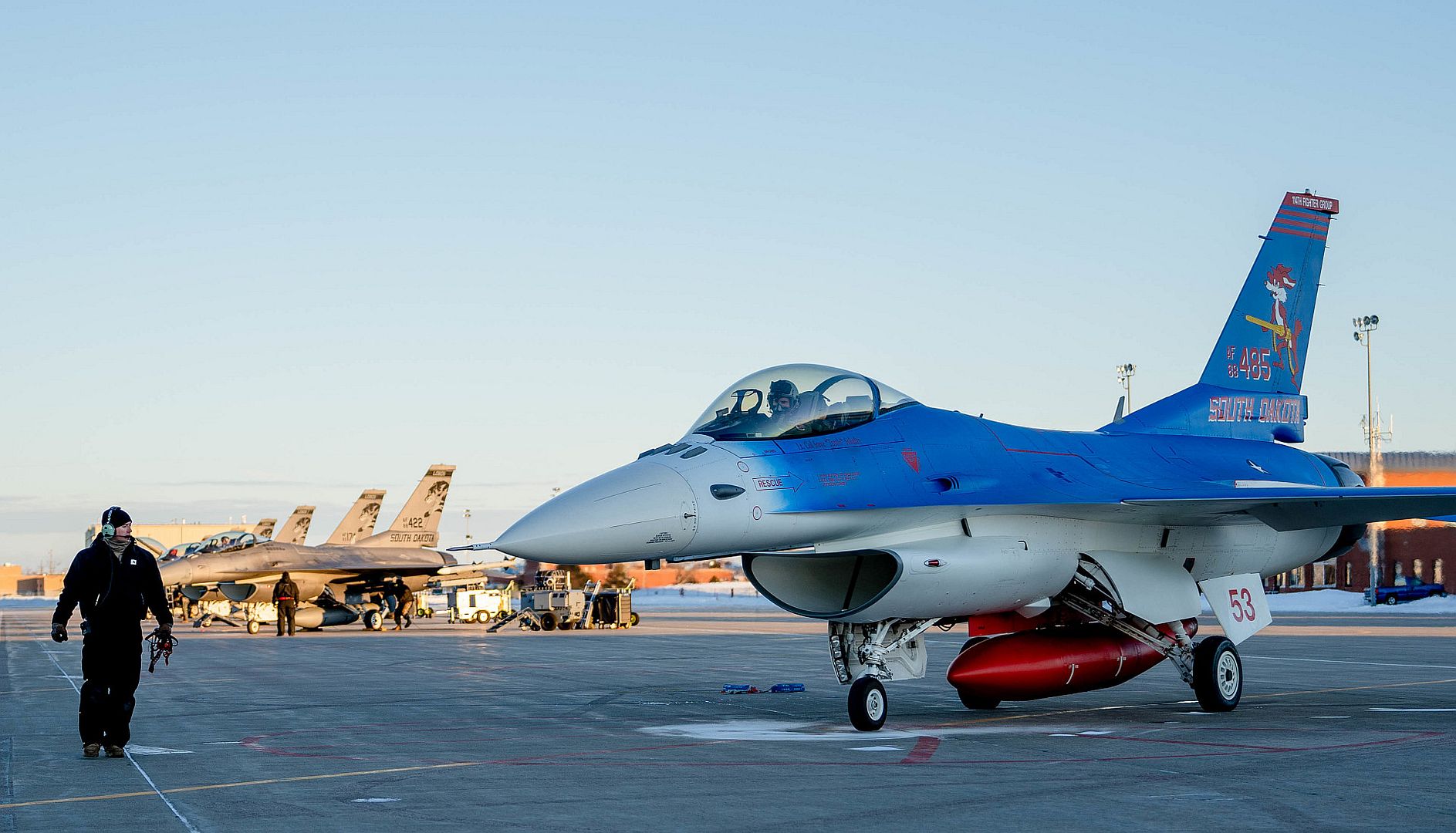
MEDITERRANEAN SEA (Jan. 25, 2023) An F/A-18E Super Hornet, attached to Strike Fighter Squadron (VFA) 136, launches from the flight deck of the Nimitz-class aircraft carrier USS George H.W. Bush (CVN 77) during exercise Juniper Oak 2023-2, Jan. 25, 2023. Juniper Oak 23-2 is a bilateral military exercise, led by U.S. Central Command and the Israeli Defense Force, designed to enhance interoperability between the U.S. and Israel militaries. Juniper Oak 23-2 joins the long-standing “Juniper” series that the U.S. and Israel have conducted for more than 20-years. (U.S. Navy photo by Mass Communication Specialist 3rd Class Nicholas Avis)_136_launches_from_the_flight_deck_of_the_Nimitz-class_aircraft_carrier_USS_George_H.W._Bush.jpg?width=1920&height=1080&fit=bounds)
MEDITERRANEAN SEA (Jan. 25, 2023) An F/A-18E Super Hornet, attached to Strike Fighter Squadron (VFA) 136, launches from the flight deck of the Nimitz-class aircraft carrier USS George H.W. Bush (CVN 77) during exercise Juniper Oak 2023-2, Jan. 25, 2023. Juniper Oak 23-2 is a bilateral military exercise, led by U.S. Central Command and the Israeli Defense Force, designed to enhance interoperability between the U.S. and Israel militaries. Juniper Oak 23-2 joins the long-standing “Juniper” series that the U.S. and Israel have conducted for more than 20-years. (U.S. Navy photo by Mass Communication Specialist 3rd Class Nicholas Avis)_136_launches_from_the_flight_deck_of_the_Nimitz-class_aircraft_carrier_USS_George_H.W._Bush-1.jpg?width=1920&height=1080&fit=bounds)
SOUTH CHINA SEA (Jan. 27, 2023) A U.S. Navy Sailor directs an E/A-18G Growler from the “Cougars” of Electronic Attack Squadron (VAQ) 139 on the flight deck of the aircraft carrier USS Nimitz (CVN 68). Nimitz is in U.S. 7th Fleet conducting routine operations. 7th Fleet is the U.S. Navy's largest forward-deployed numbered fleet, and routinely interacts and operates with Allies and partners in preserving a free and open Indo-Pacific region. (U.S. Navy photo by Mass Communication Specialist 3rd Class Joseph Calabrese)_139_on_the_flight_deck_of_the_aircraft_carrier_USS_Nimitz.jpg?width=1920&height=1080&fit=bounds)
SOUTH CHINA SEA (Jan. 27, 2023) An E/A-18G Growler from the “Cougars” of Electronic Attack Squadron (VAQ) 139 and an F/A-18F Super Hornet from the “Mighty Shrikes” of Strike Fighter Squadron (VFA) 94 taxi across the flight deck of the aircraft carrier USS Nimitz (CVN 68). Nimitz is in U.S. 7th Fleet conducting routine operations. 7th Fleet is the U.S. Navy's largest forward-deployed numbered fleet, and routinely interacts and operates with Allies and partners in preserving a free and open Indo-Pacific region. (U.S. Navy photo by Mass Communication Specialist 3rd Class Joseph Calabrese)_139_and_an_FA-18F_Super_Hornet_from_the_Mighty_Shrikes_of_Strike_Fighter_Squadron_(VFA)_94.jpg?width=1920&height=1080&fit=bounds)
Toulouse, 27 January 2023 - The Air France-KLM Group has placed a firm order for four A350Fs, the brand new Airbus widebody freighter, to be operated by Martinair Holland N.V., a Dutch cargo airline headquartered and based in Amsterdam Schiphol airport, and part of KLM Group. The A350F’s will allow the airline to retire its existing older generation freighters and replace them with a clean sheet cargo aircraft that offers a big step towards more sustainable cargo operations.
“We are delighted to make this major step forward to the A350F. It accelerates Air France KLM Martinair Cargo sustainability ambitions with significant improvement on fuel emissions and complying with most stringent ICAO Chapter 14 for noise and CAEP 8 for NOx. We are fit for the future!” said Adriaan den Heijer, Executive Vice President Air France KLM Cargo and Managing Director Martinair.
“Another A350F endorsement, and a great one too! We are delighted to see the A350F enter the KLM/Martinair world, confirming the relevance this most modern high capacity long range cargo aircraft brings to the airfreight segment. I am very pleased with the way our program is taking off. With 50% less noise, and 40% less fuel burn and CO2 emissions compared to the previous generation aircraft it is replacing, that is hardly a surprise! We thank Air France-KLM Group for their continued confidence.” said Christian Scherer, Airbus Chief Commercial Officer and Head of Airbus International.
The A350F is based on the world's most modern long range leader, the A350. The aircraft will feature the largest main deck cargo door and a fuselage length optimised for cargo operations. Over 70% of the airframe is made of advanced materials resulting in a minimum 30 tonnes lighter take-off weight, which together with efficient Rolls-Royce engines generate an advantage of at least 20% lower fuel burn and CO2 emission over its current closest competitor. Delivery to Martinair will be in time to comply with the latest ICAO CO2 emissions standards that will come into effect by the end of 2027. With a 109 tonnes payload capability (+3t payload / 11% more volume than its competition), the A350F serves all cargo markets (Express, general cargo, special cargo…).
Launched in 2021, the A350F recorded 35 orders from seven customers.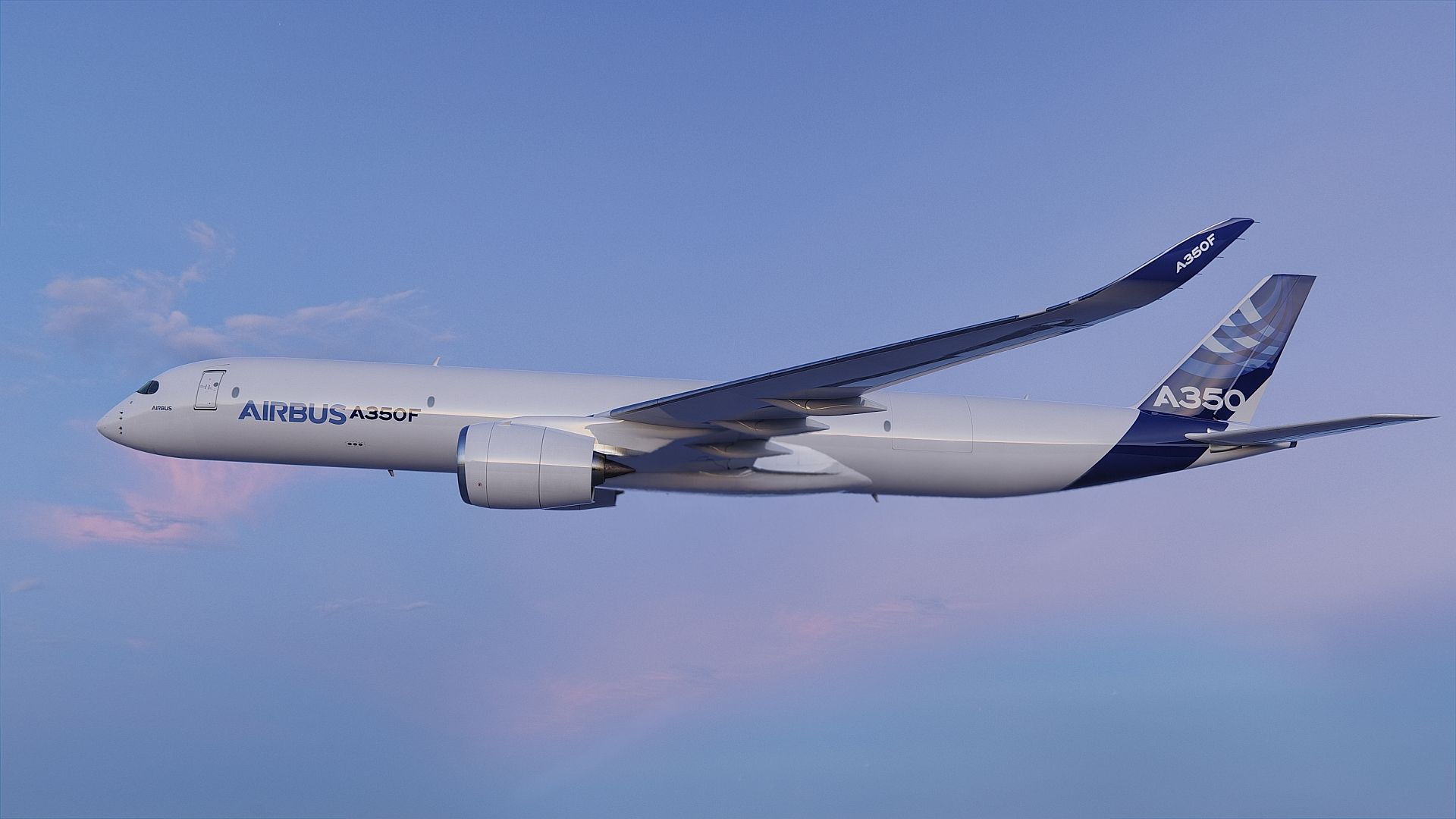
A Royal Air Force Poseidon MRA1 maritime patrol aircraft has operated from Iceland to conduct joint anti-submarine training in the North Atlantic.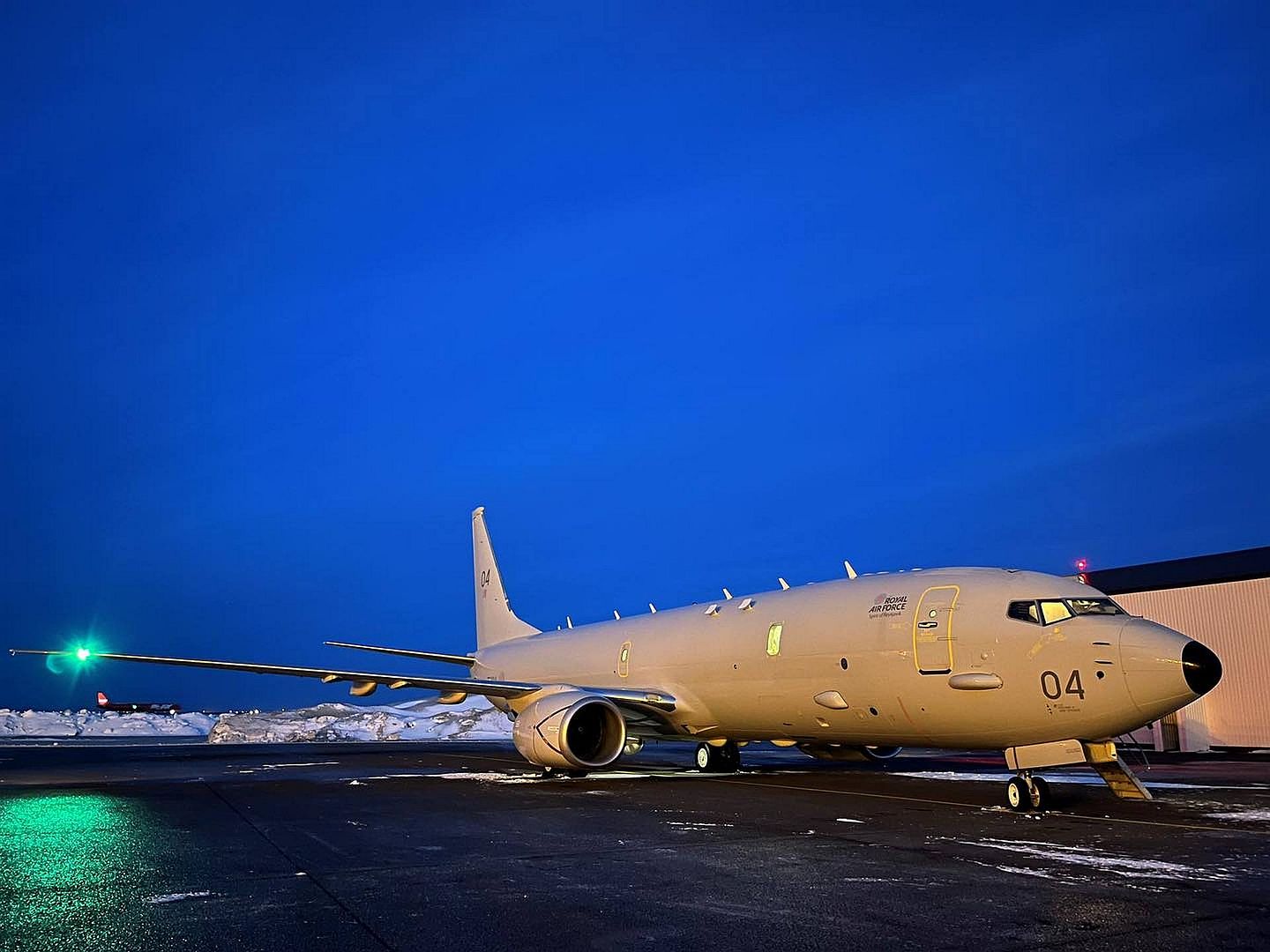
The Poseidon crew from CXX Squadron, RAF Lossiemouth, trained with colleagues from the U.S. Navy and flew sorties from Keflavik Air Base.
The aircraft involved, serial ZP804, is named the ‘Spirit of Reykjavik’ in honour of the contribution made by the Icelandic capital and its people in enabling the Allied victory during the Battle of the Atlantic.
(Photos courtesy of the RAF)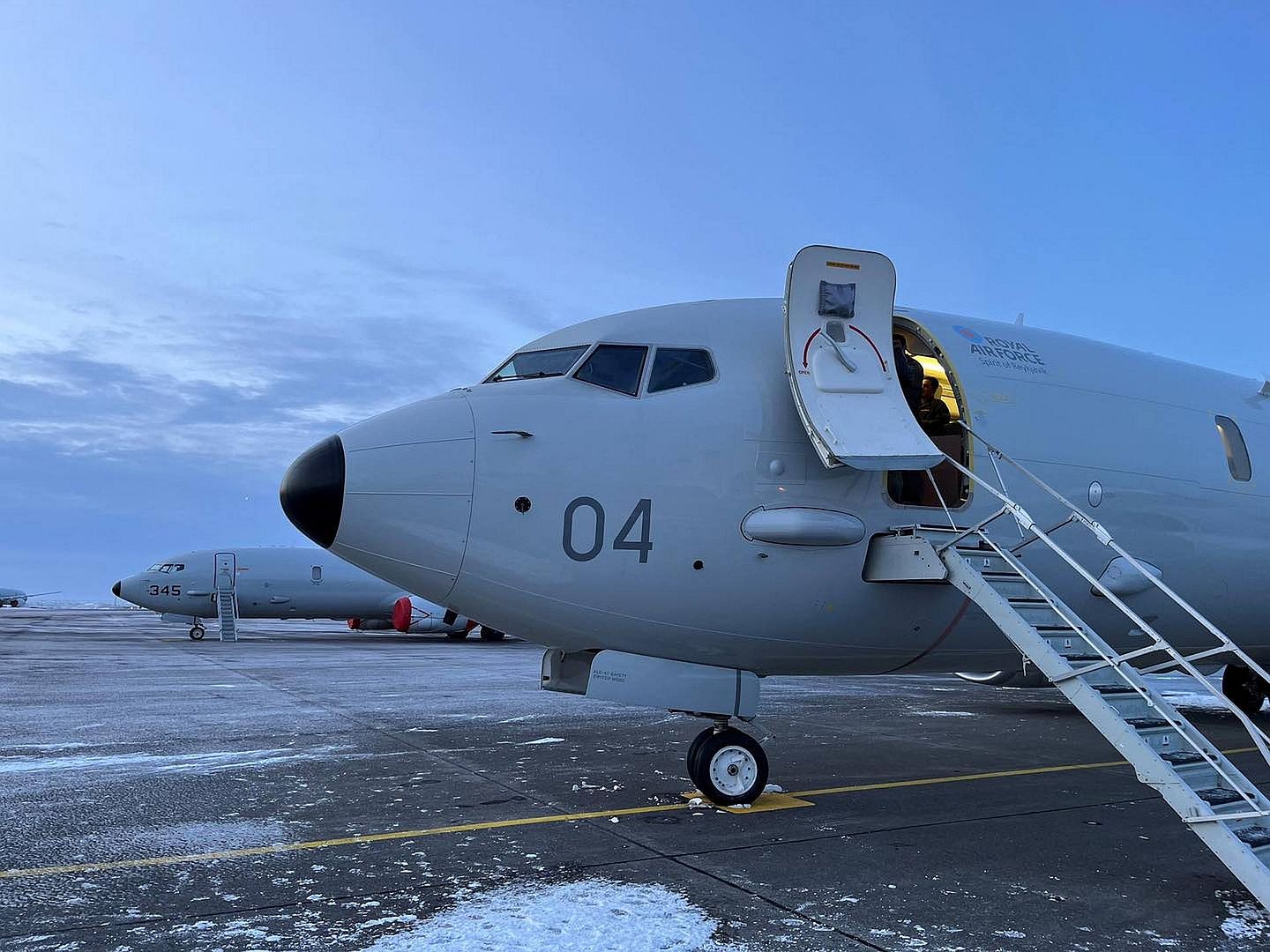
As of February 1, four Dutch F-35s based in Poland will contribute to the monitoring of NATO airspace above Eastern Europe. Four other fighter jets are practicing alongside our allies in the region. The eight F-35s will remain at Malbork airbase until March. The F-35s of the Koninklijke Luchtmacht from the Netherlands contribute to showing NATO presence in the air. Further, the training promotes cooperation within the alliance.
The first fighter jets have just arrived in Poland, the rest will follow later today.
(Photo courtesy of the Koninklijke Luchtmacht)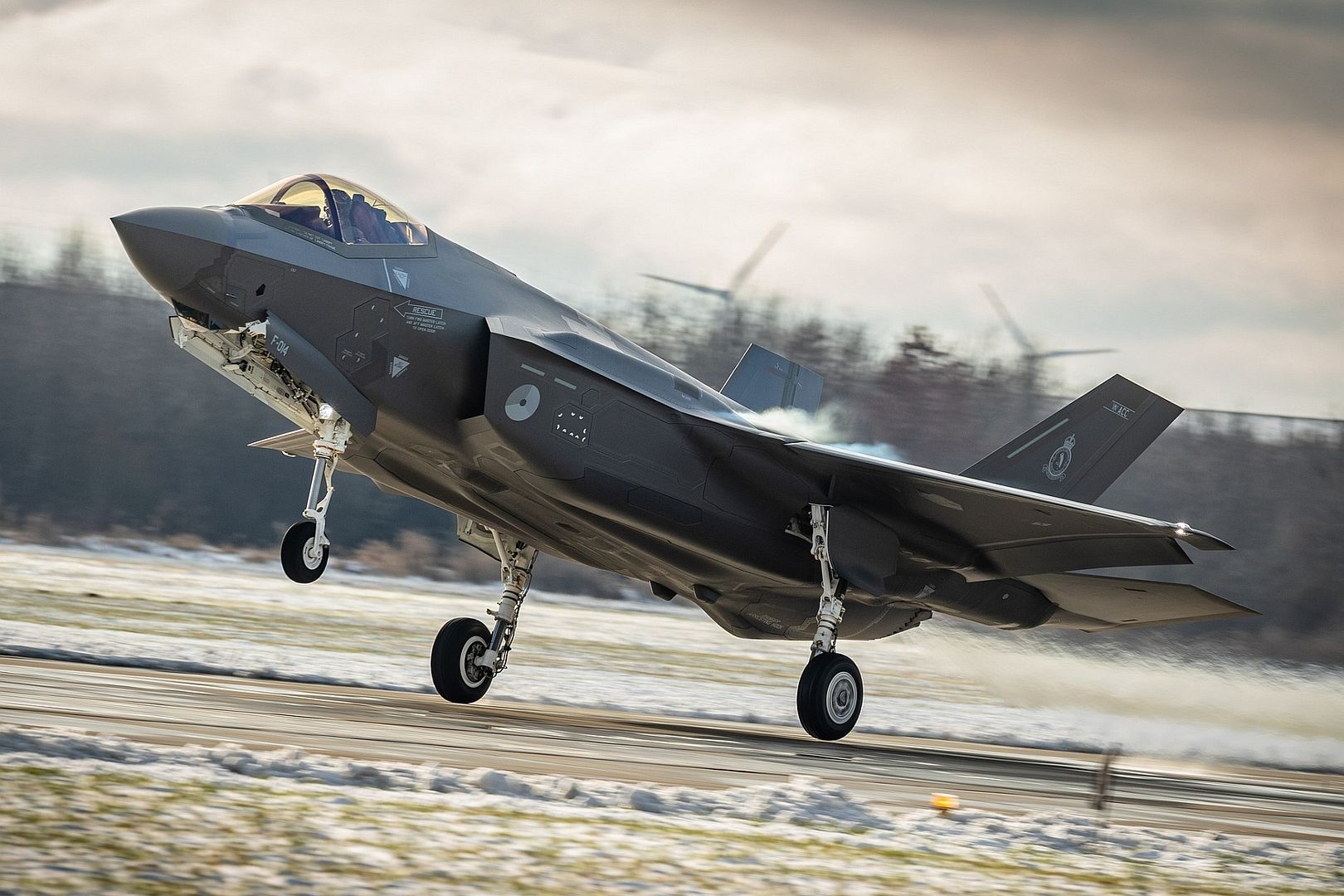
-
 Main Admin01.28.2023
Main Admin01.28.2023
An F-16 from the 149th Fighter Wing, Joint Base San Antonio, Texas, flys along side a KC-135 Stratotanker from the 507th Refueling Wing, Tinker Air Force Base, Oklahoma, during the “Spouse Lift” which gives family members of the 149th Fighter Wing the opportunity to see F-16s refuel in air. The event allows the 149th Fighter Wing to give back and show their appreciation to the families of their members. (U.S. Air National Guard photo by Airman 1st Class Derek Gutierrez)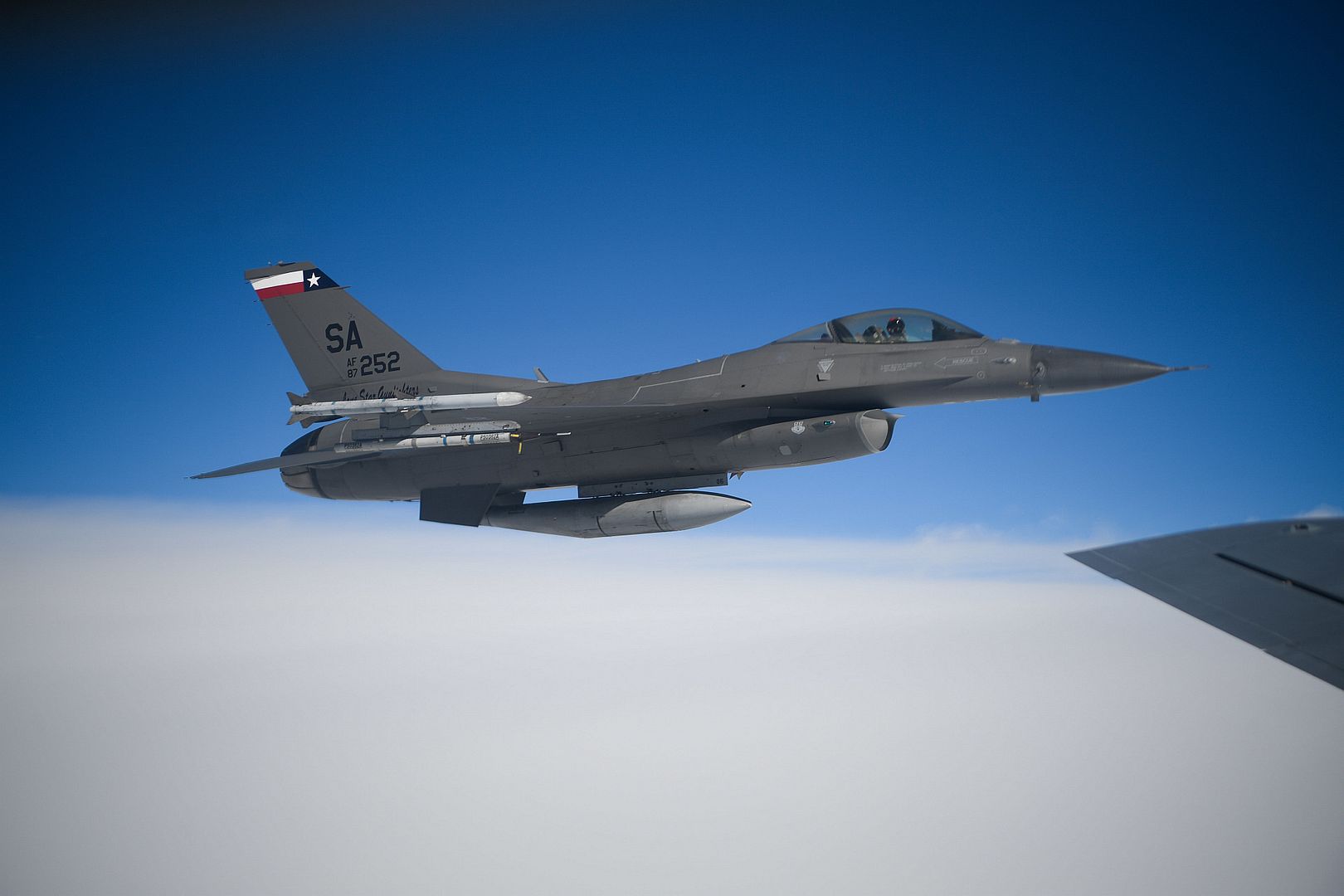
A U.S. Air Force F-16 Fighting Falcon, assigned to the Ohio National Guard’s 180th Fighter Wing, takes off for a training flight at the 180FW in Swanton, Ohio, Jan. 8, 2023. The 180FW is the only F-16 fighter wing in the state of Ohio, whose mission is to provide for America; protection of the homeland, effective combat power and defense support to civil authorities, while developing Airmen, supporting their families and serving in our community.
(U.S. Air National Guard photo by Staff Sgt. Kregg York)
F-16C Fighting Falcons assigned to the 64th Aggressor Squadron at Nellis Air Force Base, Nevada, await take-off during Red Flag 23-1, Jan. 23, 2023. Red Flag provides participants the opportunity to plan and employ together in a contested, degraded and operationally limited environment. (U.S. Air Force photo by Senior Airman Megan Estrada)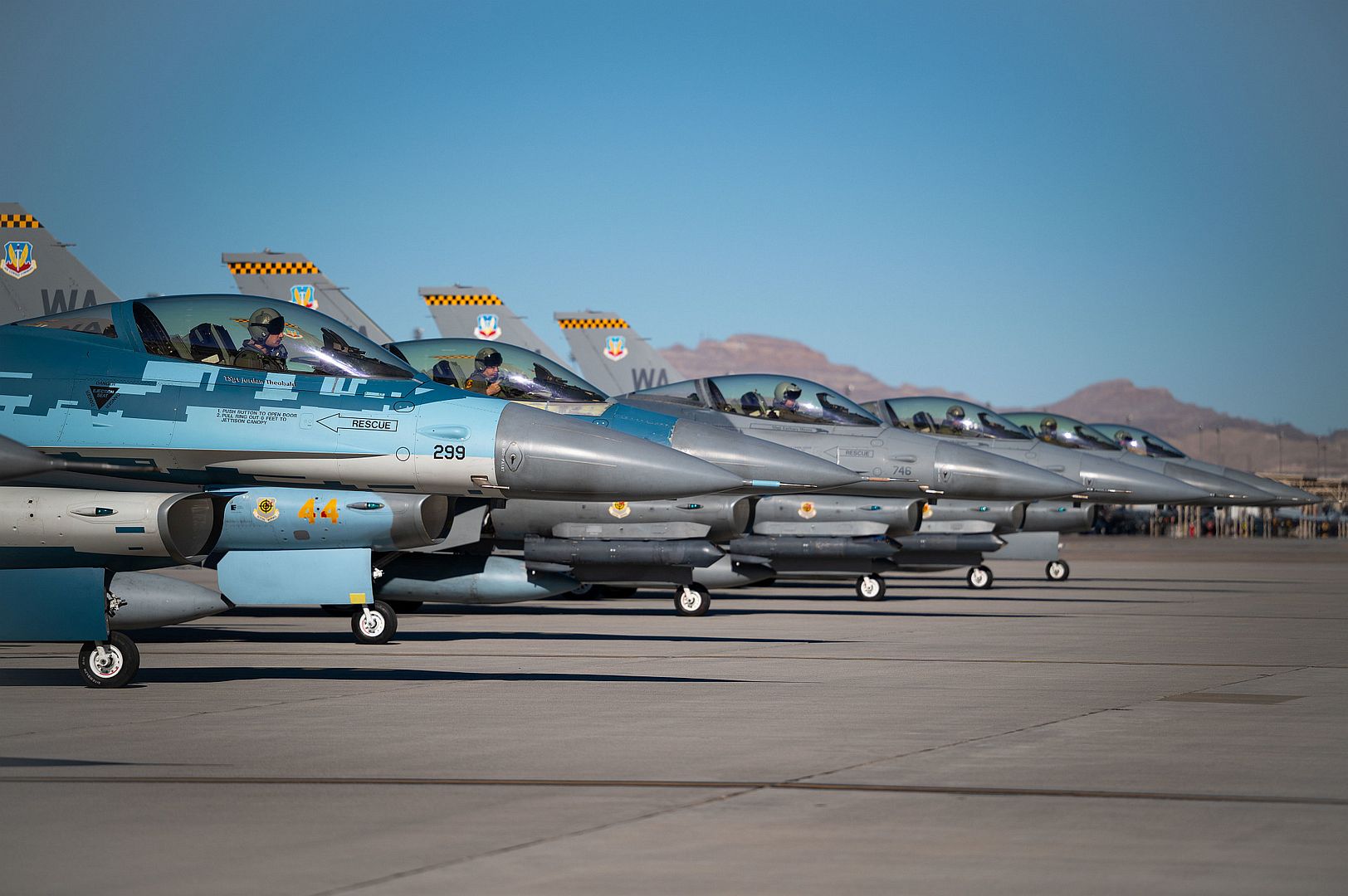
PALMDALE, Calif., Jan. 30, 2023 /PRNewswire/ -- The Defense Advanced Research Projects Agency (DARPA), Air Force Research Lab (AFRL), Lockheed Martin (NYSE: LMT) and Aerojet Rocketdyne (NYSE: AJRD) team accomplished their primary objectives during its second Hypersonic Air-breathing Weapon Concept (HAWC) flight test doubling the amount of scramjet powered vehicle data.
Launching from a B-52, the HAWC system's first stage boosted it to the targeted engine ignition envelope, where the Aerojet Rocketdyne scramjet engine fired and accelerated the system to speeds in excess of Mach 5. The system performed as predicted travelling more than 300 nautical miles and reaching altitudes above 60,000 feet.
"Affordability and reliability are essential as we work to develop operational hypersonic solutions," said John Clark, vice president and general manager Lockheed Martin Skunk Works®. "Both of our HAWC flight tests launched from an operational aircraft and matched performance models and predictions to aid affordable, rapid development of future hypersonic weapons."
The Lockheed Martin Skunk Works and Aerojet Rocketdyne team worked together to progress low-cost advanced manufacturing technologies, prioritizing extreme durability to vastly reduce piece and part cost. Through the purposeful integration of digital technologies throughout the design, test, and manufacturing process, the team validated that hypersonic systems can be produced affordably at the rates required to meet the urgent national need.
Lockheed Martin's Background in Hypersonic Systems
Lockheed Martin's played a significant role in the research, development and demonstration of hypersonic technologies for close to 60 years. The corporation made significant investments in the development of critical hypersonic technologies needed to enable operational systems to help the U.S. and its allies counter rapidly emerging threats.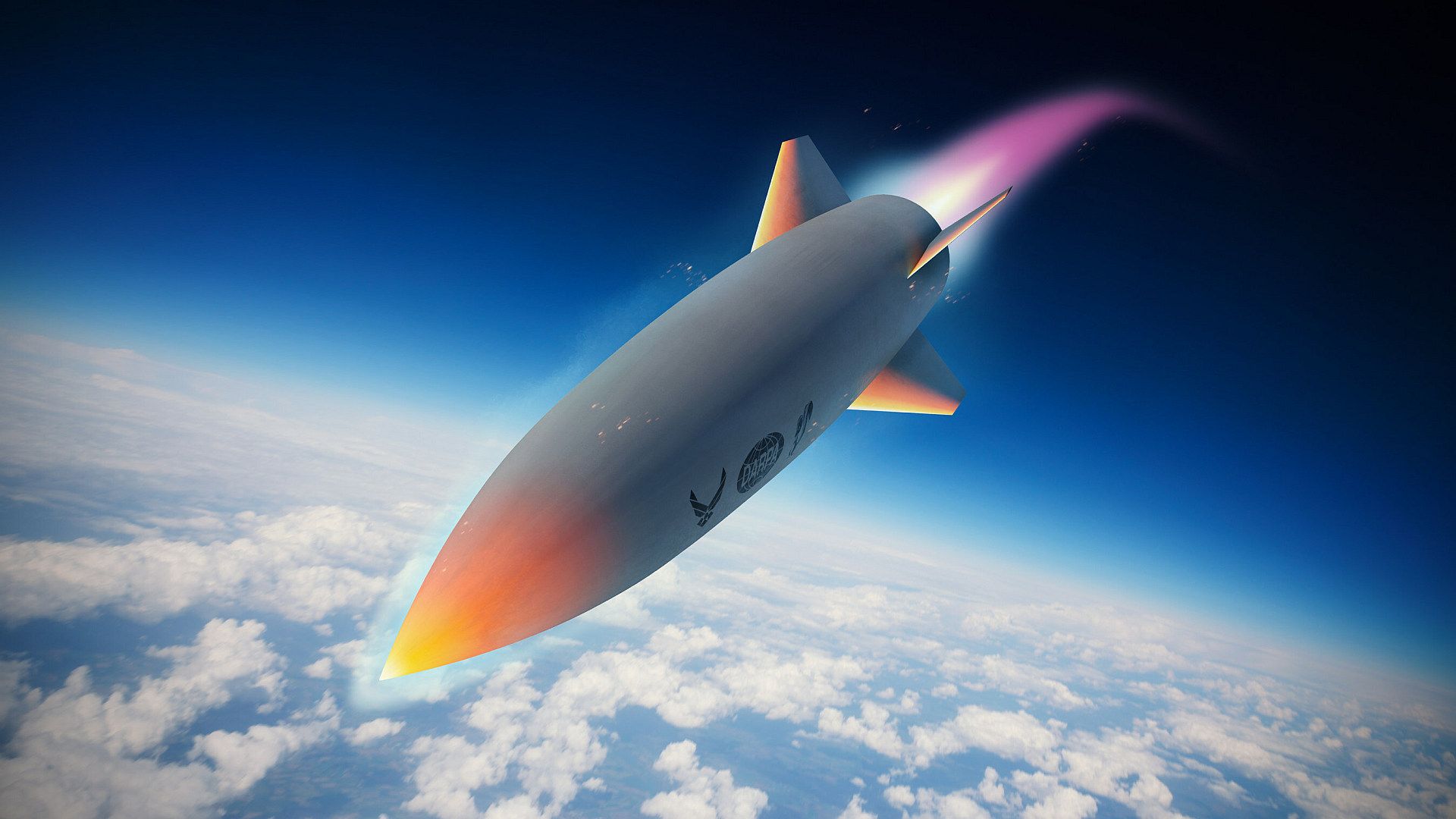
EVERETT, Wash., Jan. 30, 2023― The U.S. Air Force has awarded Boeing [NYSE: BA] a $2.3 billion contract for the ninth production lot of 15 KC-46A Pegasus tanker aircraft, expanding its fleet of the world’s most advanced multi-mission aerial refueler. To date, 128 KC-46A Pegasus are on contract with the U.S. Air Force, with 68 delivered and operationally deployed worldwide.
“The combat-ready KC-46A is transforming the role of the tanker for the 21st century,” said James Burgess, vice president and KC-46 program manager. “We’re proud to work side-by-side with the Air Force ensuring the Pegasus provides unmatched capabilities and continues to evolve for the U.S. and its allies’ global mission needs.”
The KC-46A Pegasus delivers crucial fuel and data for the fleet, as well as cargo, personnel and aeromedical transportation for joint force rapid mobility, global reach and agile combat employment.
Last year, the U.S. Air Force Air Mobility Command approved the KC-46A for global operations including combat deployment. The Pegasus continues to demonstrate its agile combat employment capabilities, recently completing a 42-hour endurance flight supporting a U.S. Air Force Bomber Task Force mission in the Indo-Pacific region.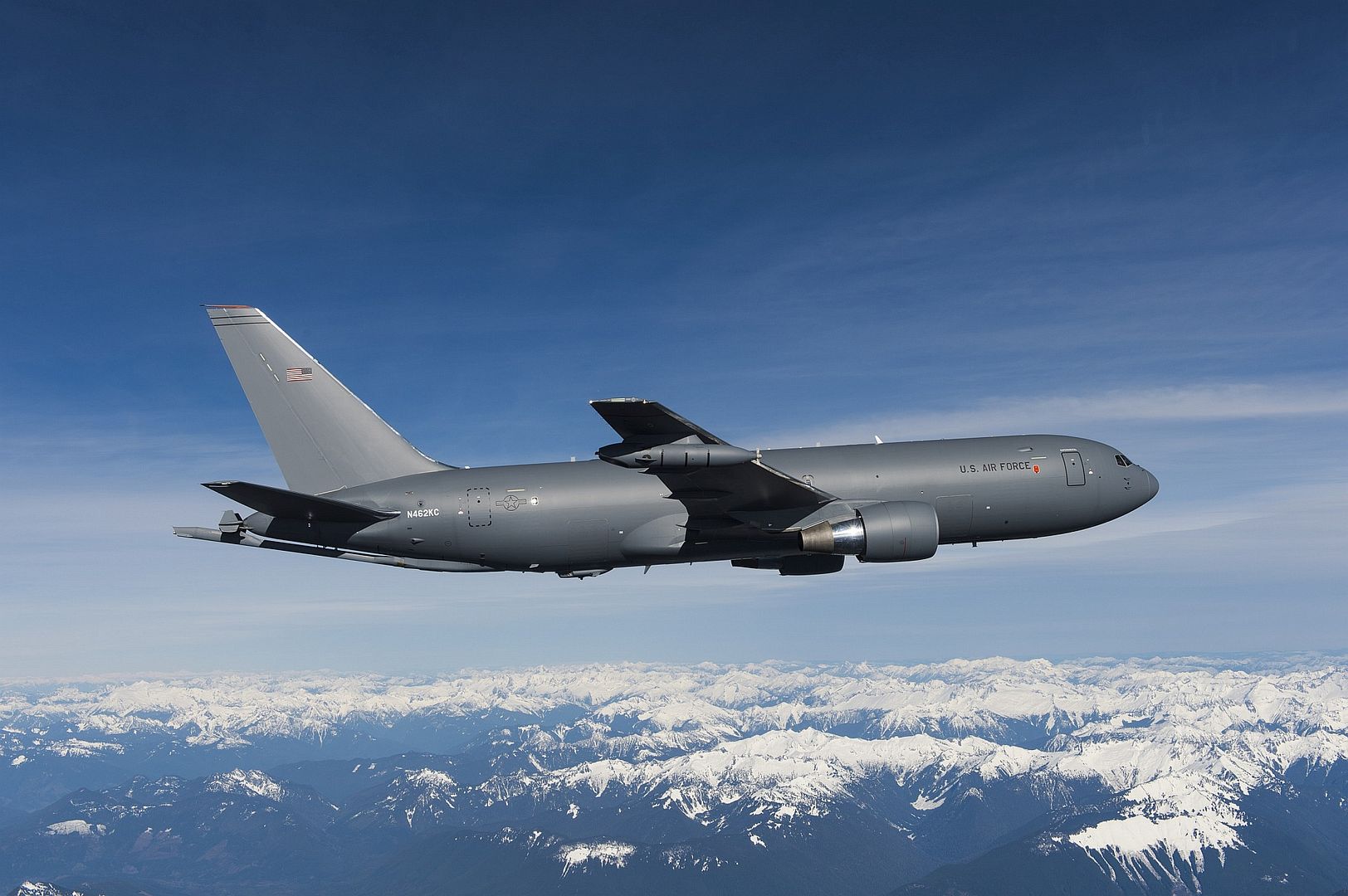
During 2022, KC-46A aircraft operating in a series of U.S. Air Force global employment exercises in the European theater, Indo-Pacific region and the Middle East performed at a greater than 95% mission capable rate, demonstrating the aircraft’s reliability and combat readiness.
Boeing builds KC-46A aircraft on the 767 production line in Everett, Wash., supported by a supplier network of about 37,000 American workers employed by more than 650 businesses throughout more than 40 U.S. states. With Boeing’s in-line production, the KC-46A is designed and built as a tanker from day one — not a post-production conversion — making the Pegasus uniquely suited to integrate advanced technology for fleet data connectivity and combat-ready defensive features, as well as new capabilities as the needs of the mission evolve.
Boeing is on contract for 138 KC-46A Pegasus tankers globally. Boeing has delivered two of six KC-46A tankers to the Japan Air Self-Defense Force, and is on contract for four KC-46A tankers for the Israel Air Force. The expanding global fleet creates commonality and interoperability efficiencies and mission-readiness advantages for the U.S. Air Force and allies.
As a leading global aerospace company, Boeing develops, manufactures and services commercial airplanes, defense products and space systems for customers in more than 150 countries. As a top U.S. exporter, the company leverages the talents of a global supplier base to advance economic opportunity, sustainability and community impact. Boeing’s diverse team is committed to innovating for the future, leading with sustainability, and cultivating a culture based on the company's core values of safety, quality and integrity. Join our team and find your purpose at boeing.com/careers.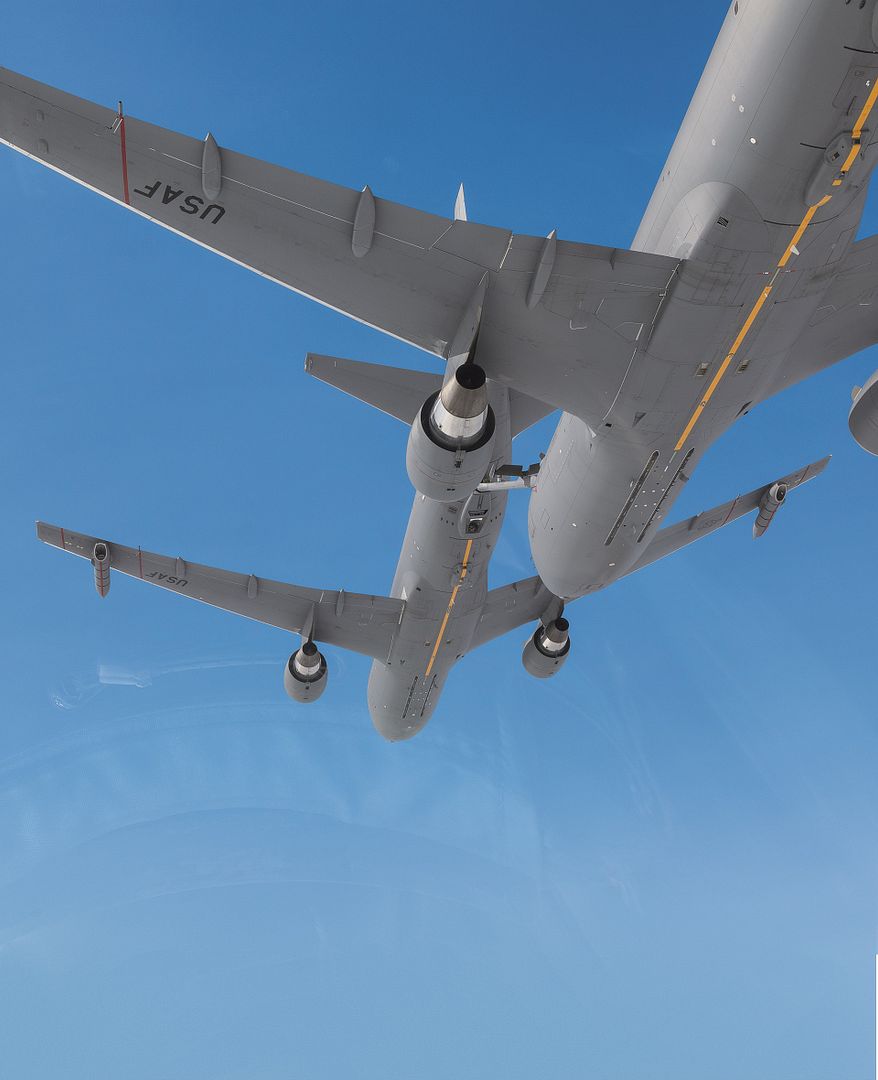
Post a reply
- Go to Previous topic
- Go to Next topic
- Go to Welcome
- Go to Introduce Yourself
- Go to General Discussion
- Go to Screenshots, Images and Videos
- Go to Off topic
- Go to Works in Progress
- Go to Skinning Tips / Tutorials
- Go to Skin Requests
- Go to IJAAF Library
- Go to Luftwaffe Library
- Go to RAF Library
- Go to USAAF / USN Library
- Go to Misc Library
- Go to The Ops Room
- Go to Made in Germany
- Go to Campaigns and Missions
- Go to Works in Progress
- Go to Juri's Air-Raid Shelter
- Go to Campaigns and Missions
- Go to Works in Progress
- Go to Skinpacks
- Go to External Projects Discussion
- Go to Books & Resources
